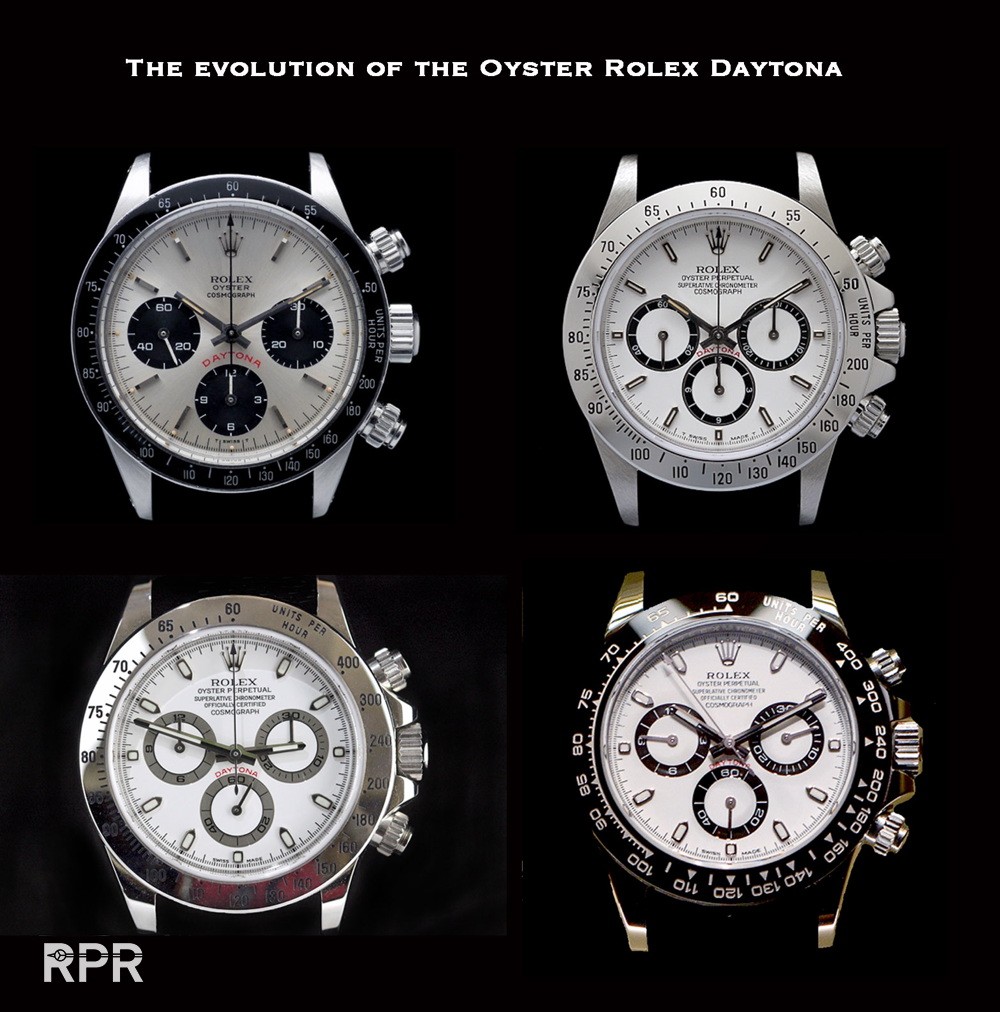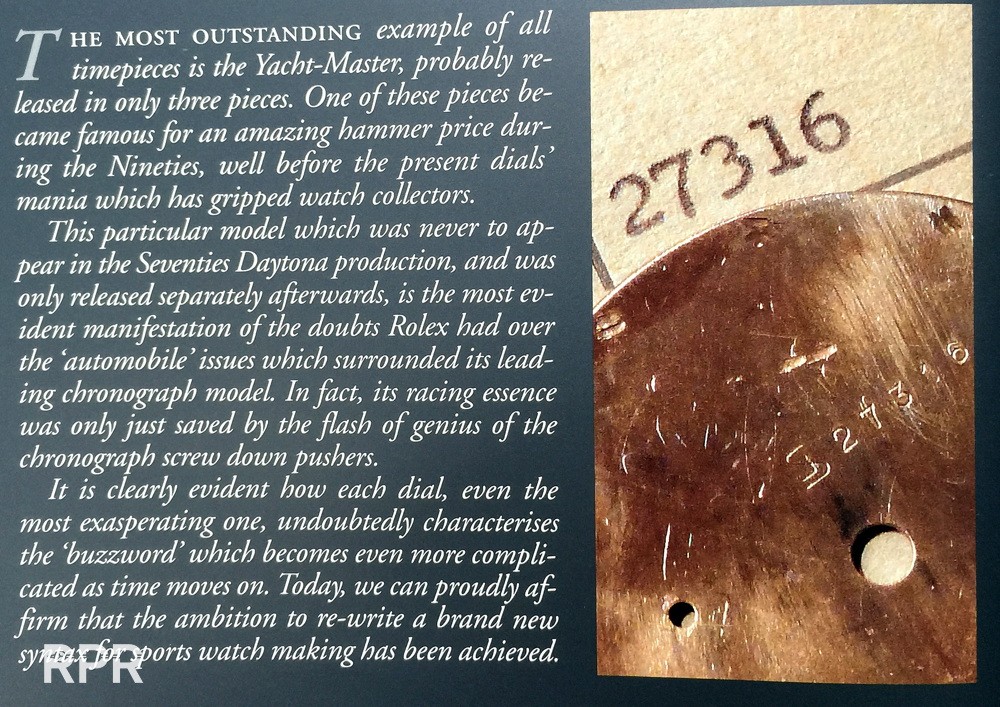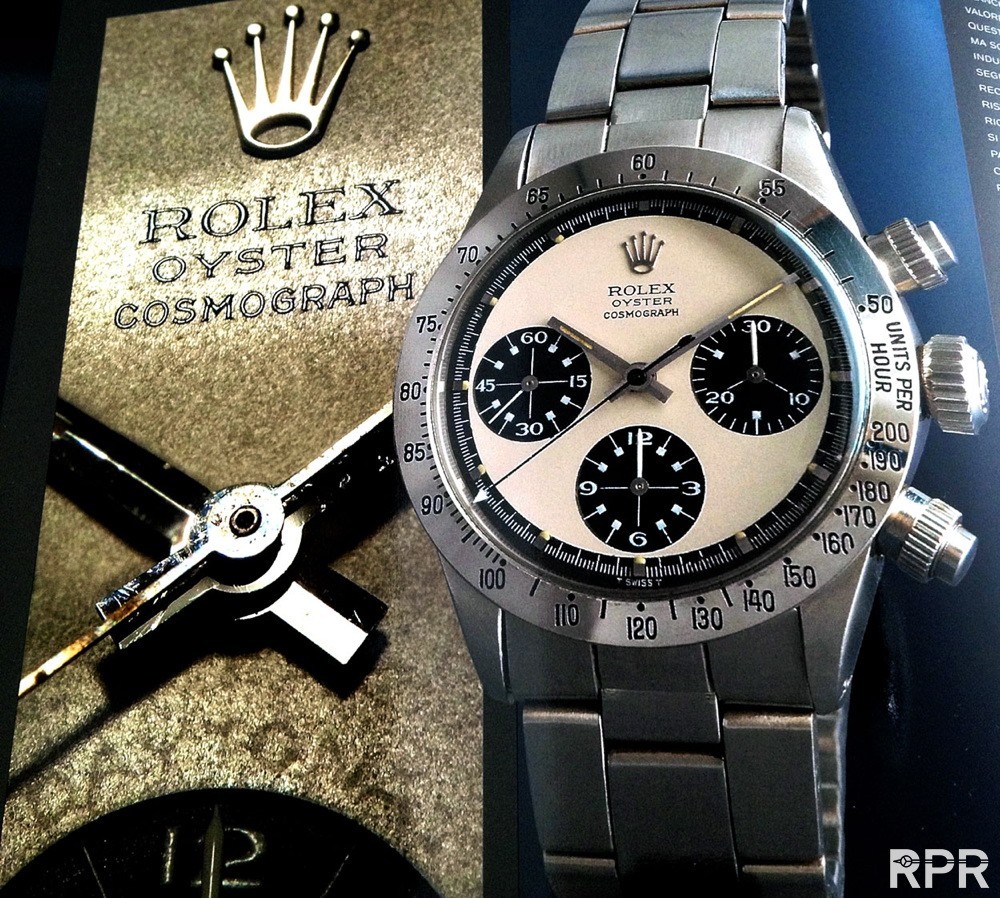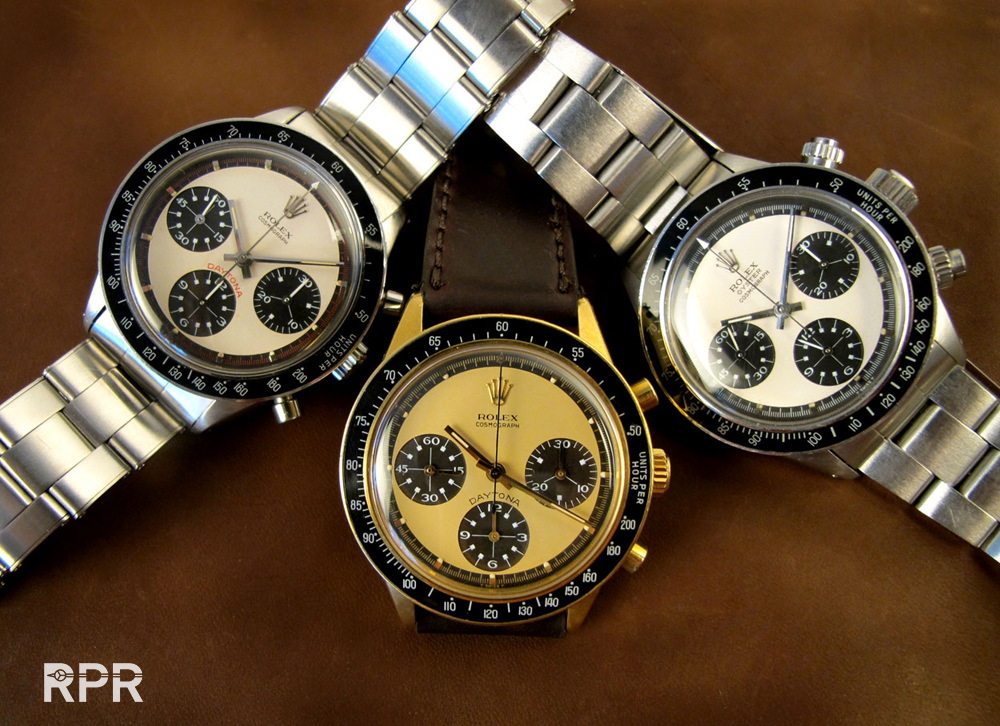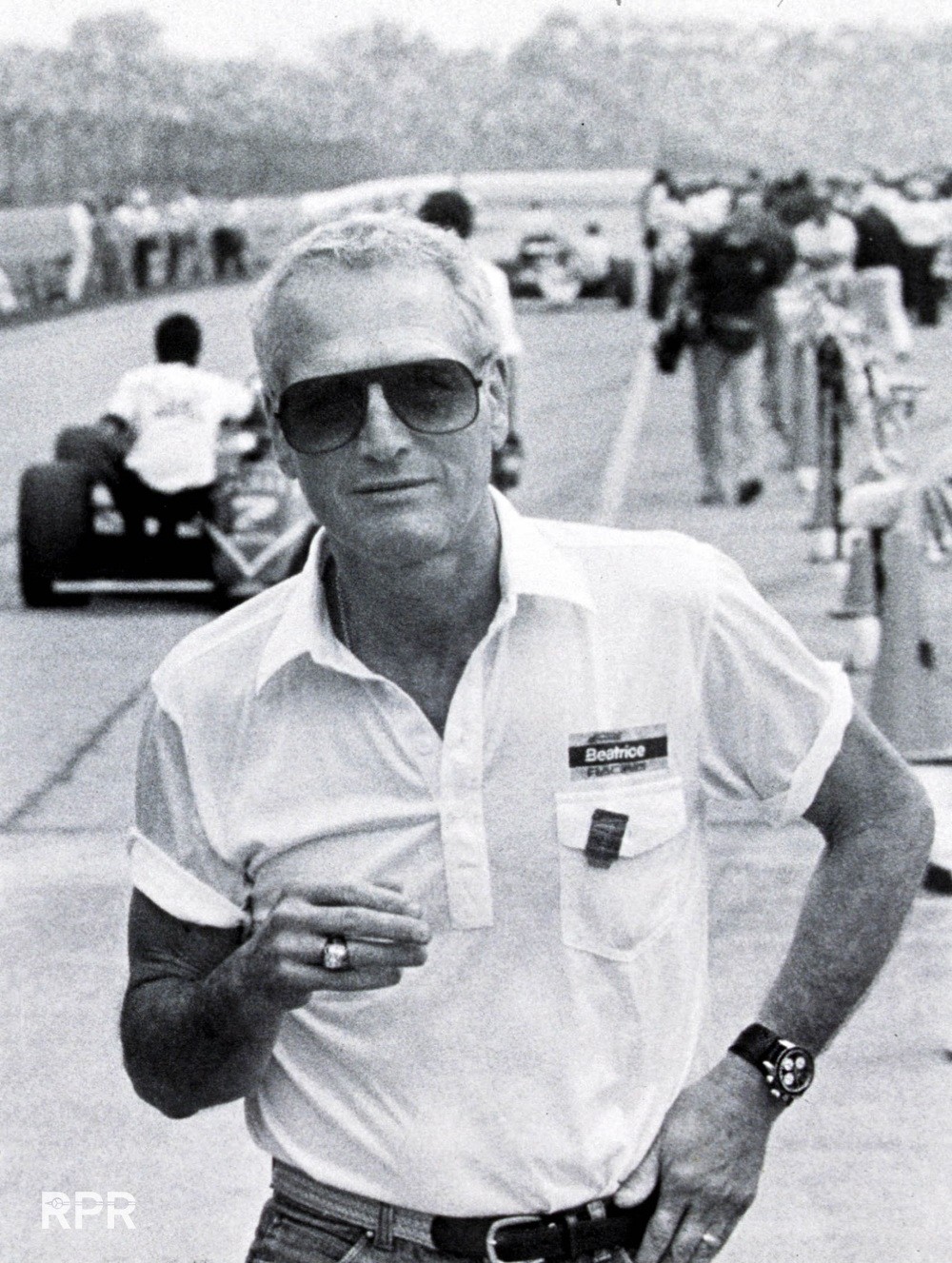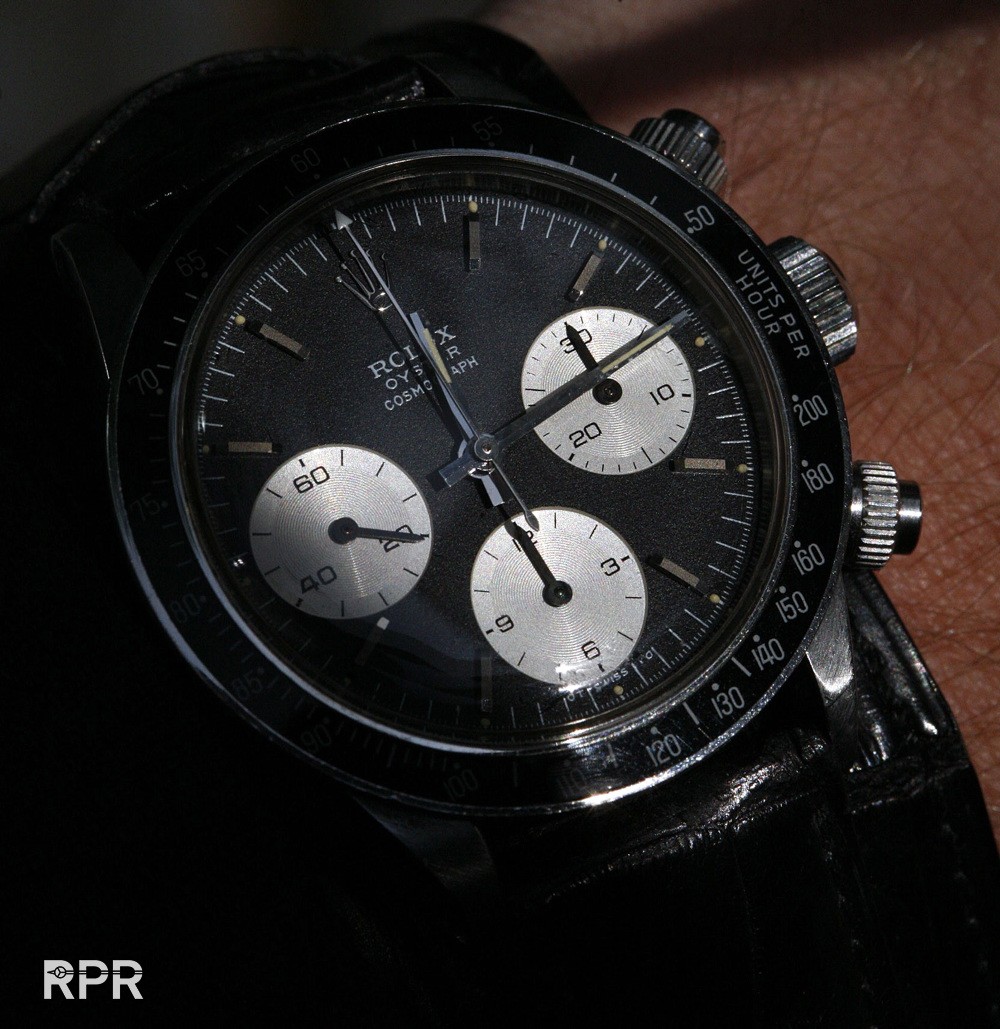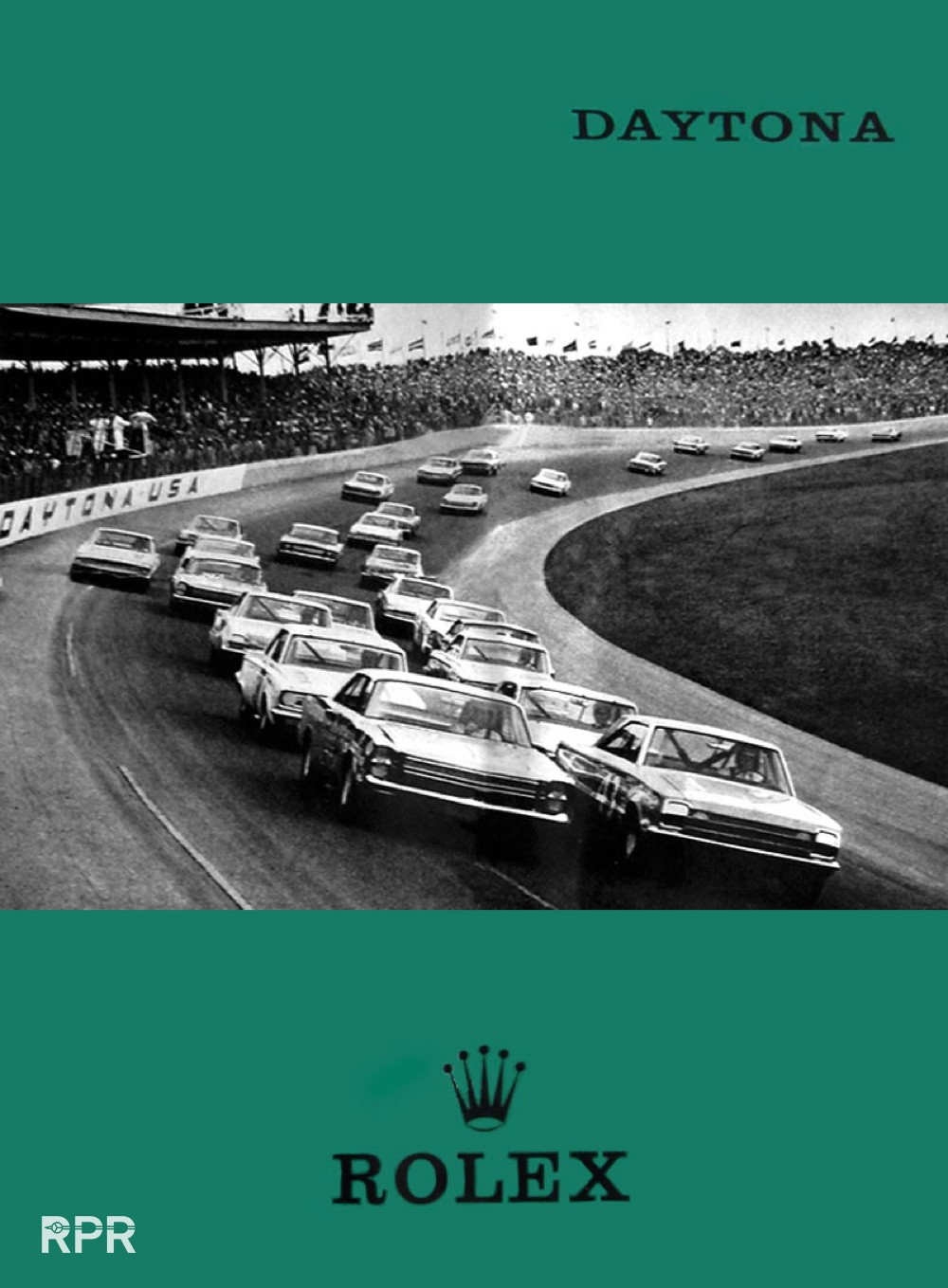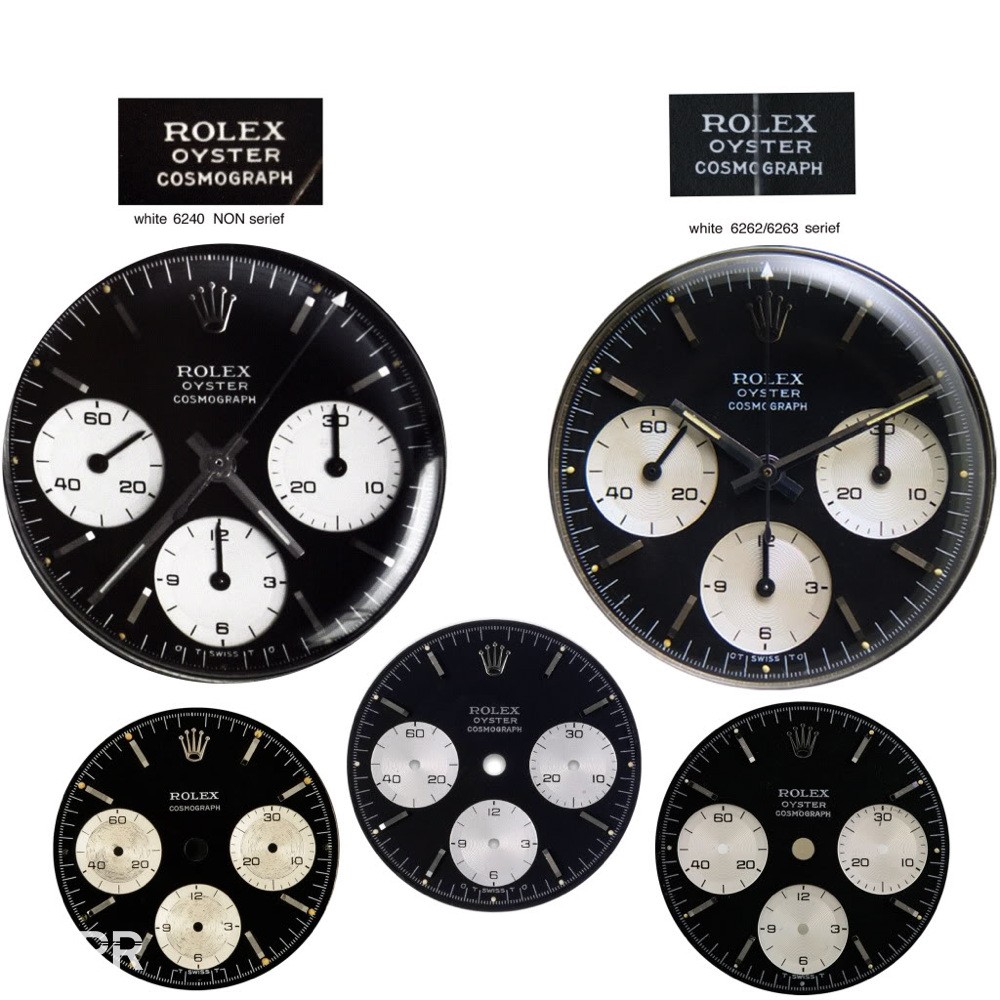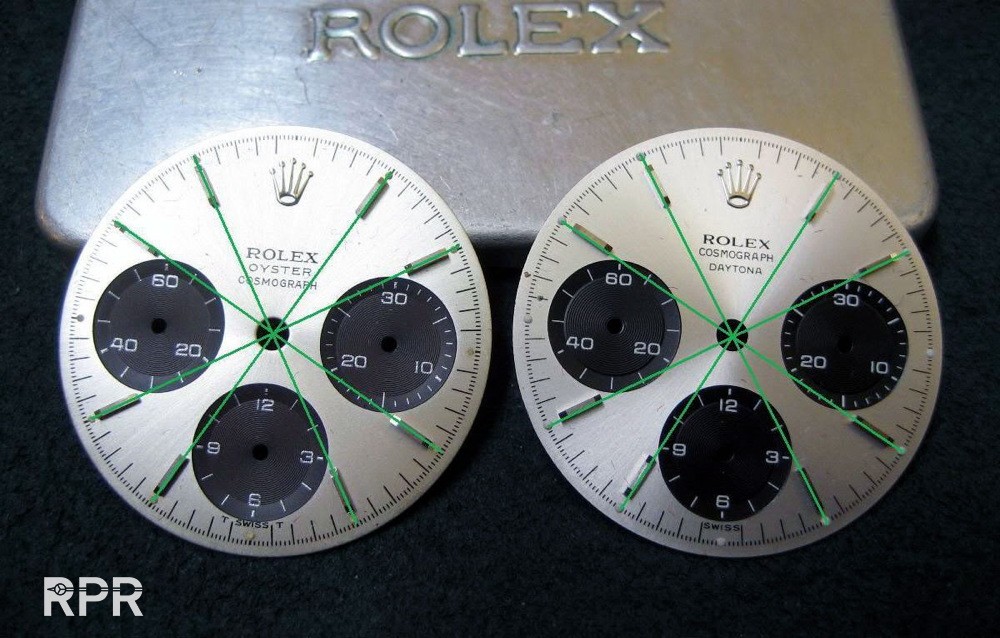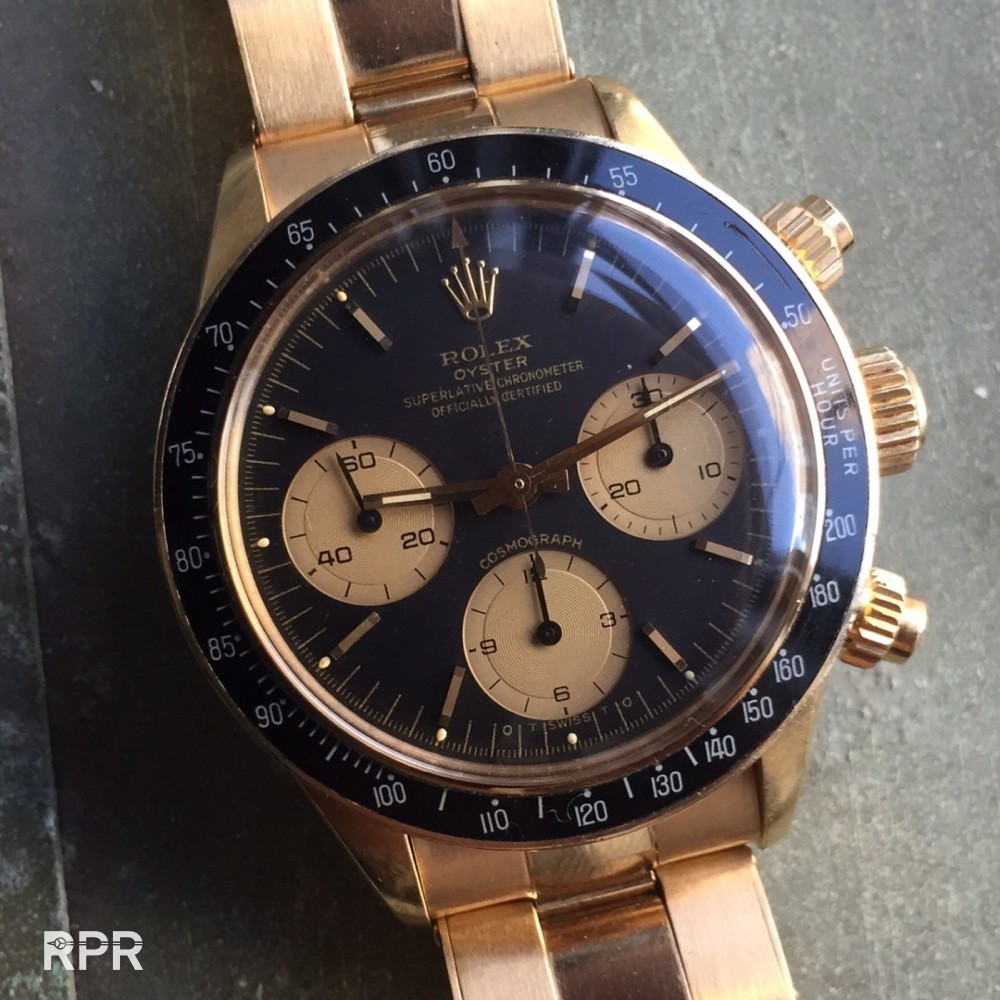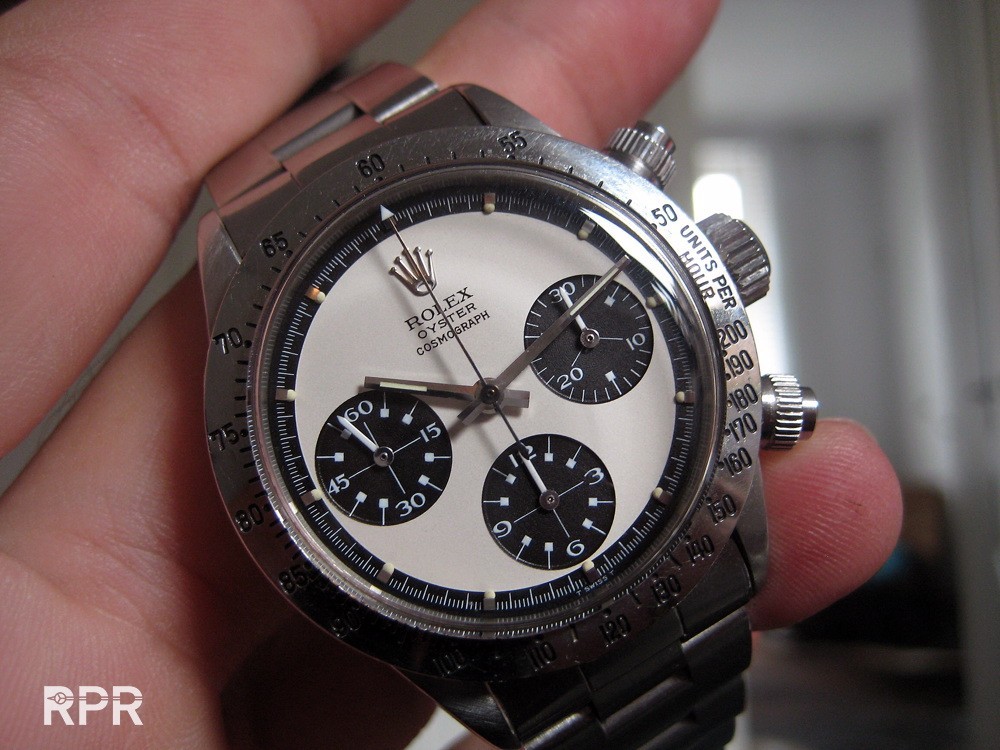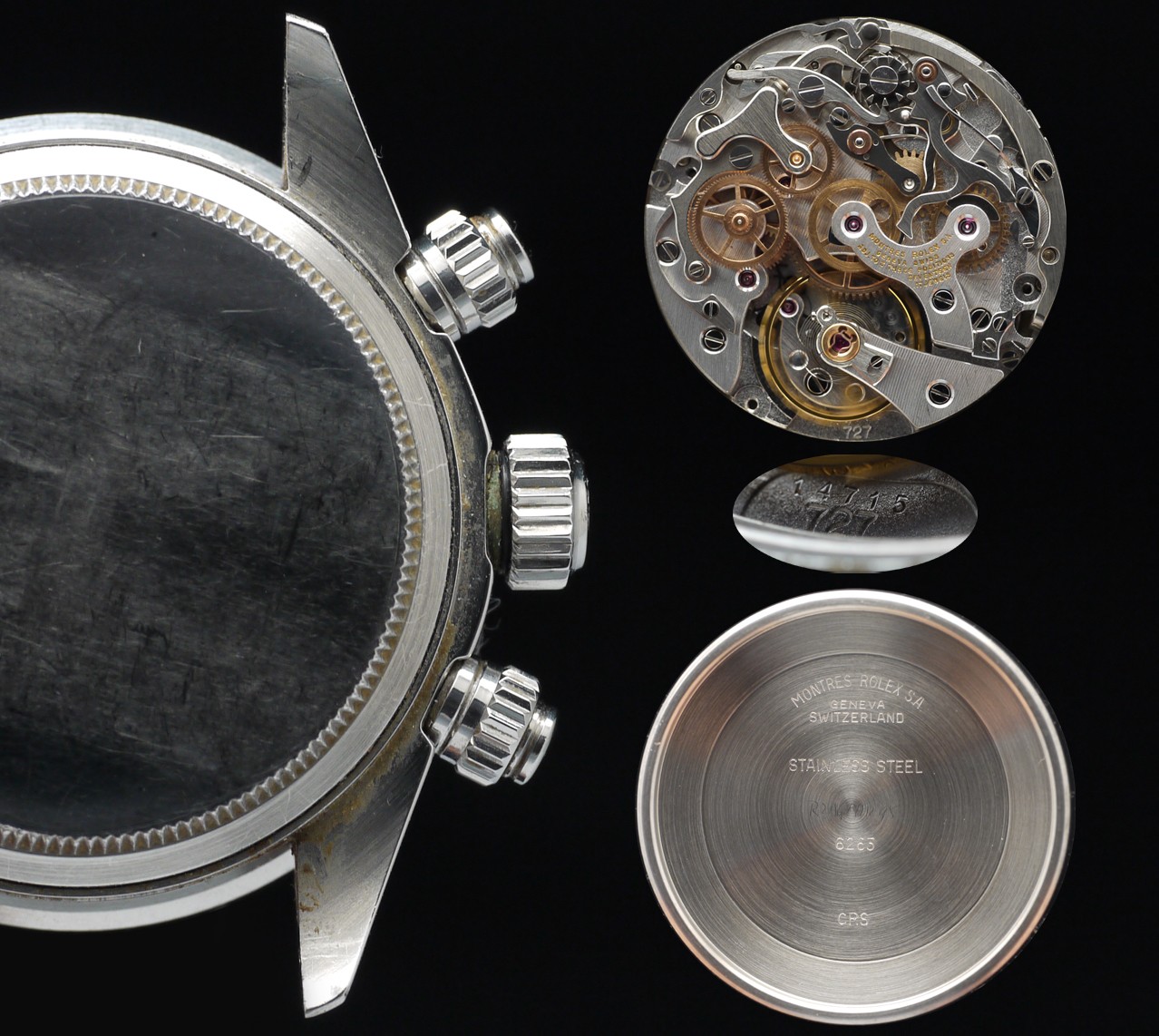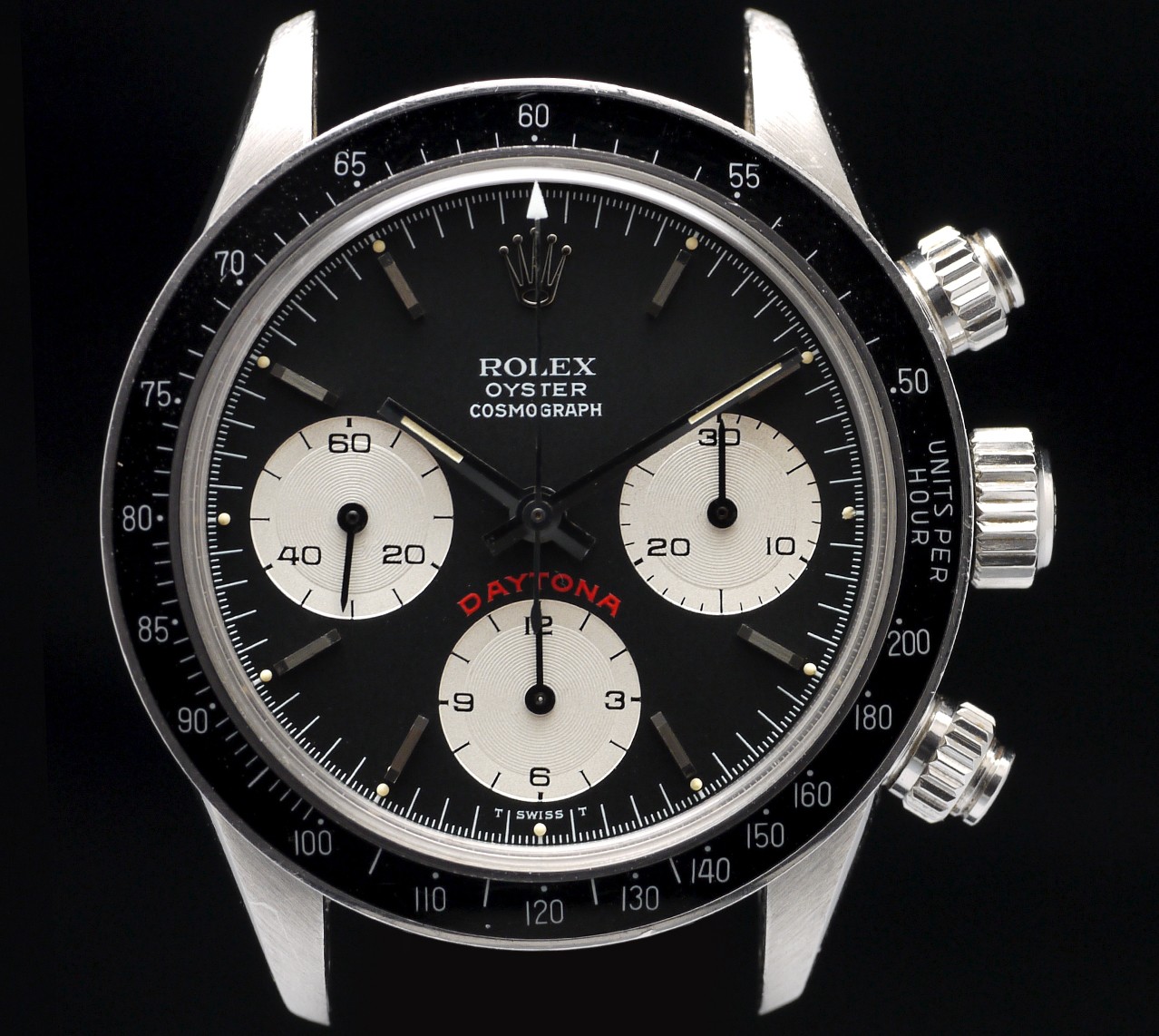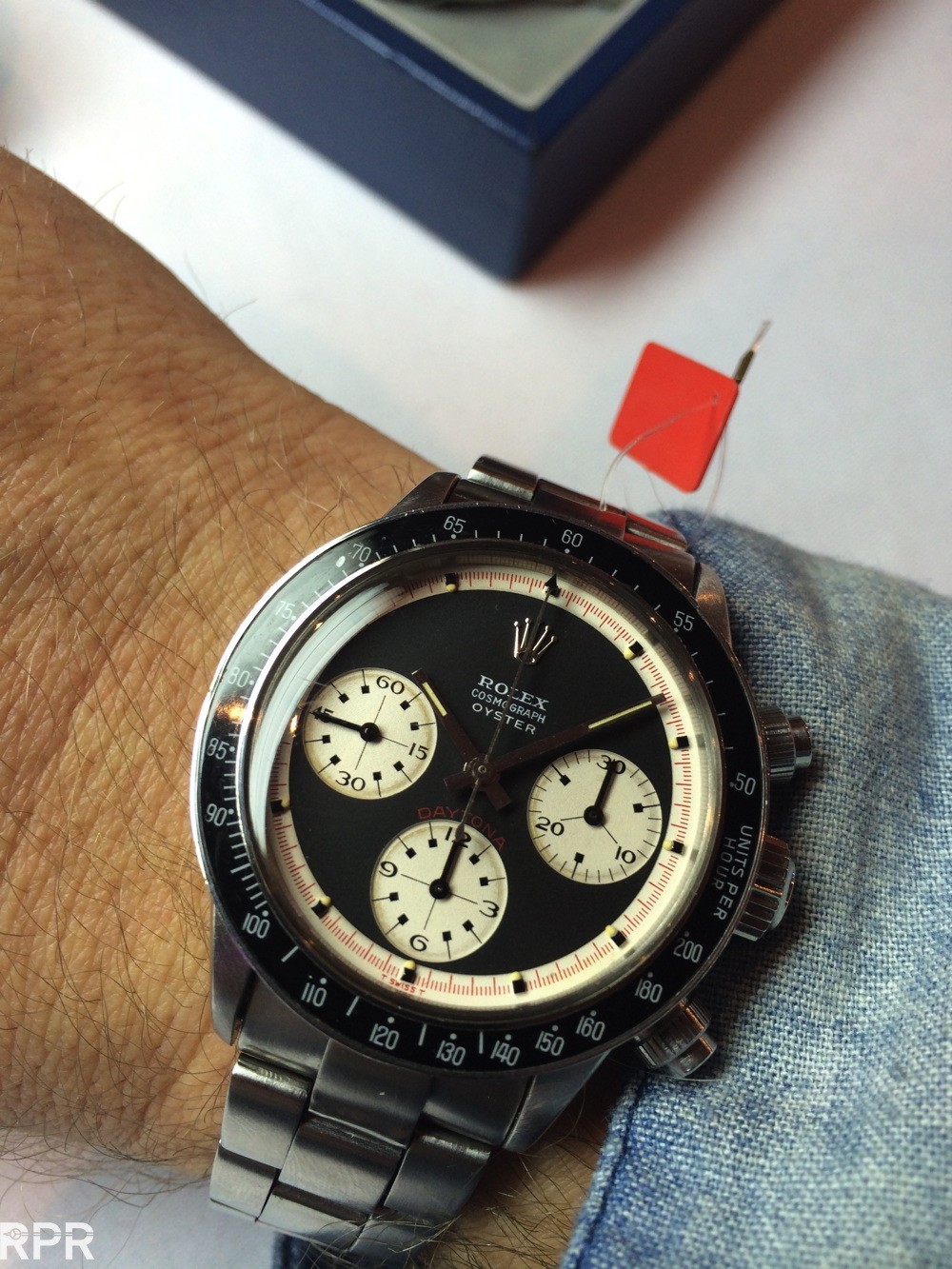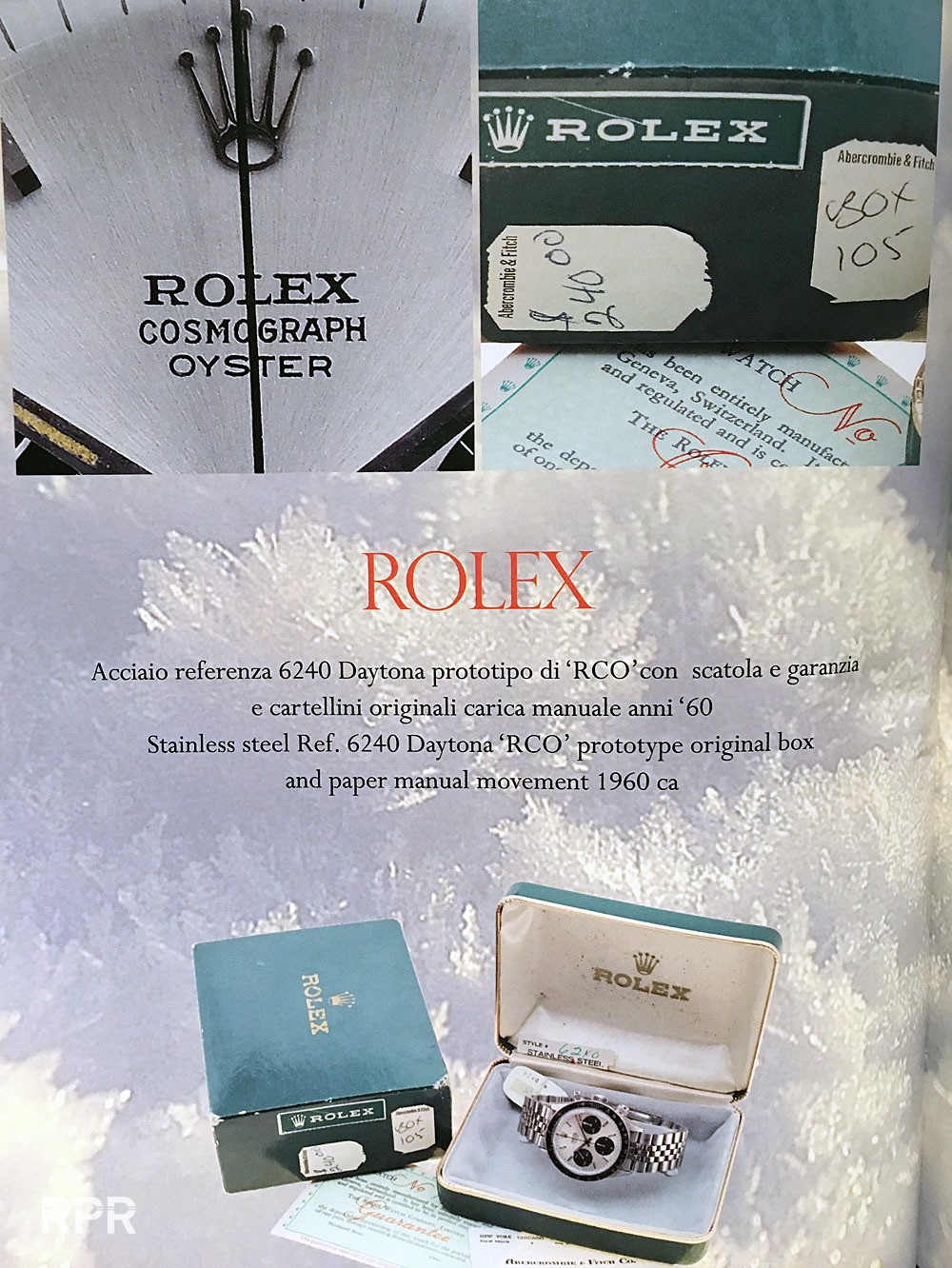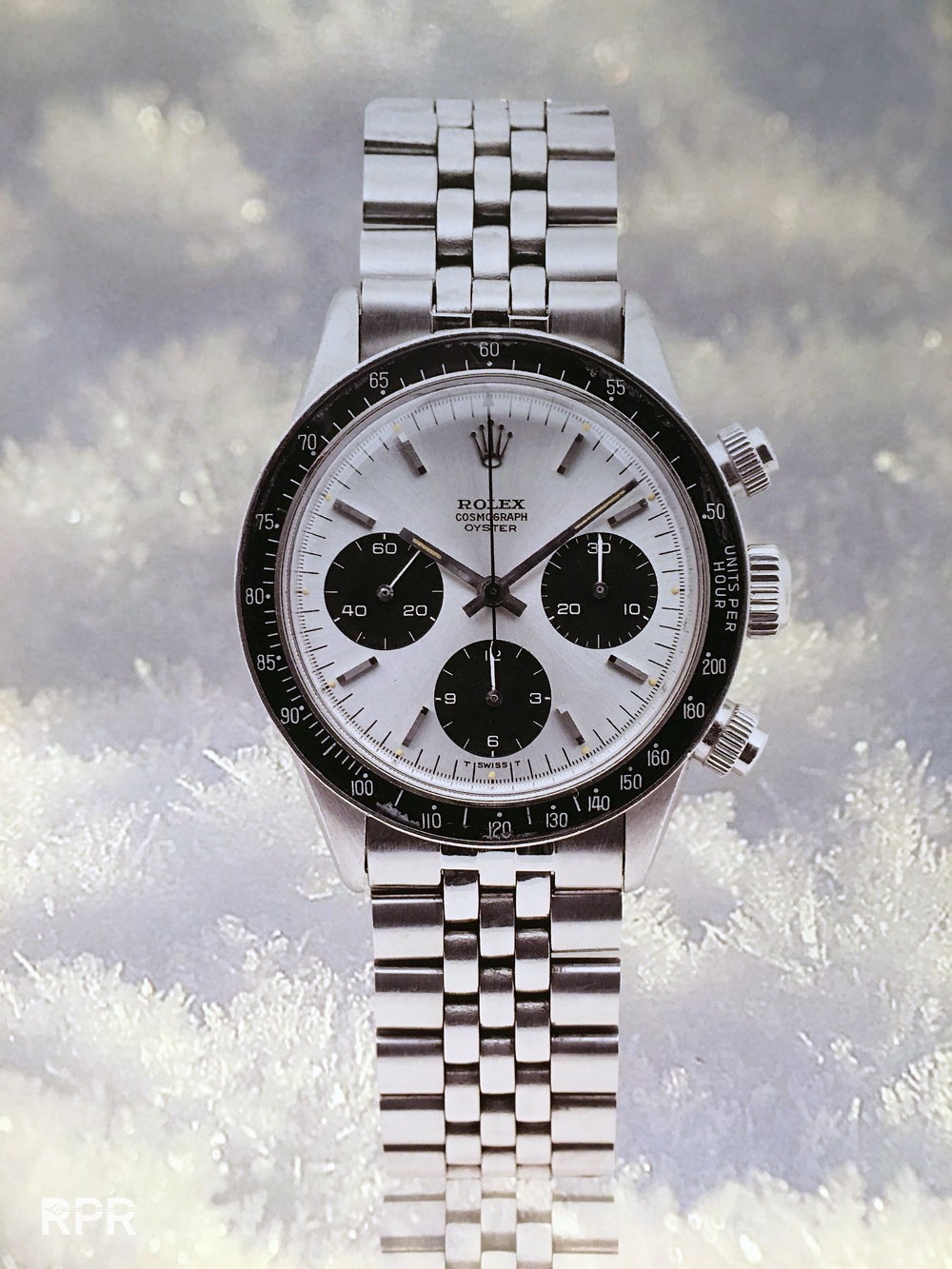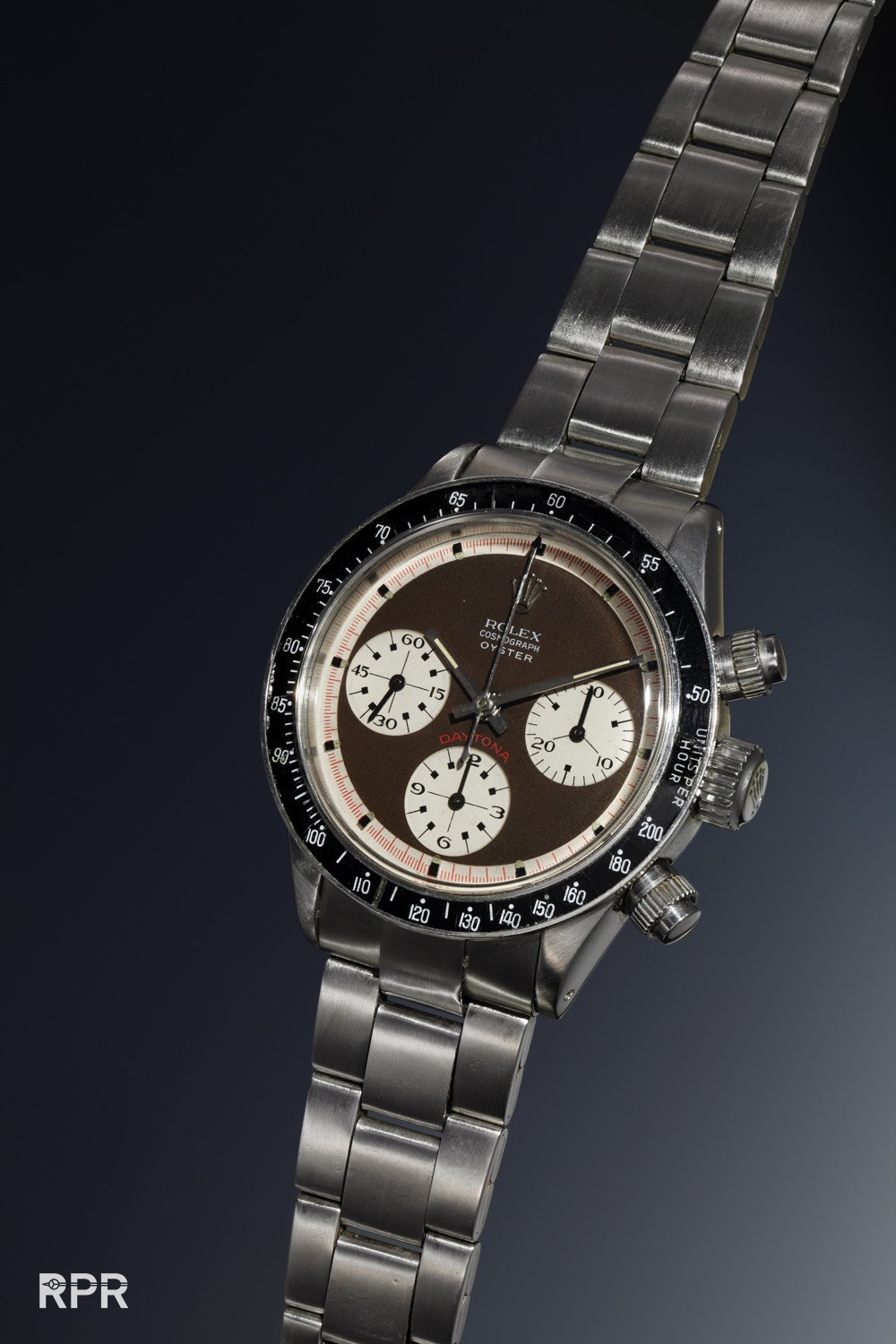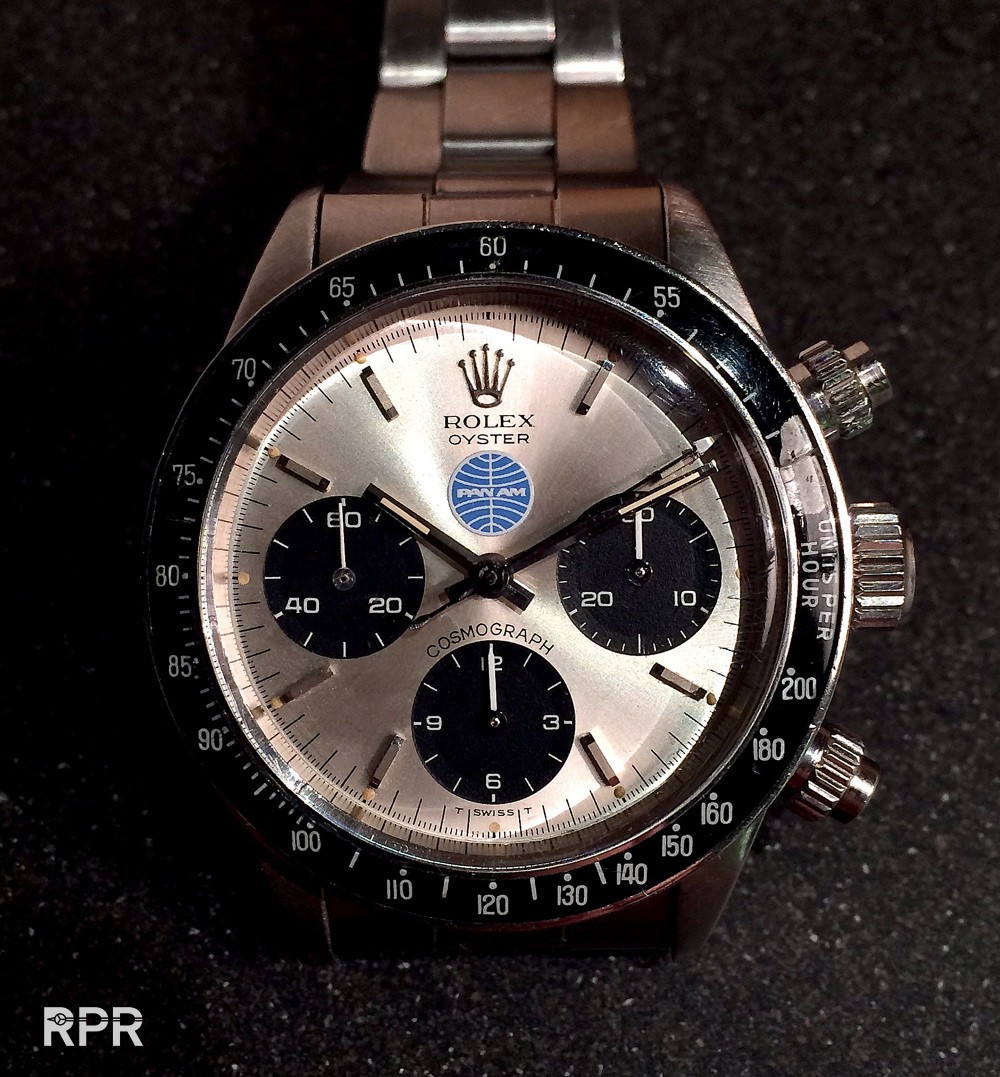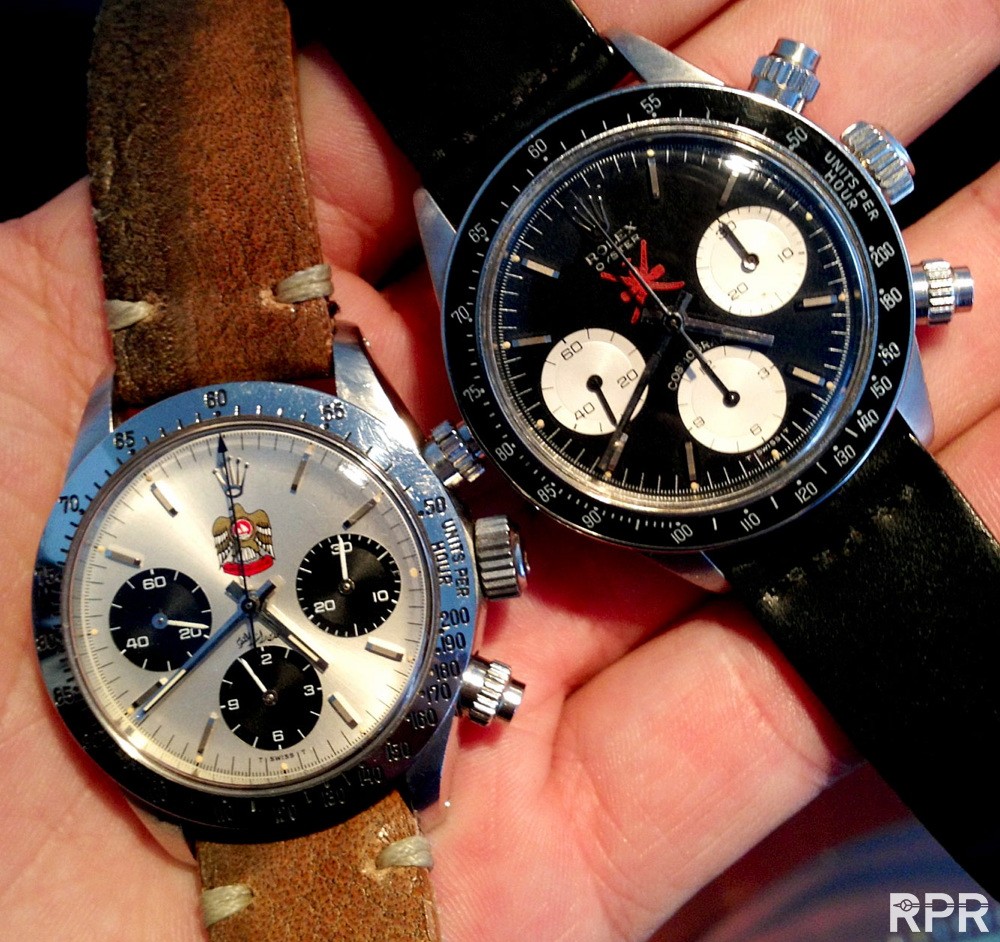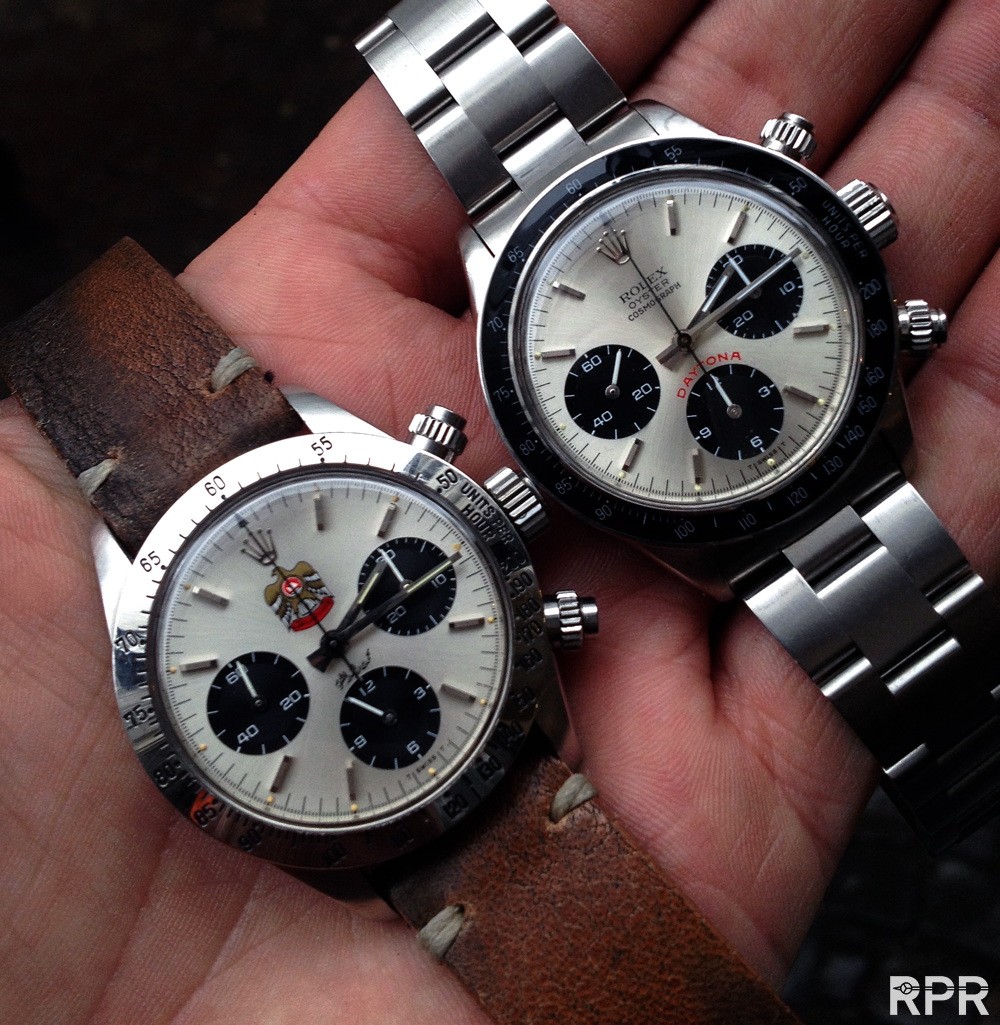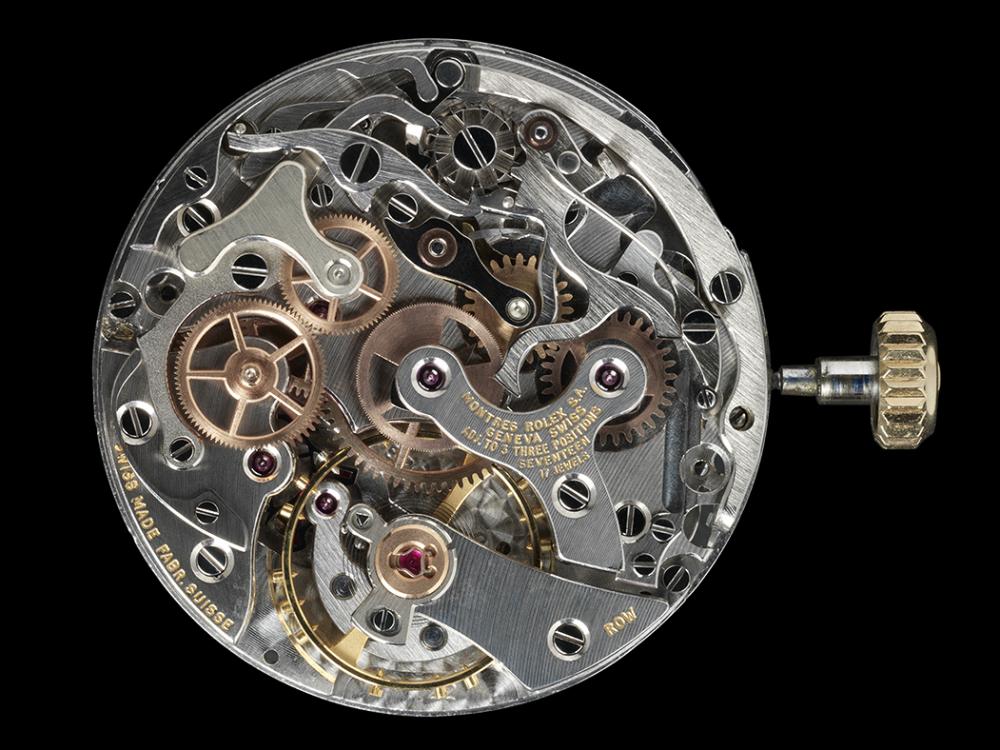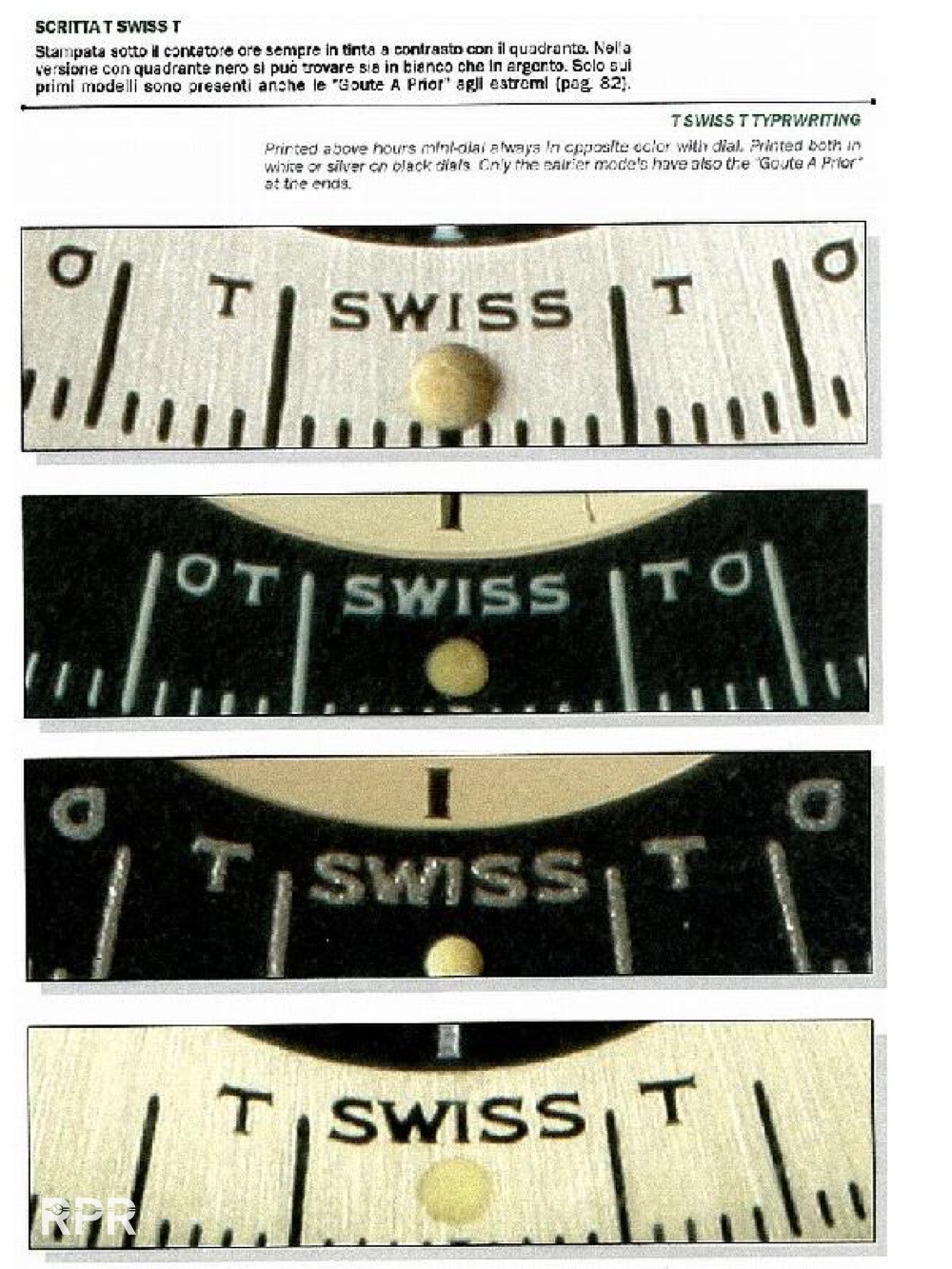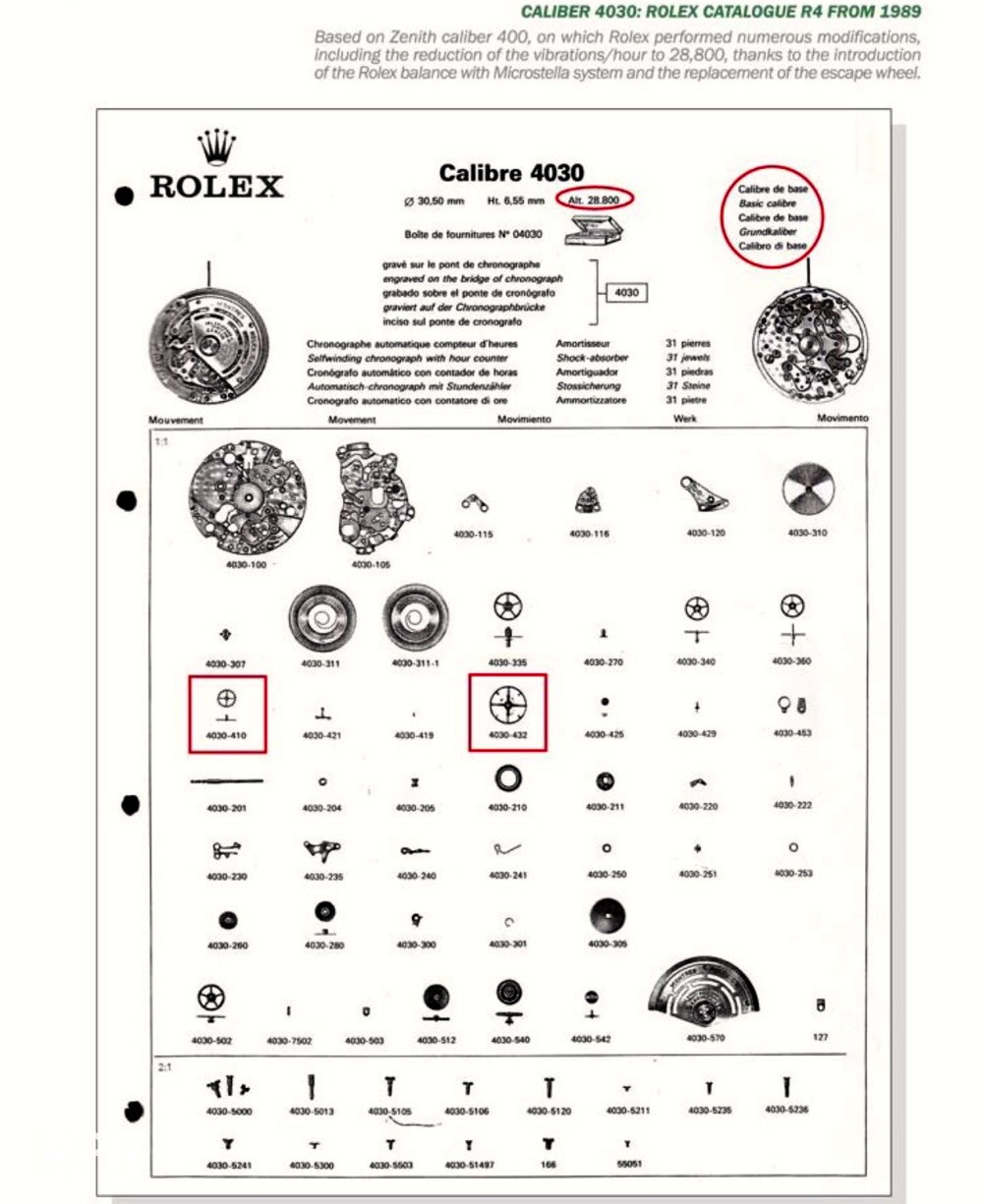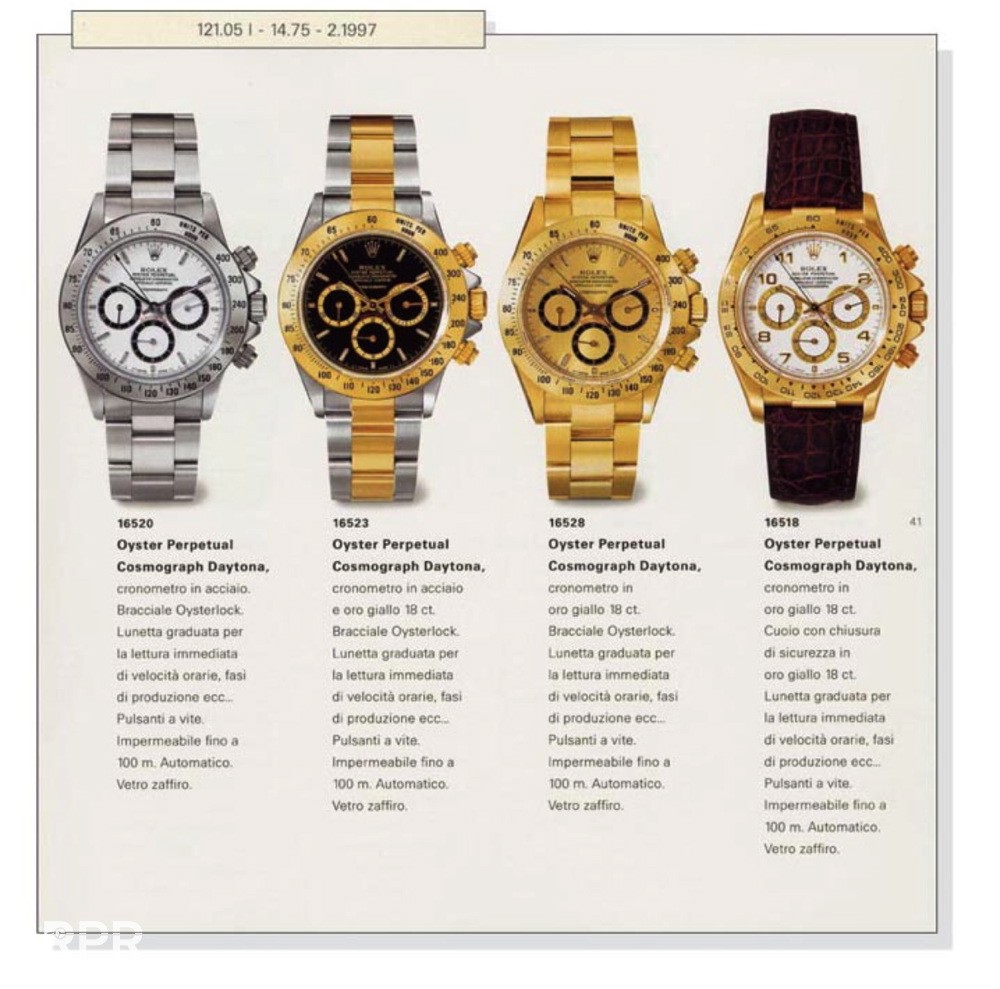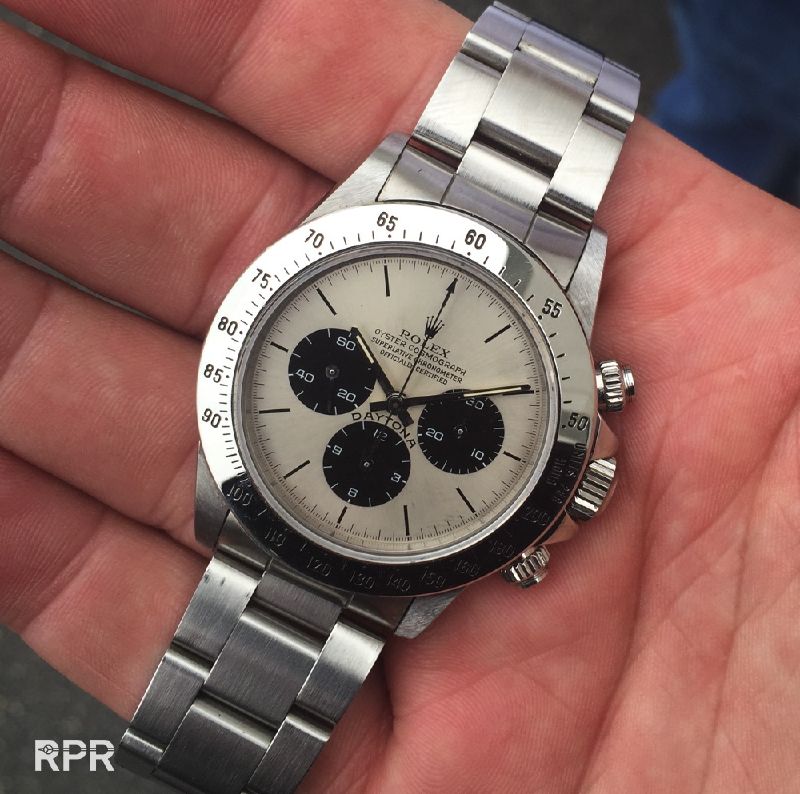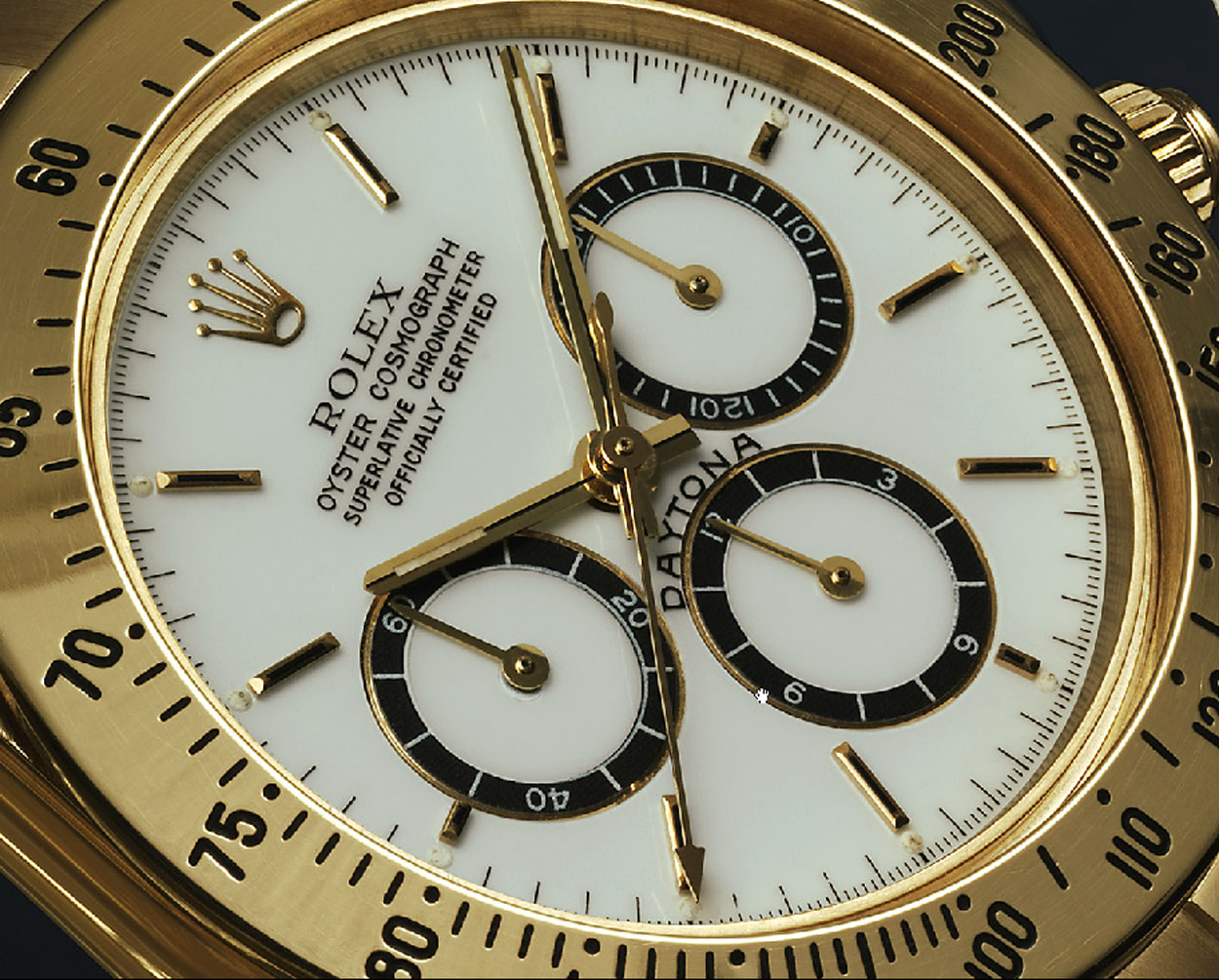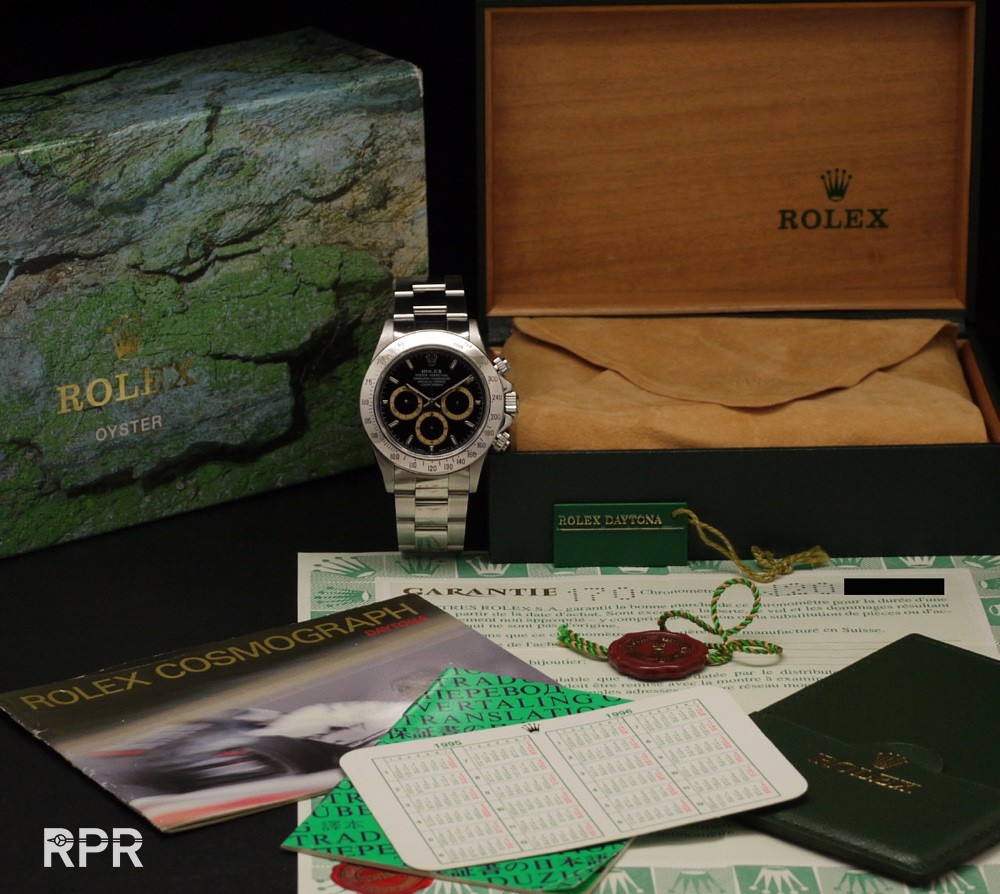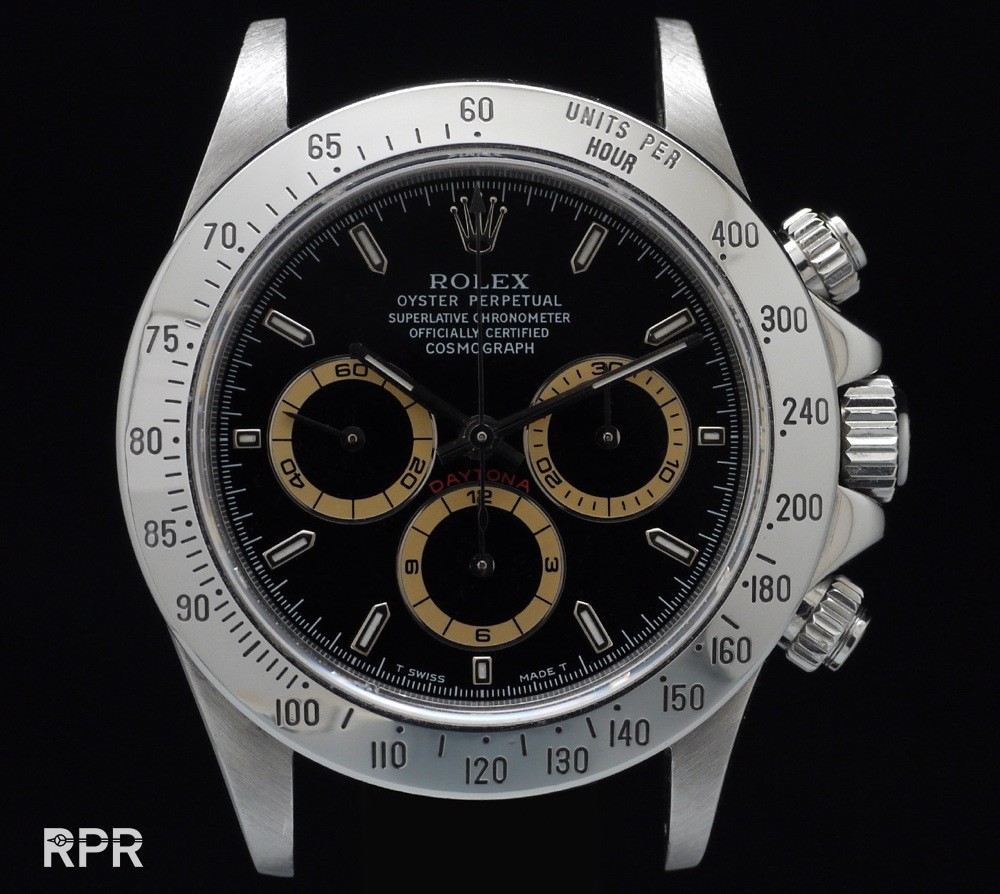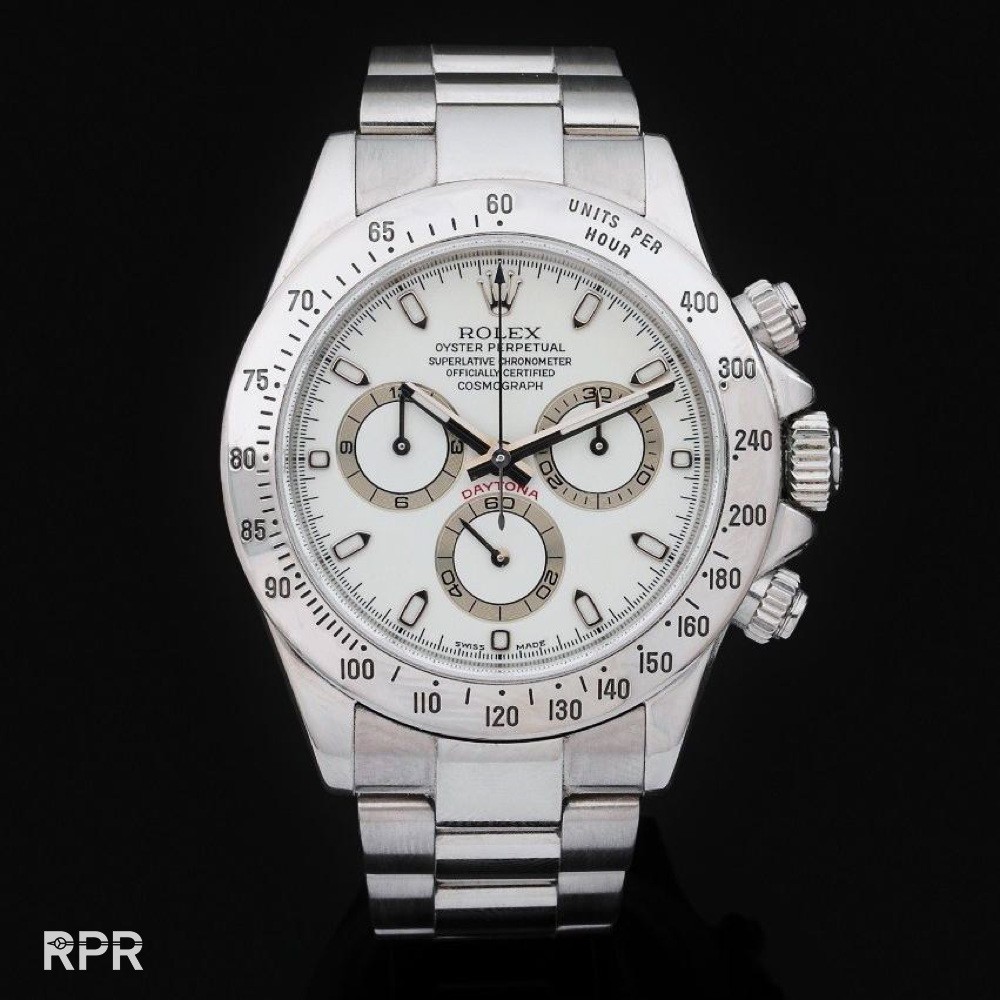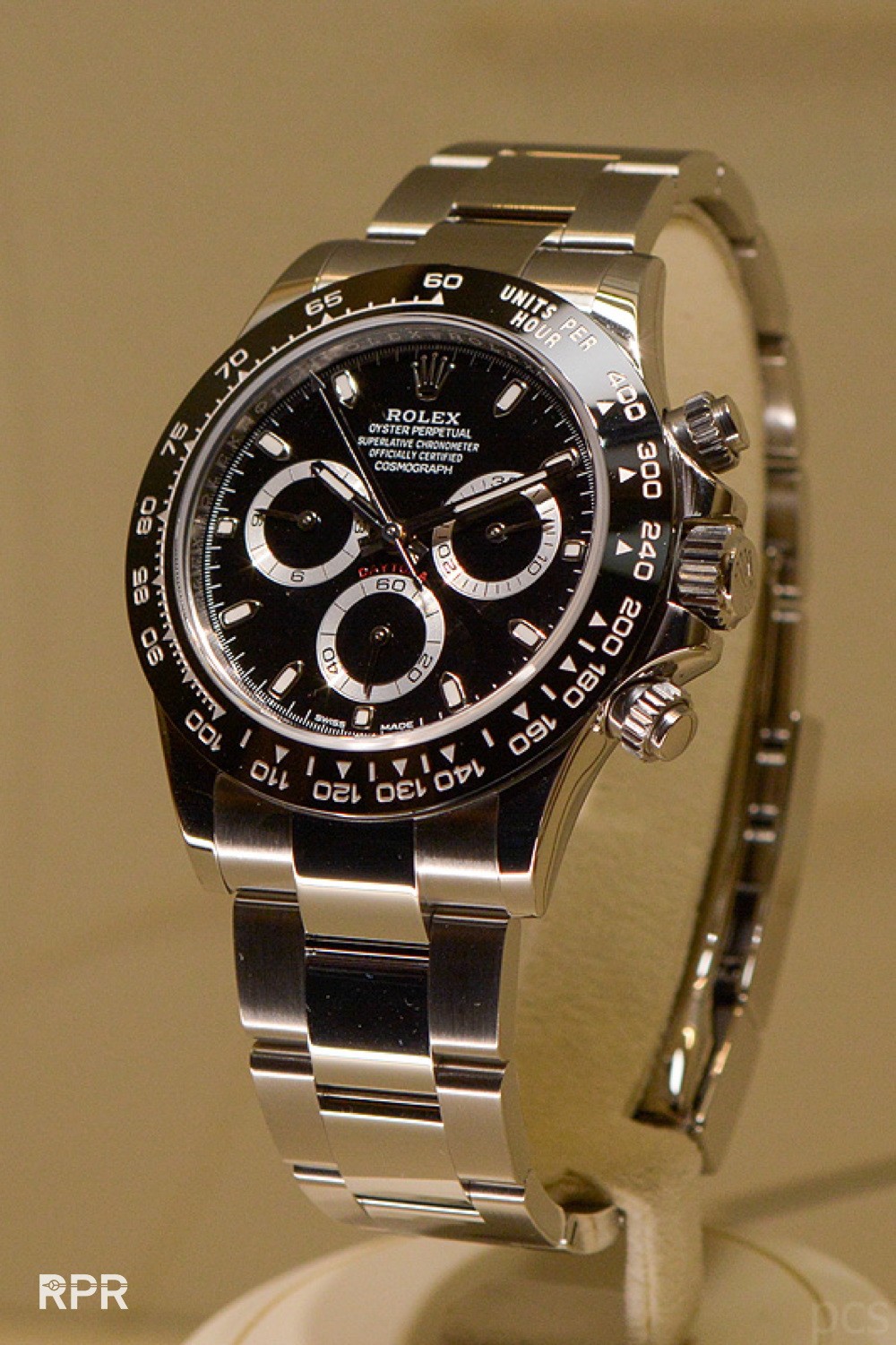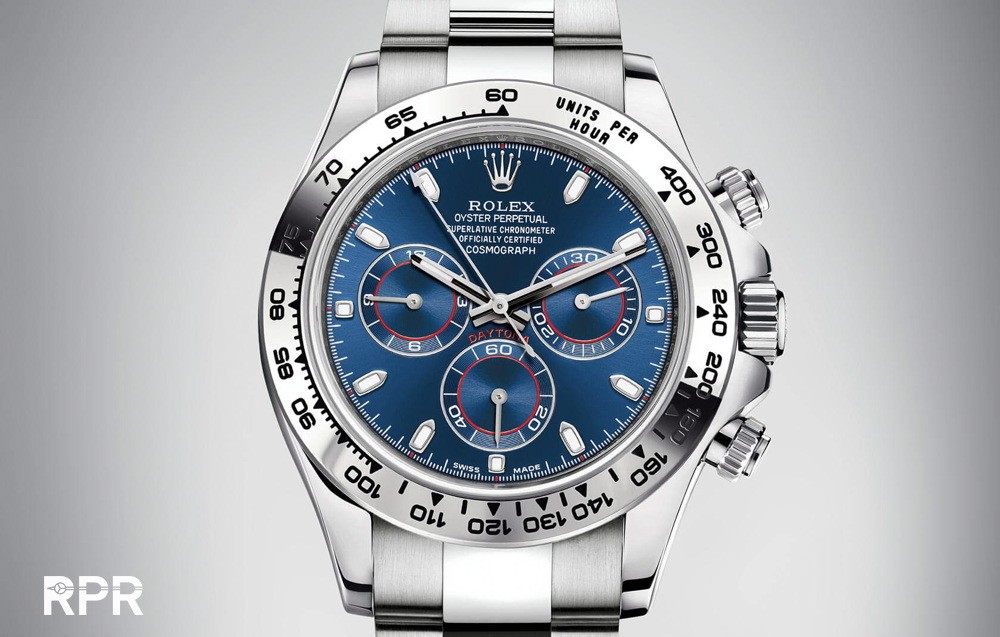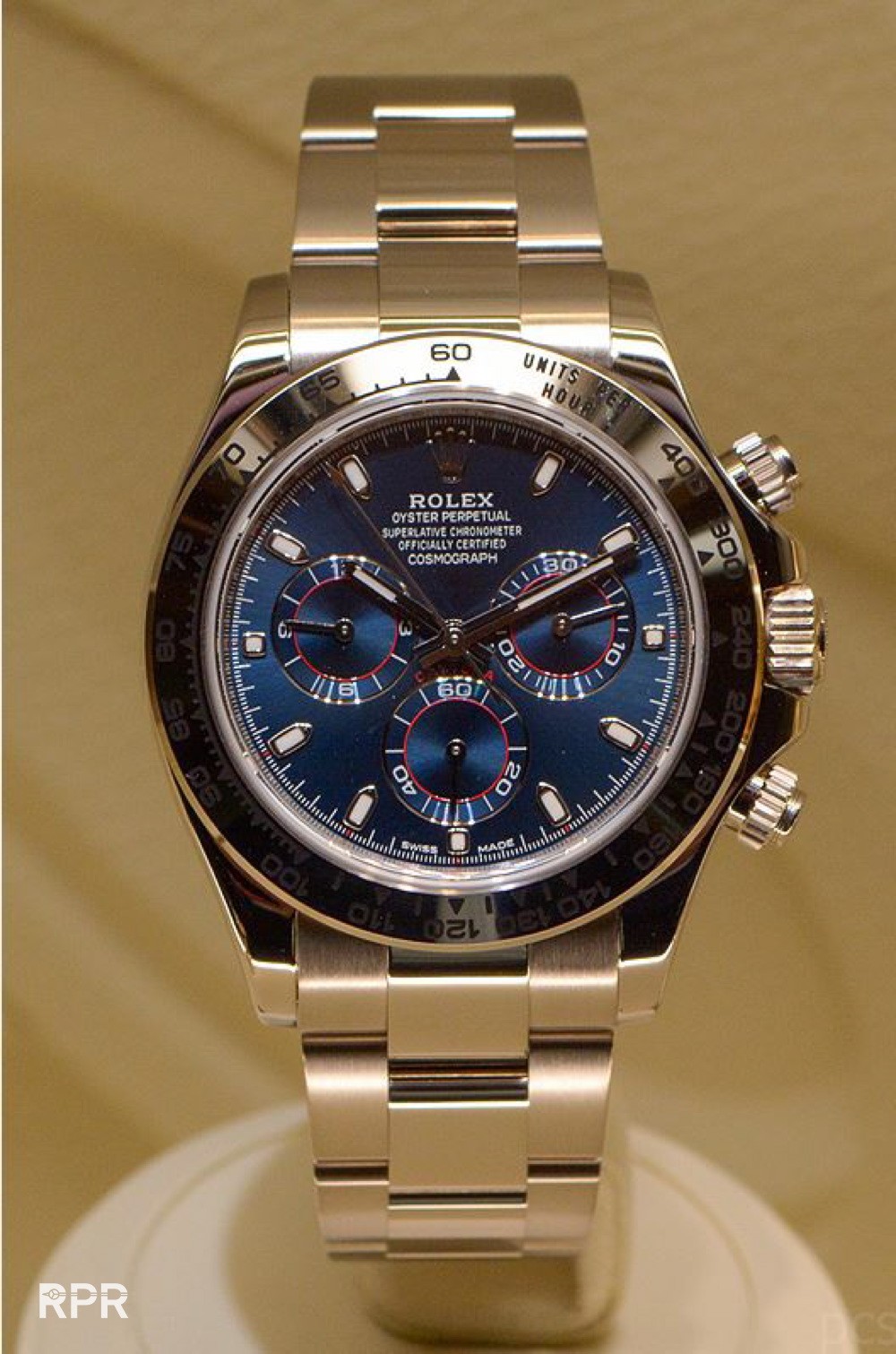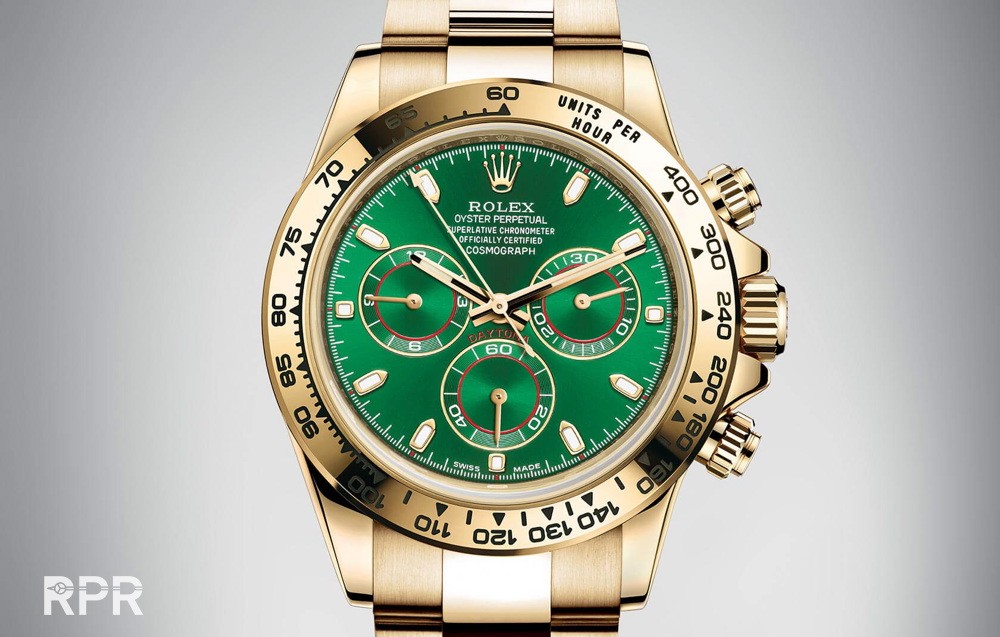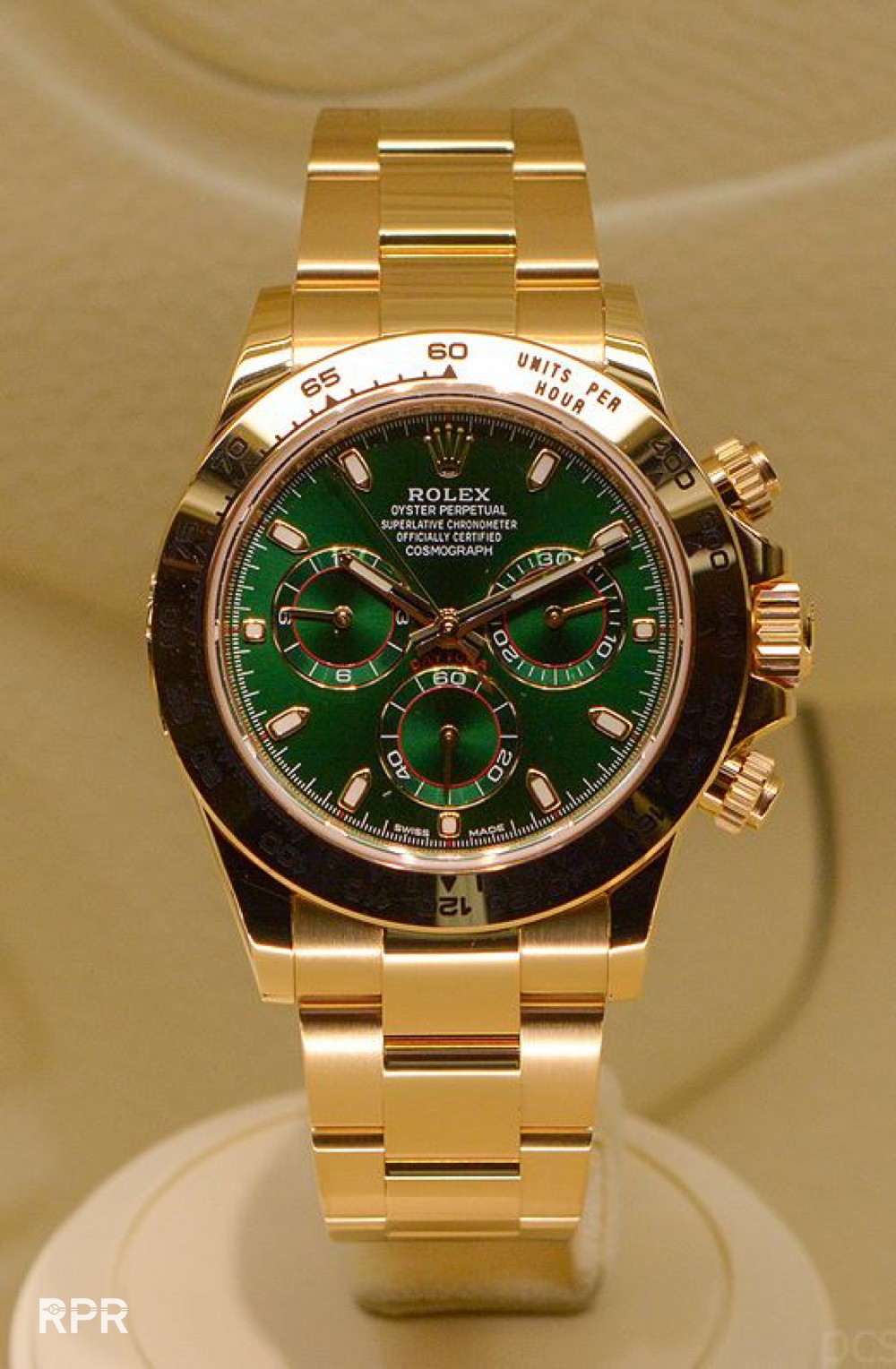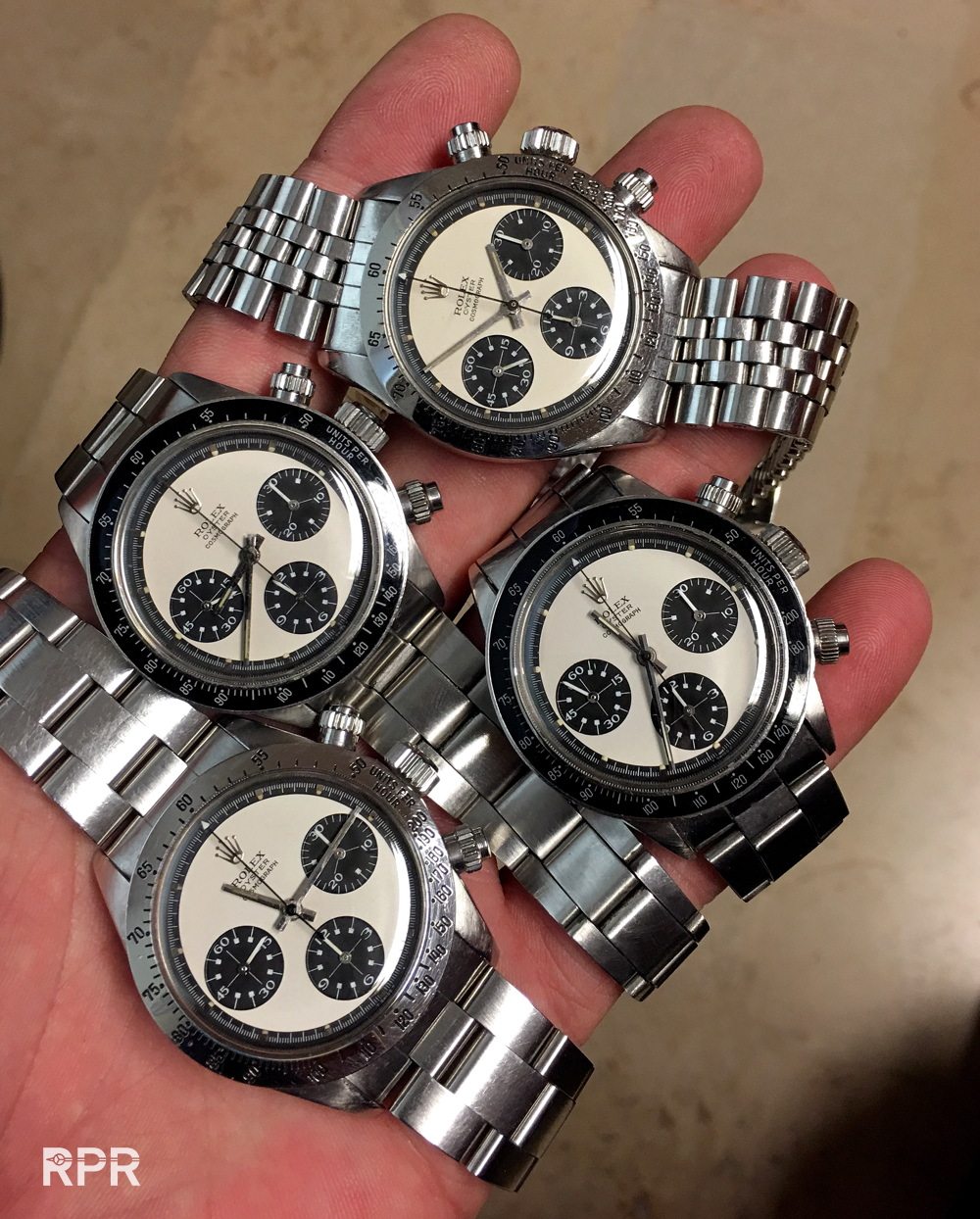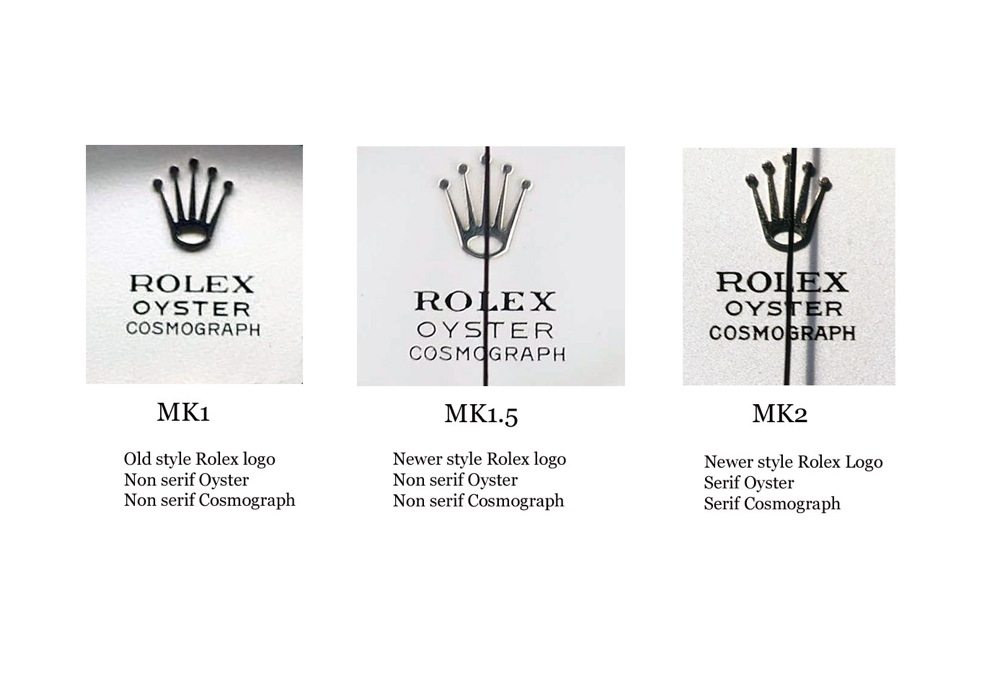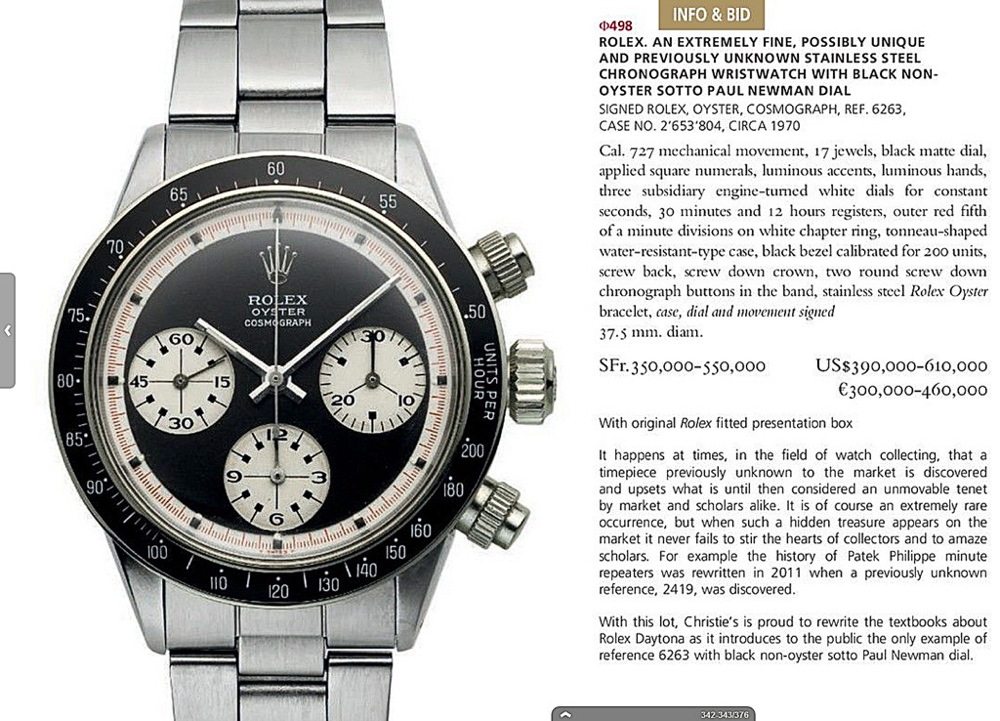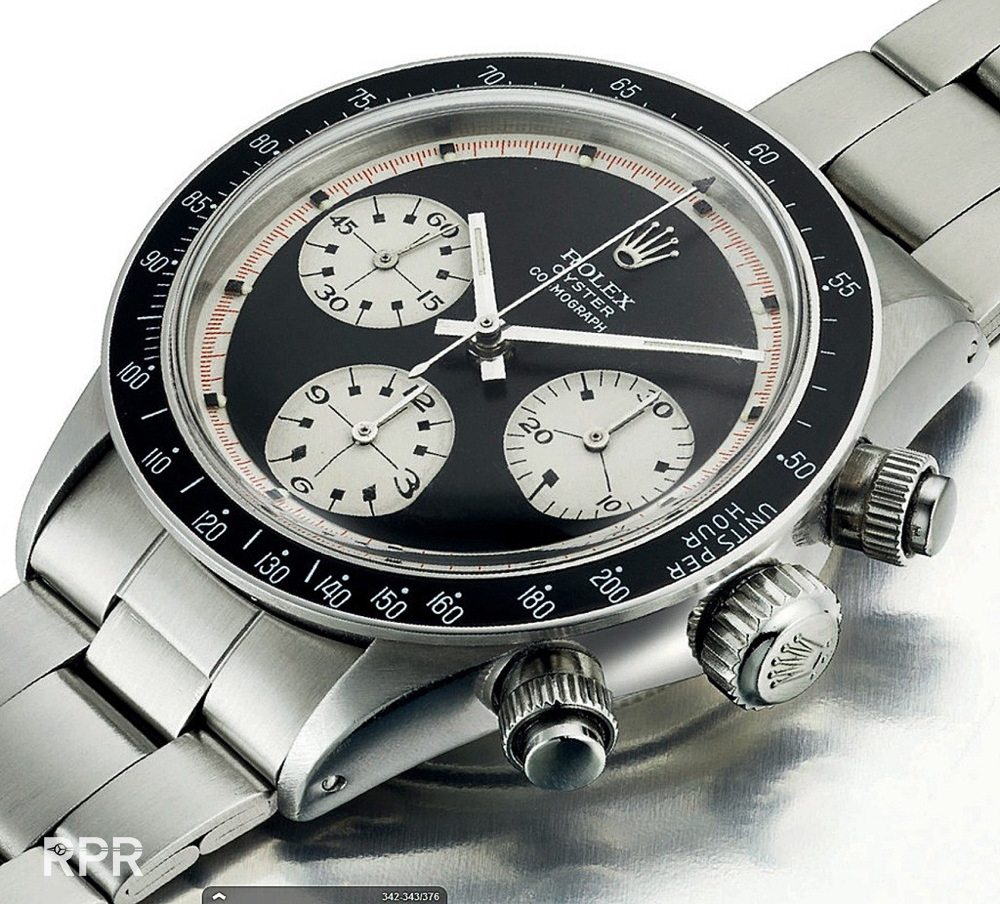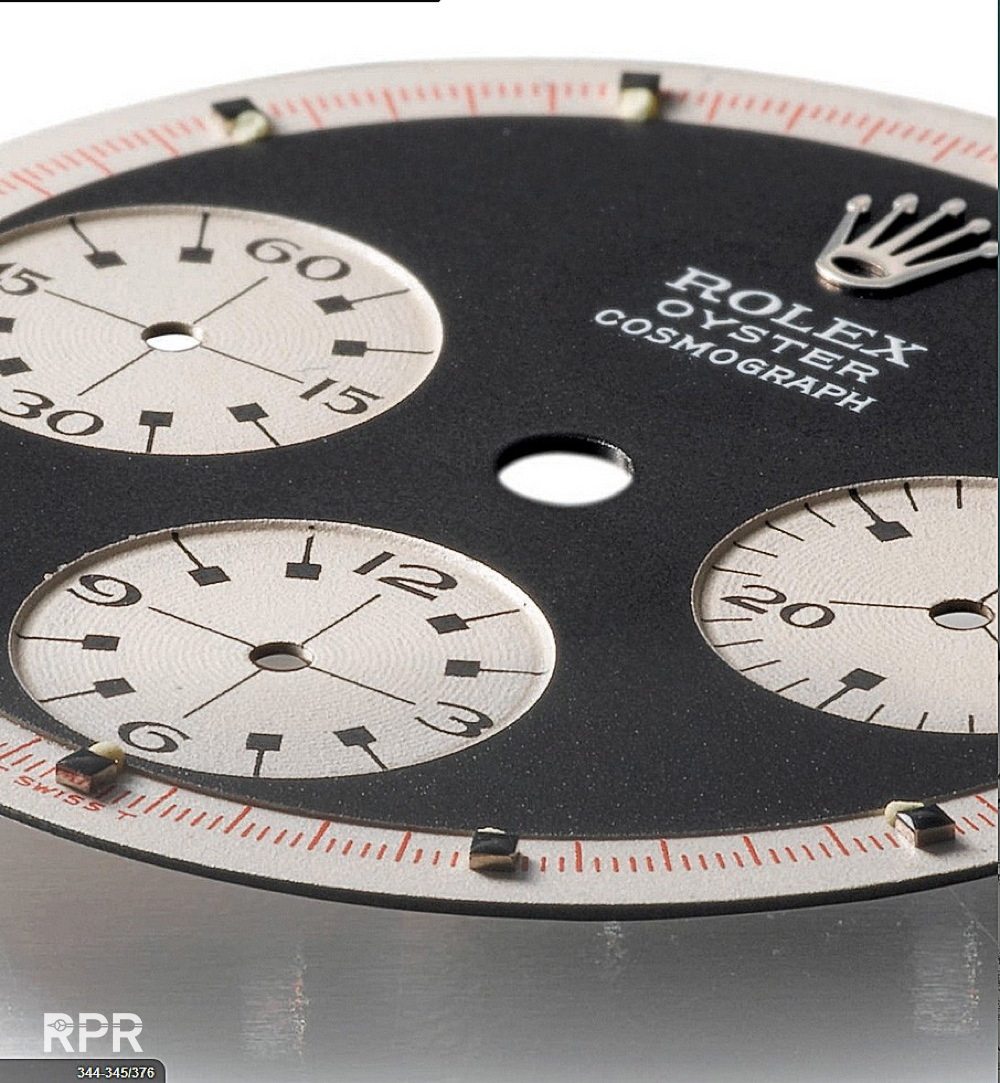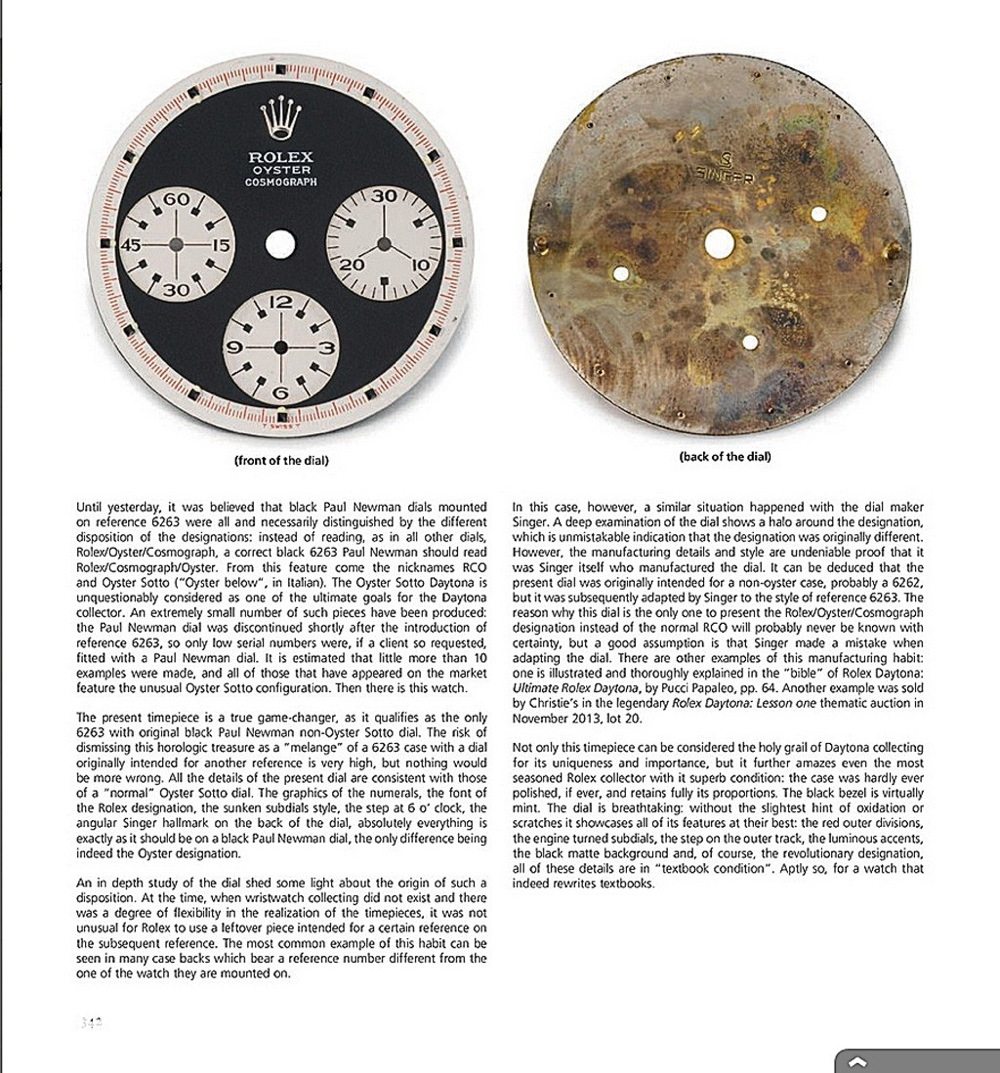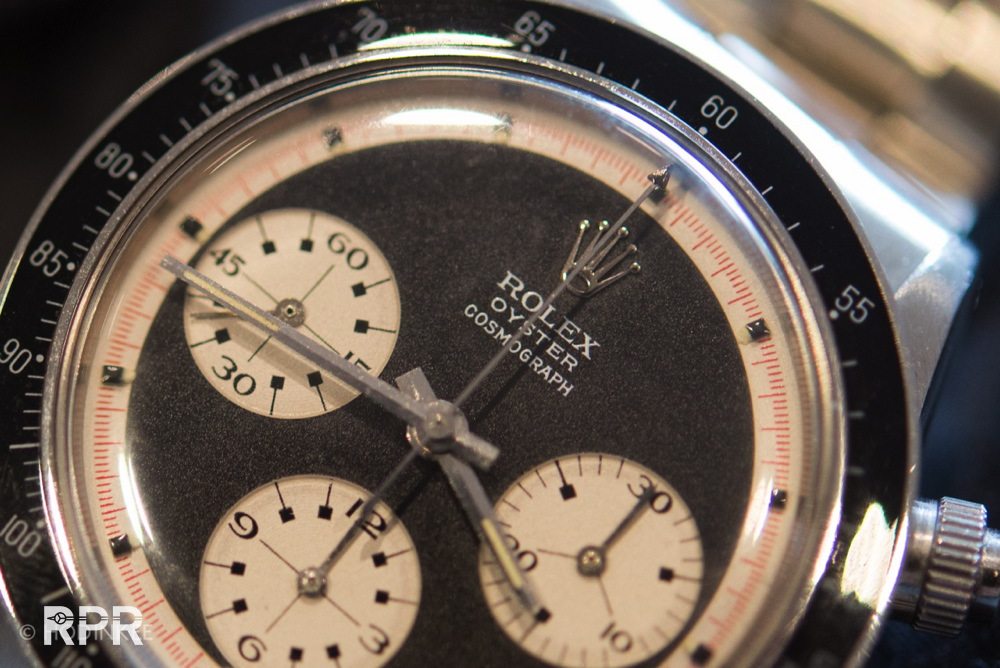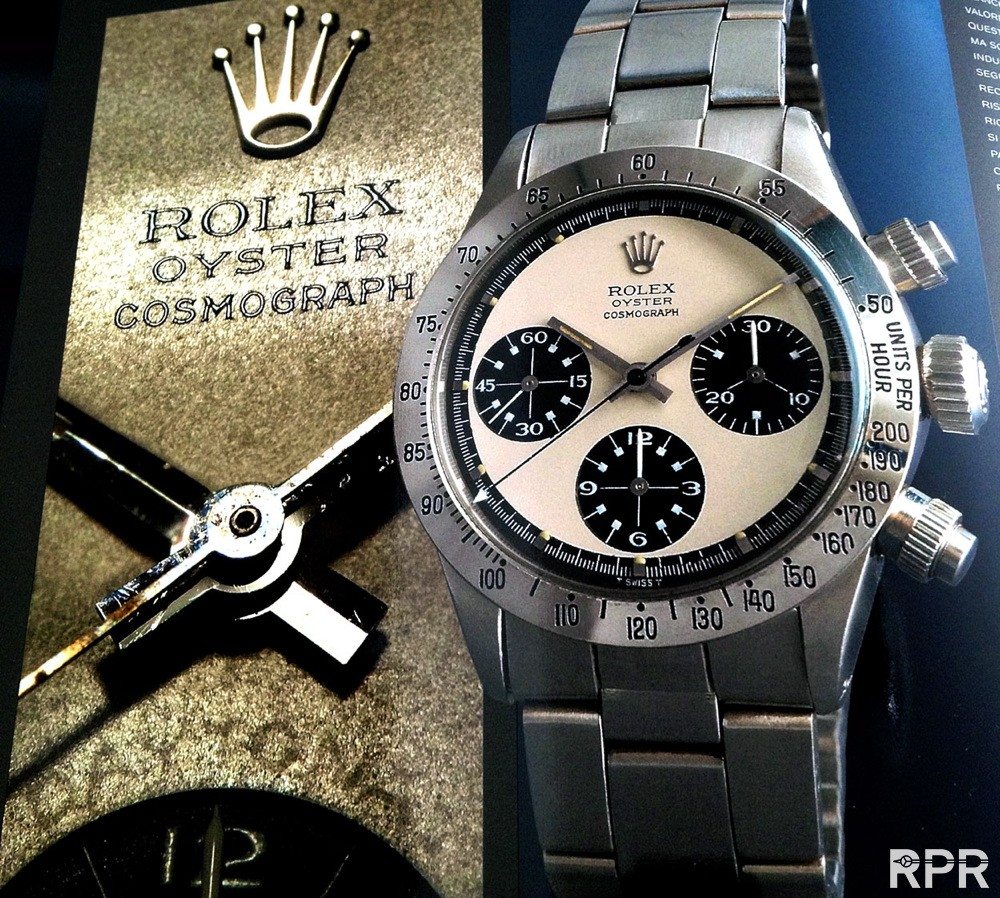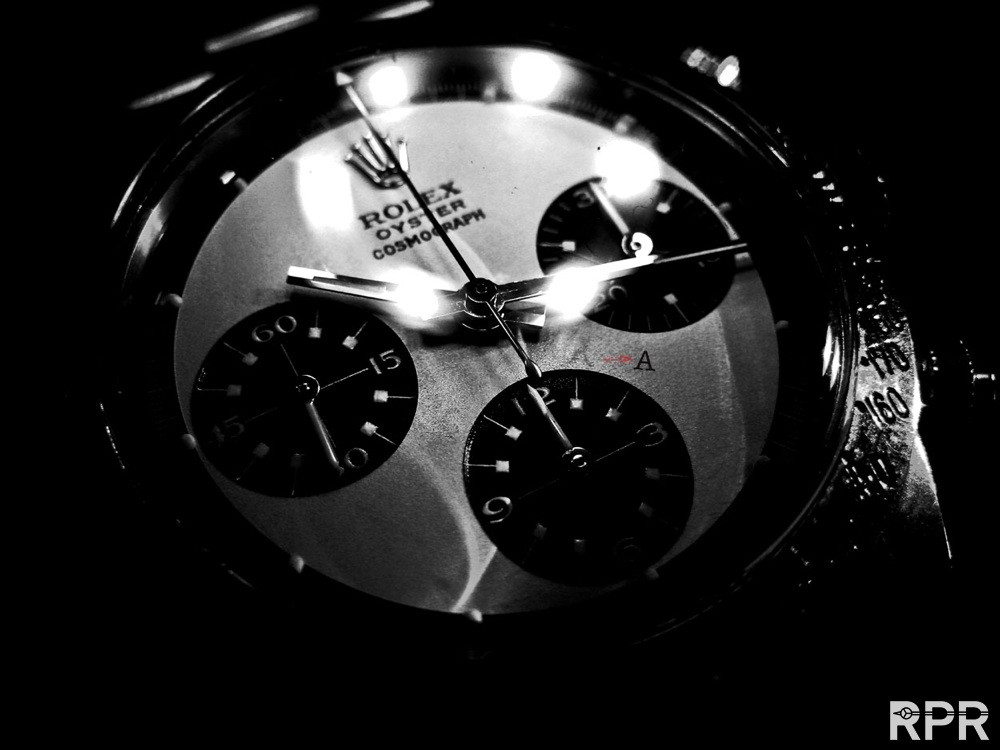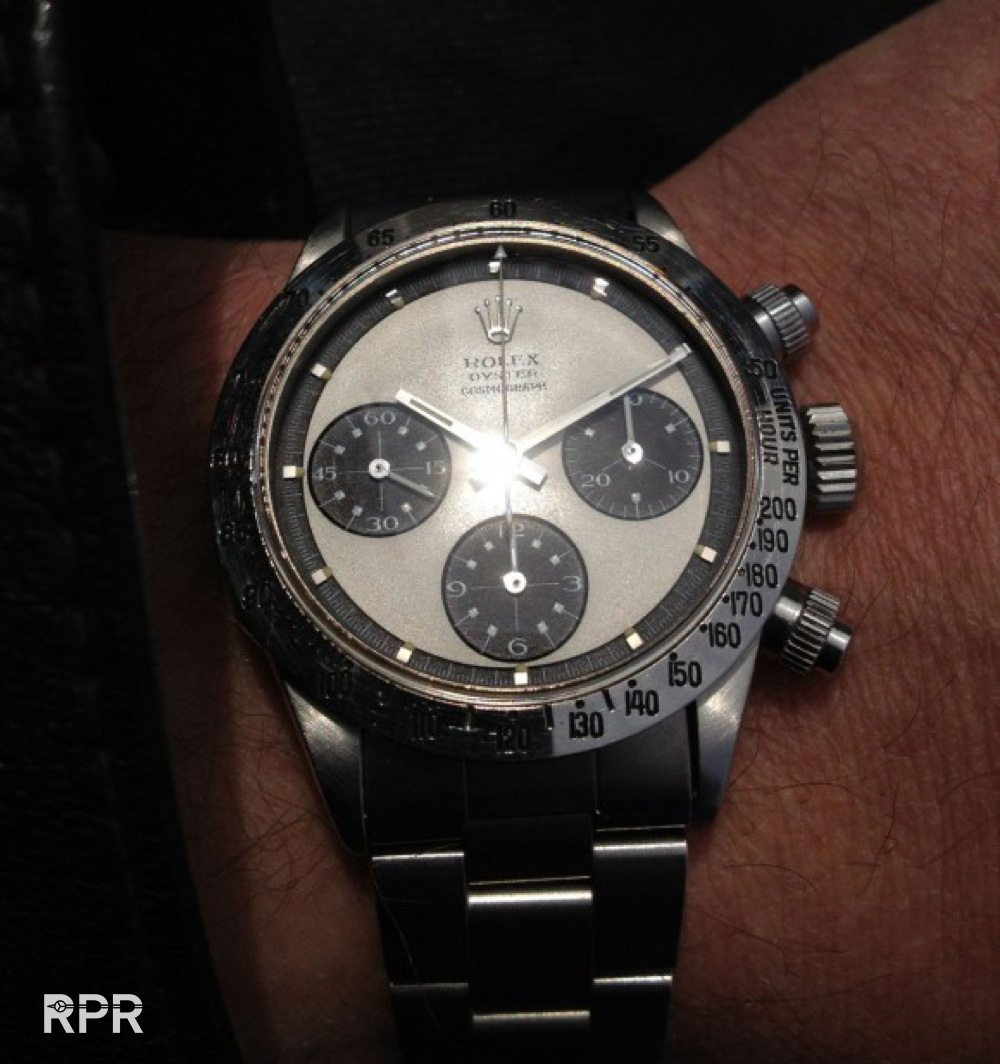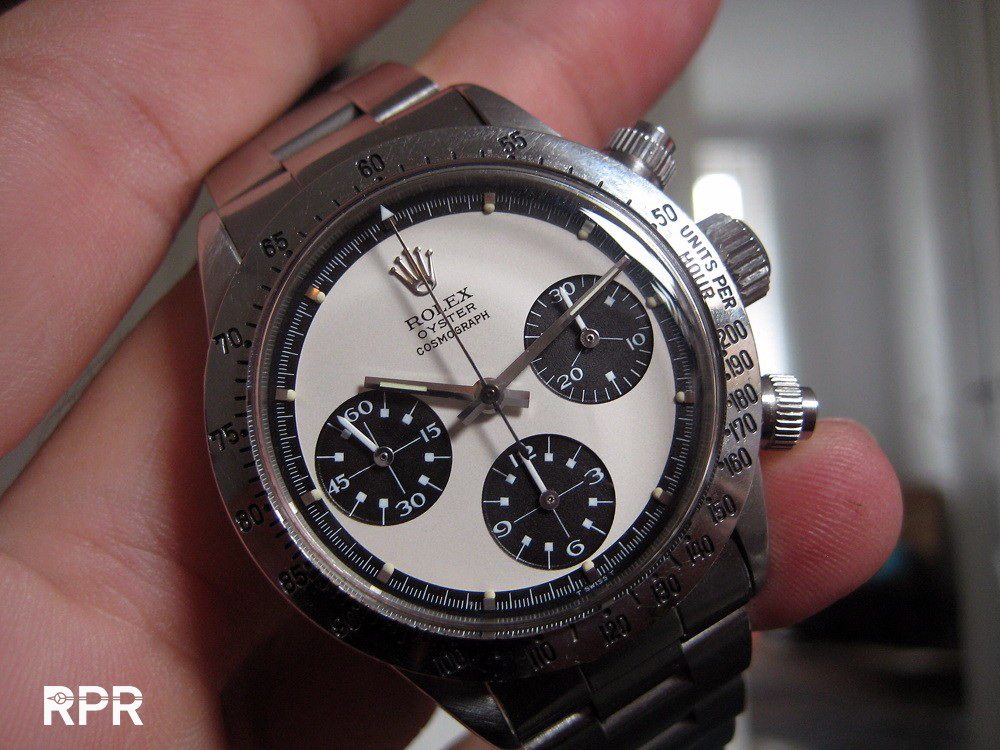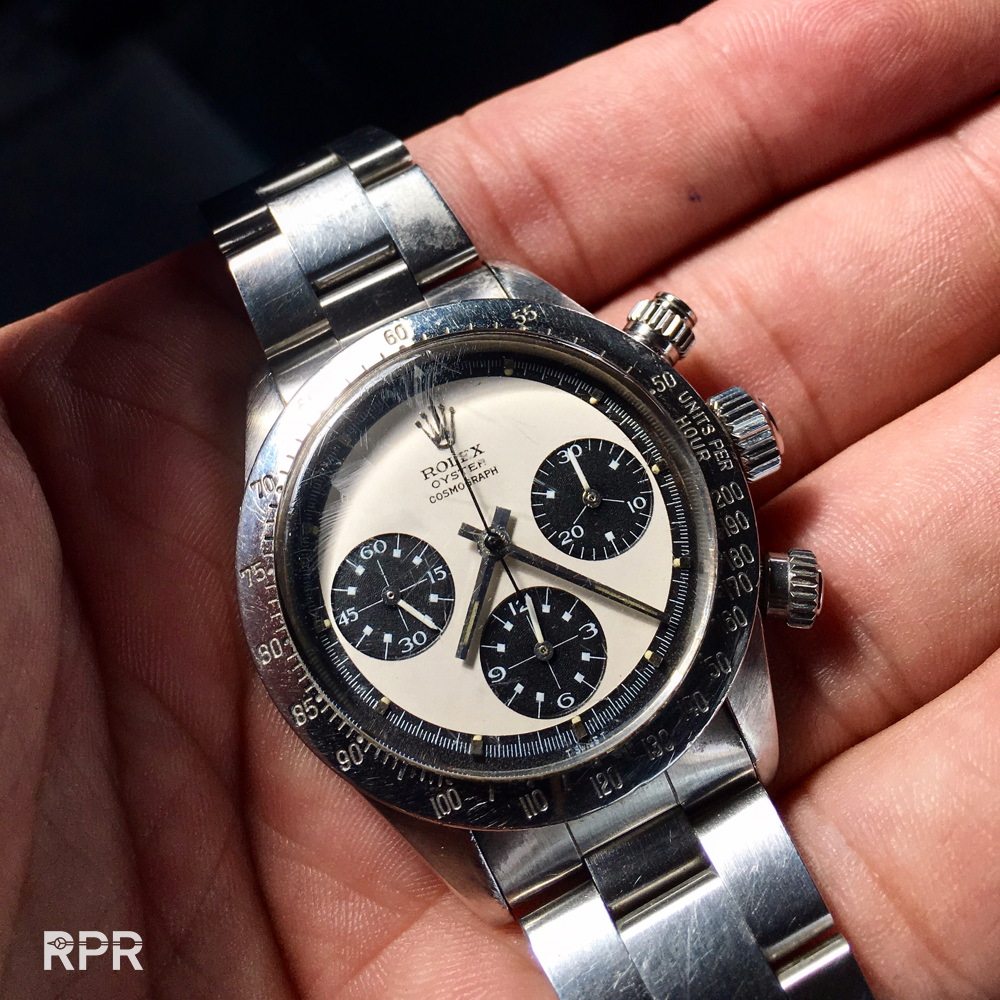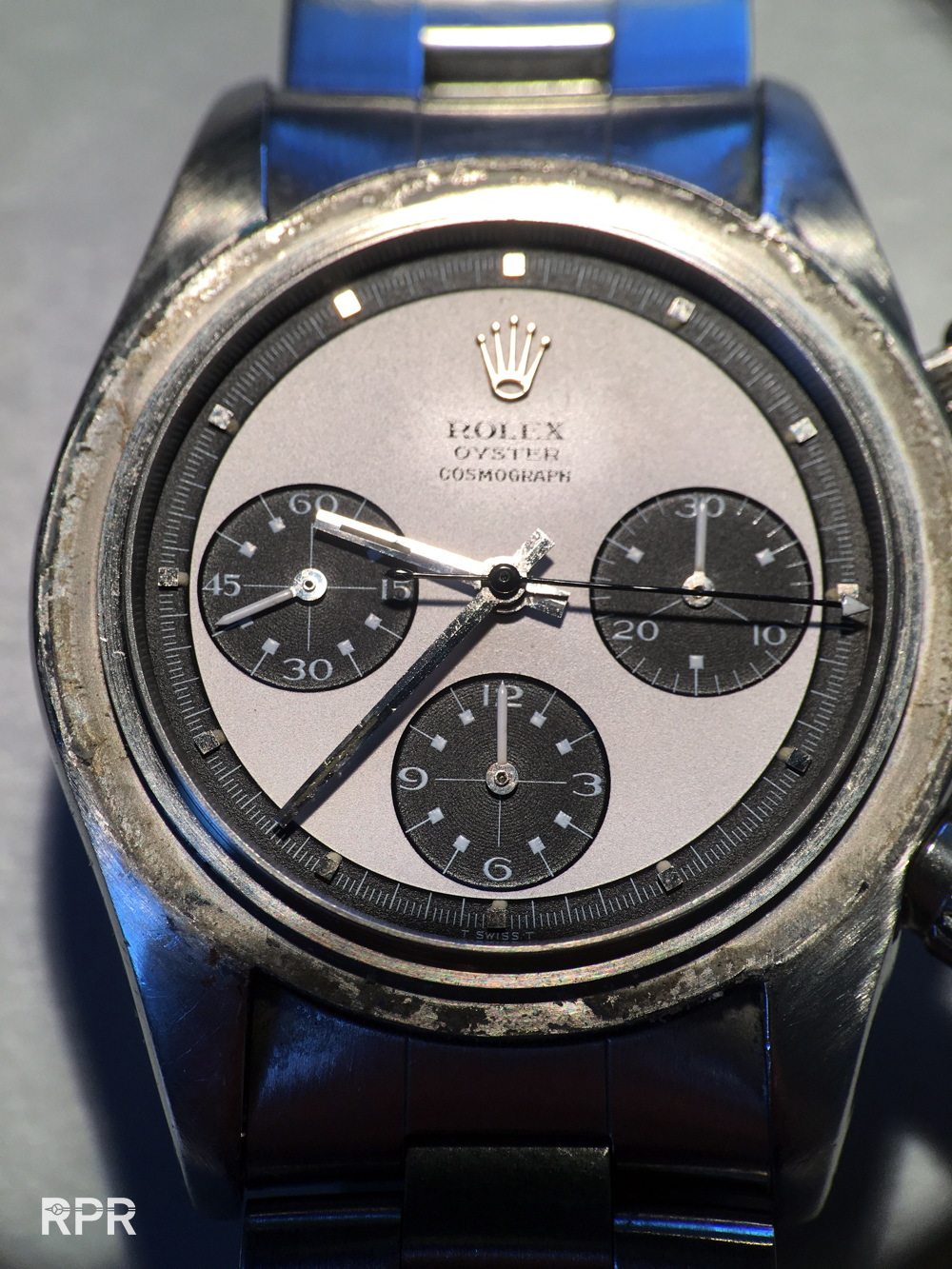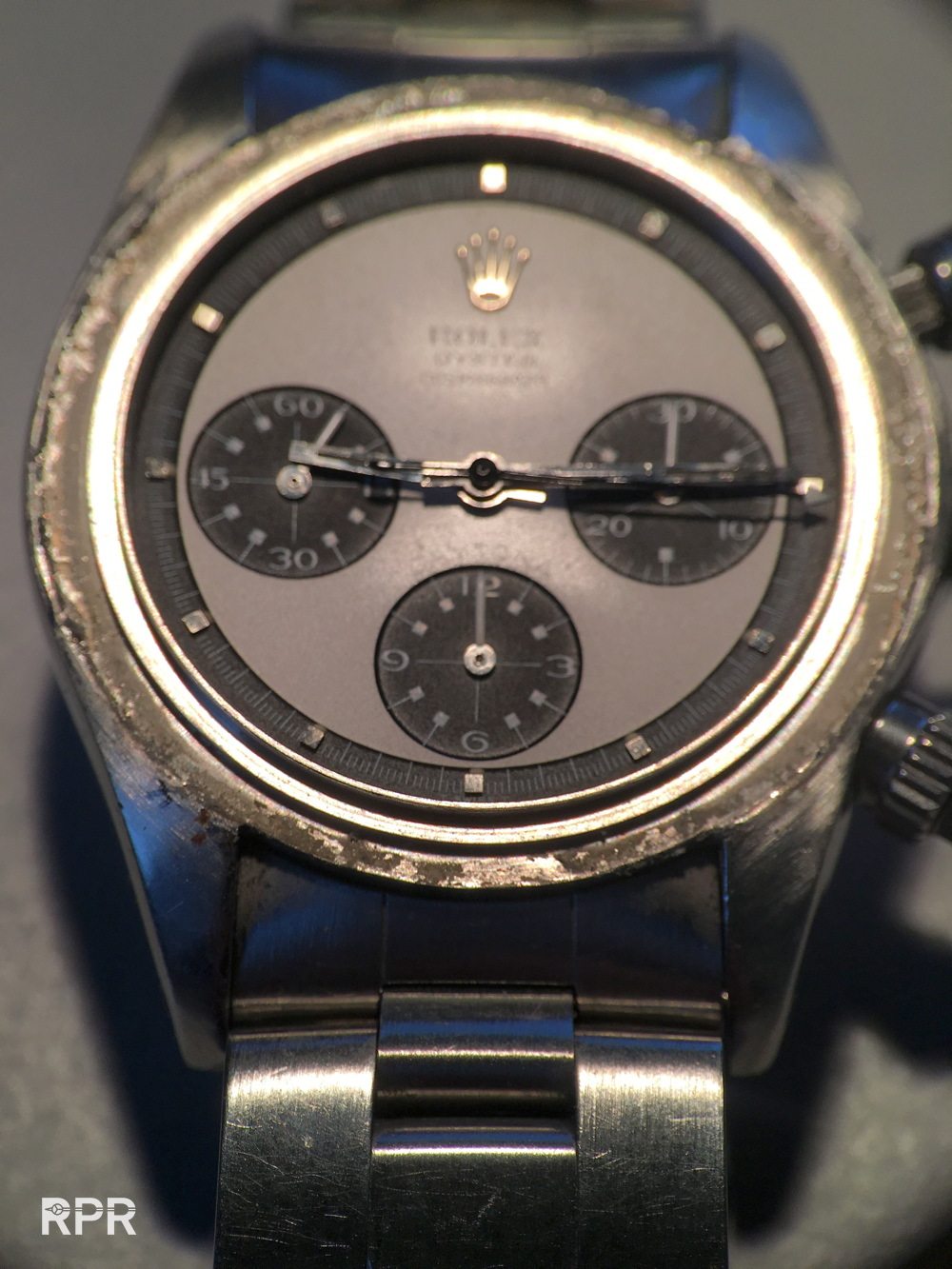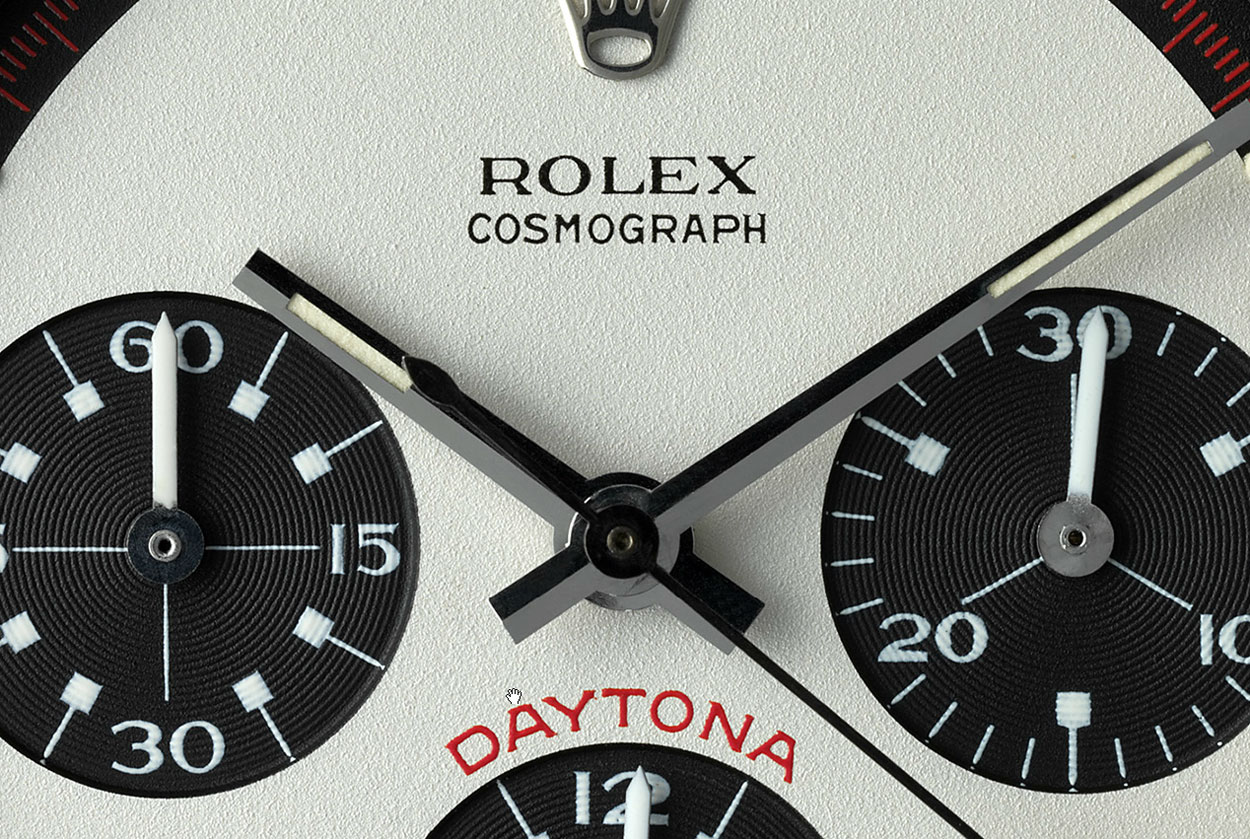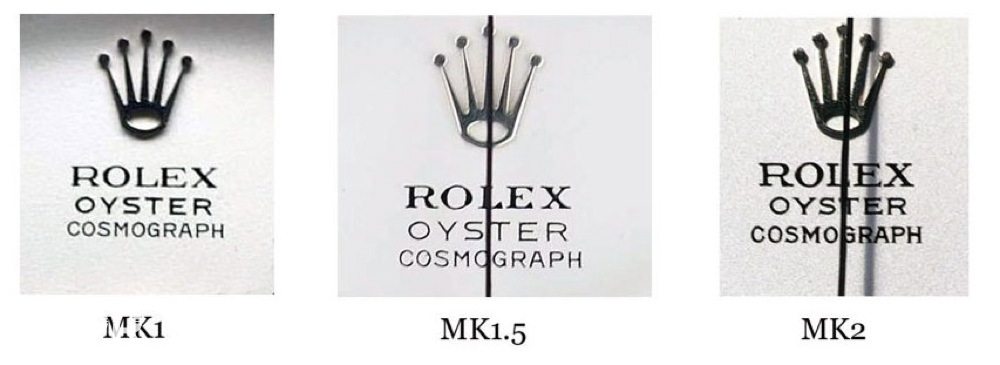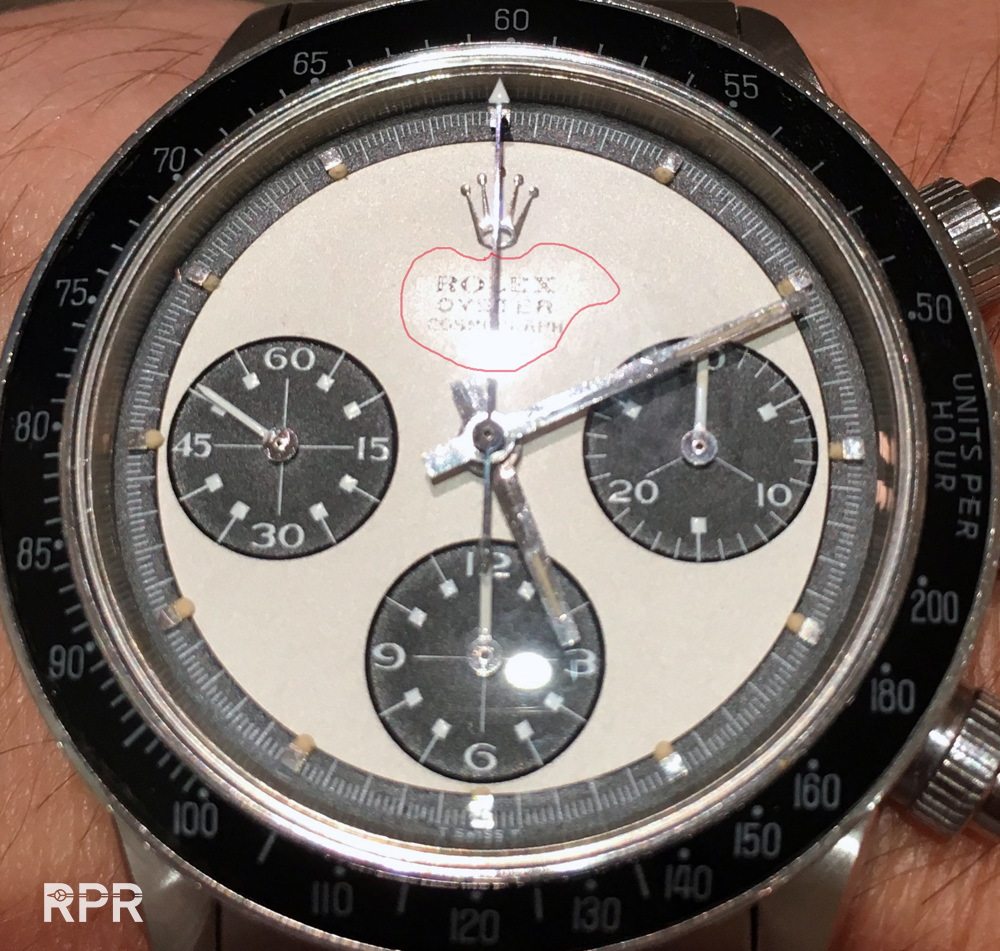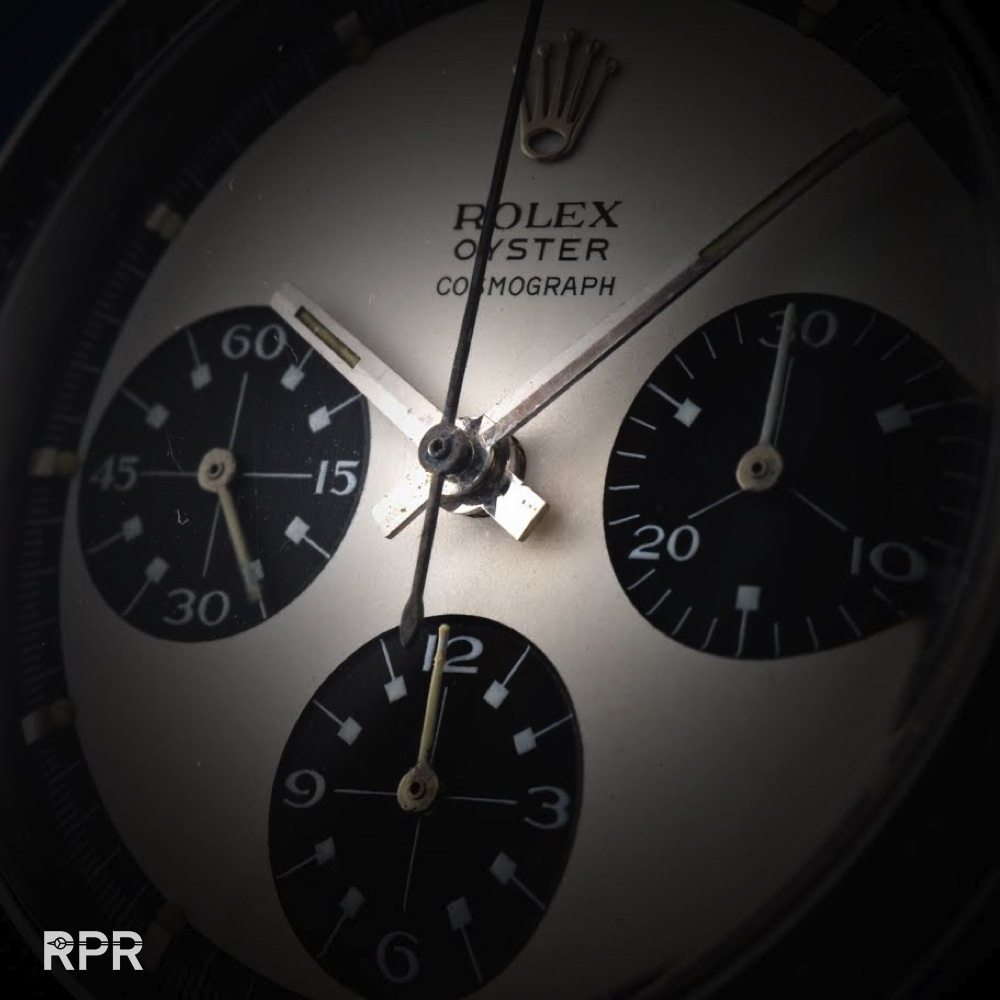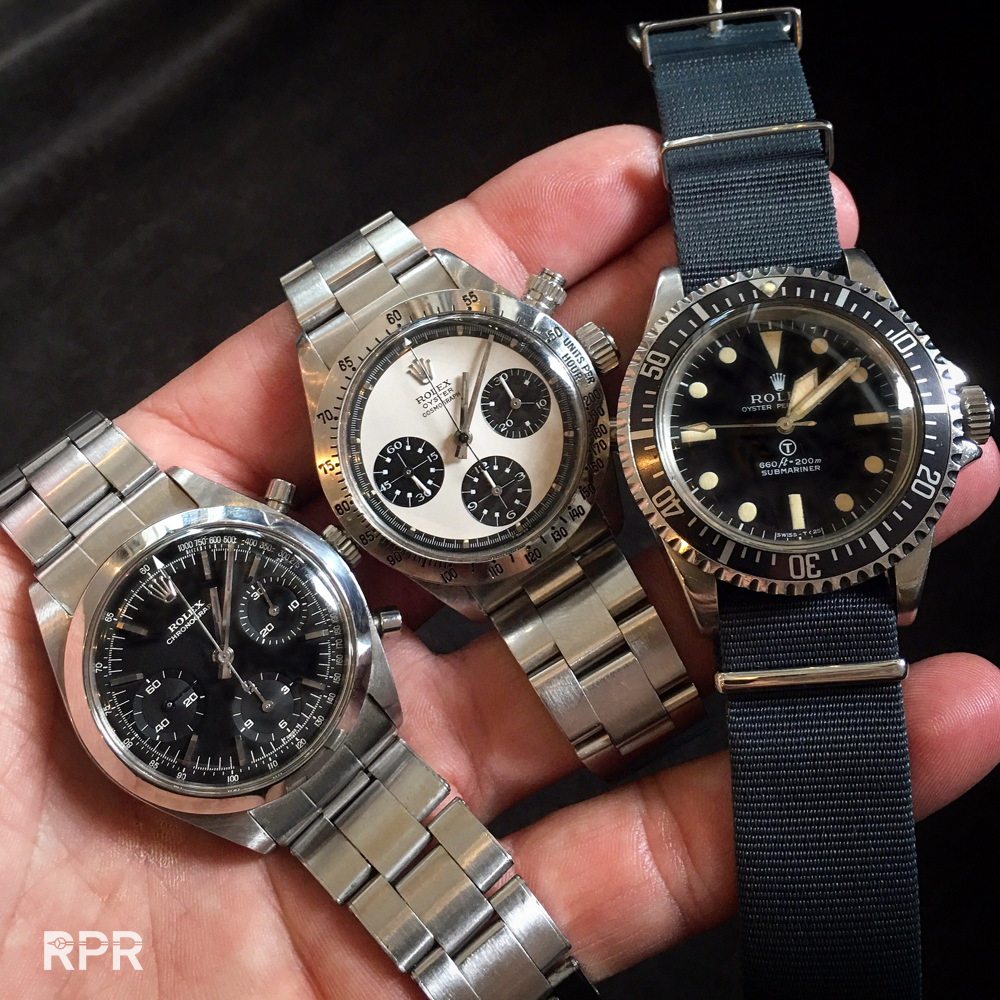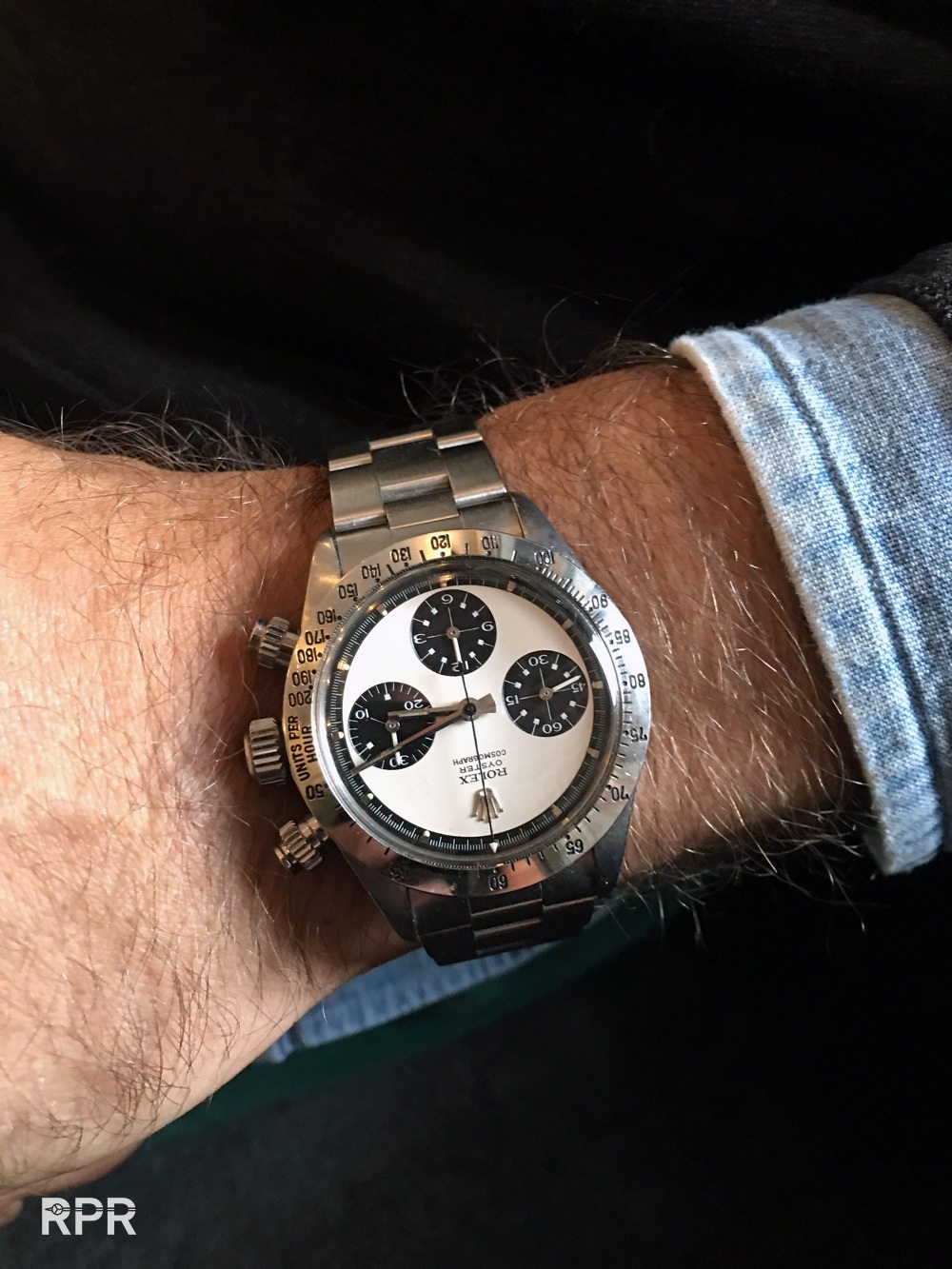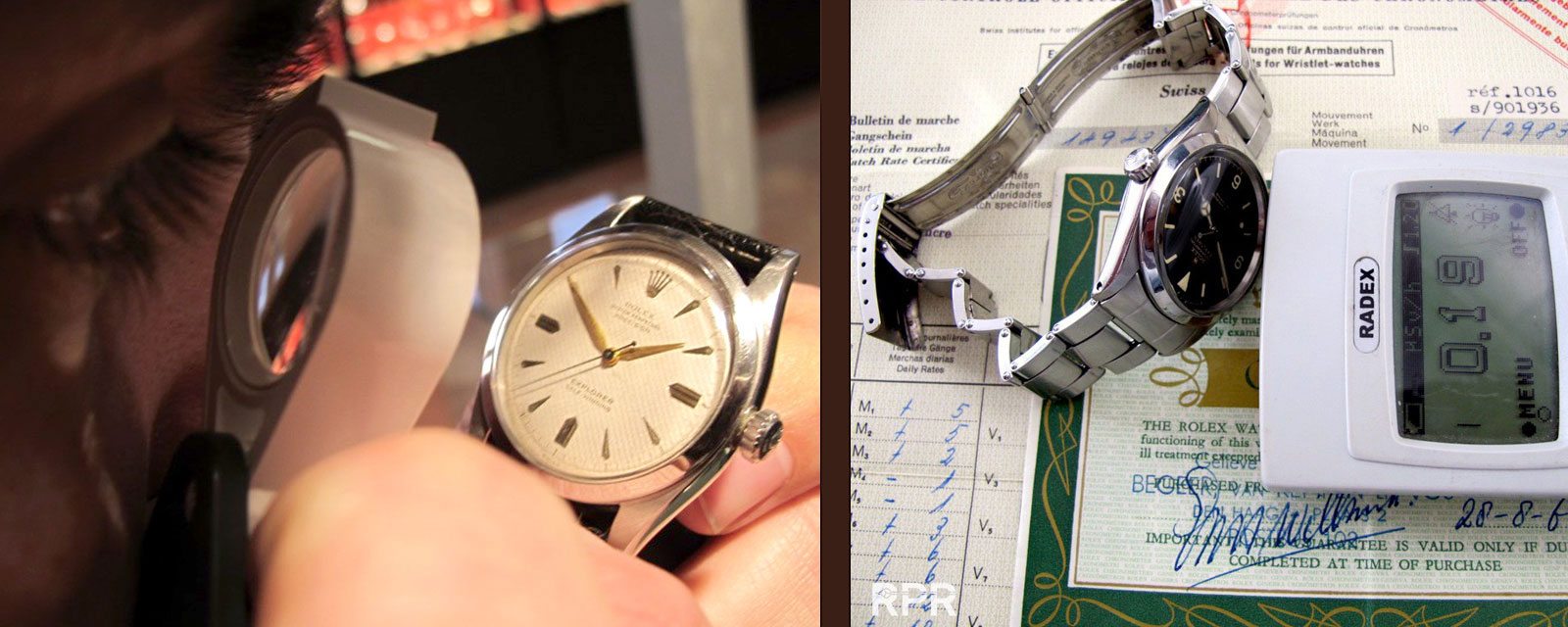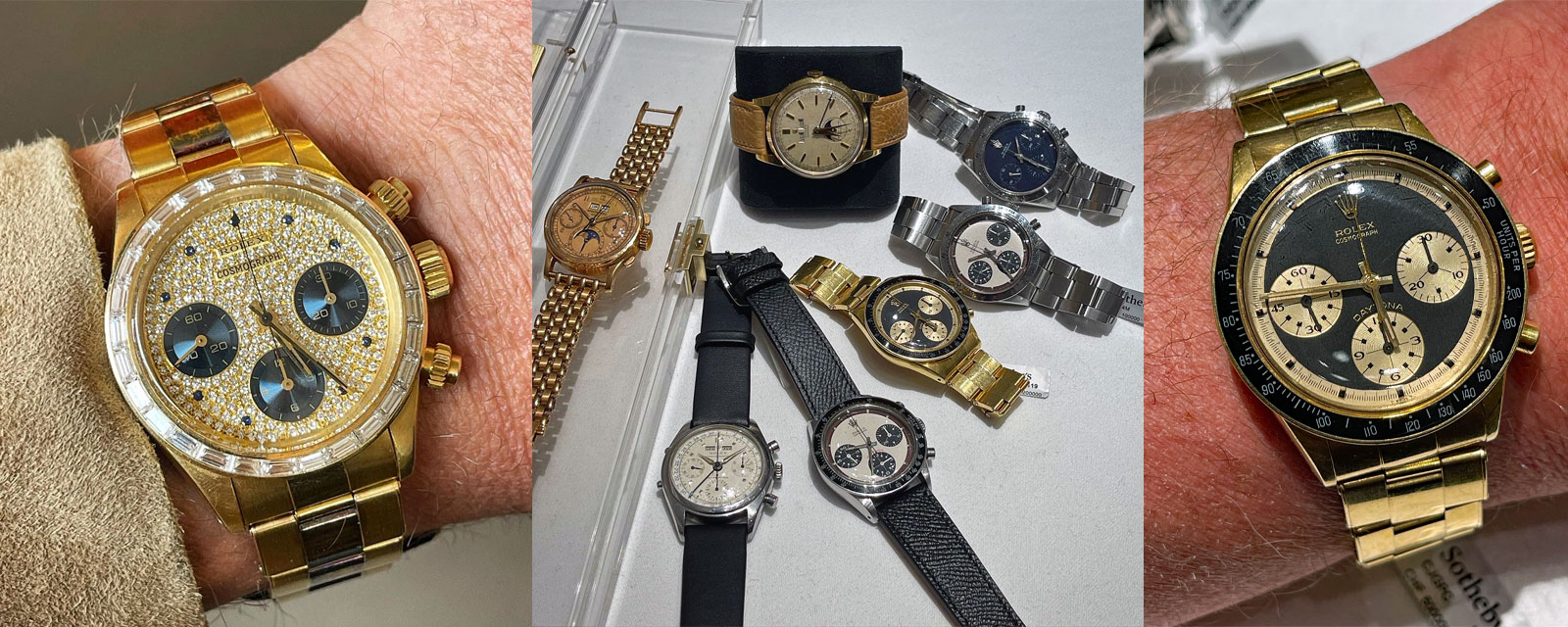The Evolution of the Rolex Oyster Cosmograph Daytona…
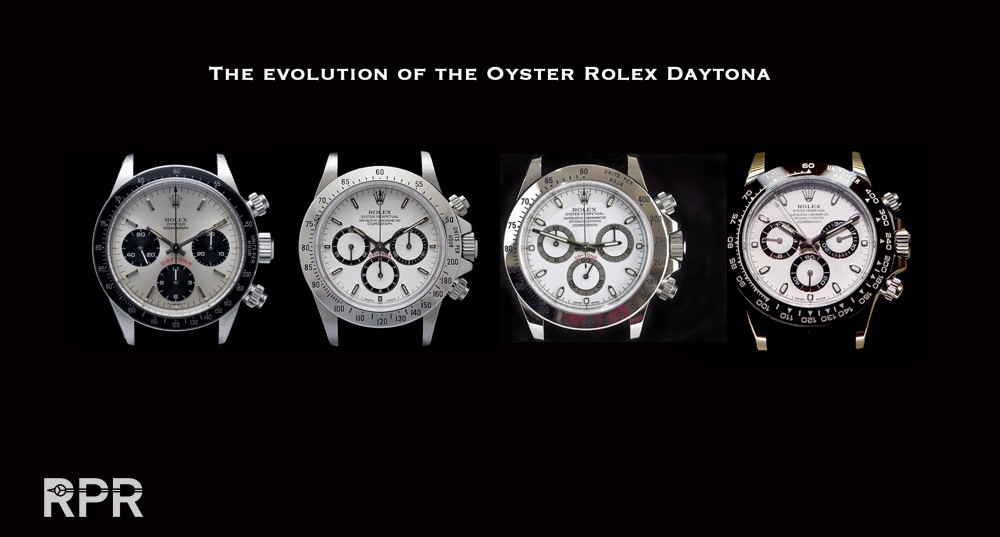
From an important italian collector, the earliest known Rolex Oyster Cosmograph Ref 6240 from beginning 1964…
The Rolex Oyster Daytona waterproof case was a very important innovation made by the genevan watchmaker to boost the sales of their chronograph. The dial maker Singer has played an important role in the design of the Cosmograph Daytona. Read all about this mythical company over here, the evolution and prototypes of Singer. “The most evident manifestation of the doubts Rolex had over the “automobile” issue (oil crisis) in the early 70-ies which surrounded it’s leading chronograph model. In fact, it’s racing essence was only just saved by the flash of genius of the chronograph screw down pushers”. With other words, the Daytona, now with screw down Oyster pushers became revolutionary and Rolex most iconic model by incident…
The Ref. 6240 “Neanderthal” from buddy Pucci Papaleon, writer of the “Ultimate Rolex Daytona” book…
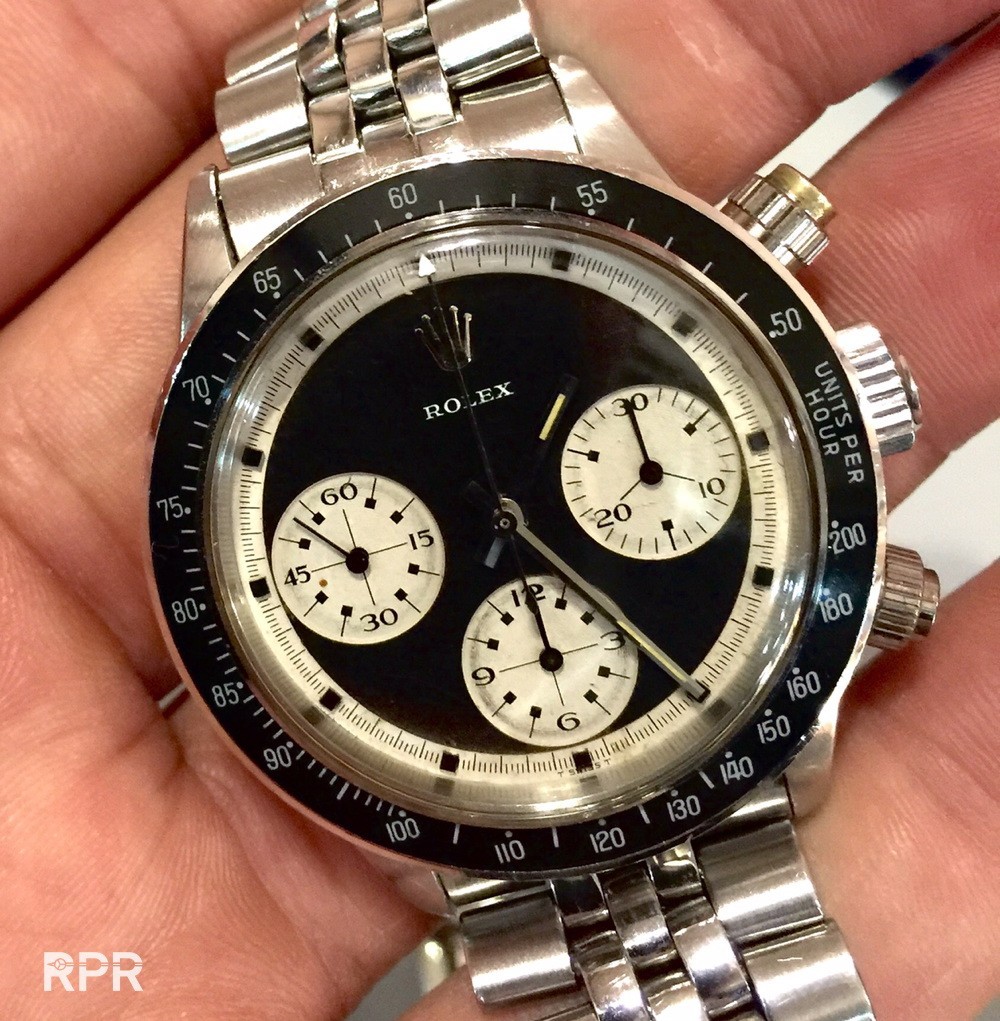
The definitive introduction of the screw down pushers gives Rolex a great advantage over its competitors. This feature allows the watch to be submerged even though the chronographic functions are disabled because of the screwed-down position of the pushers. This attracts buyers who flock to buy the Rolex Chronographs worldwide, thus, eventually ensuring the success of this model.
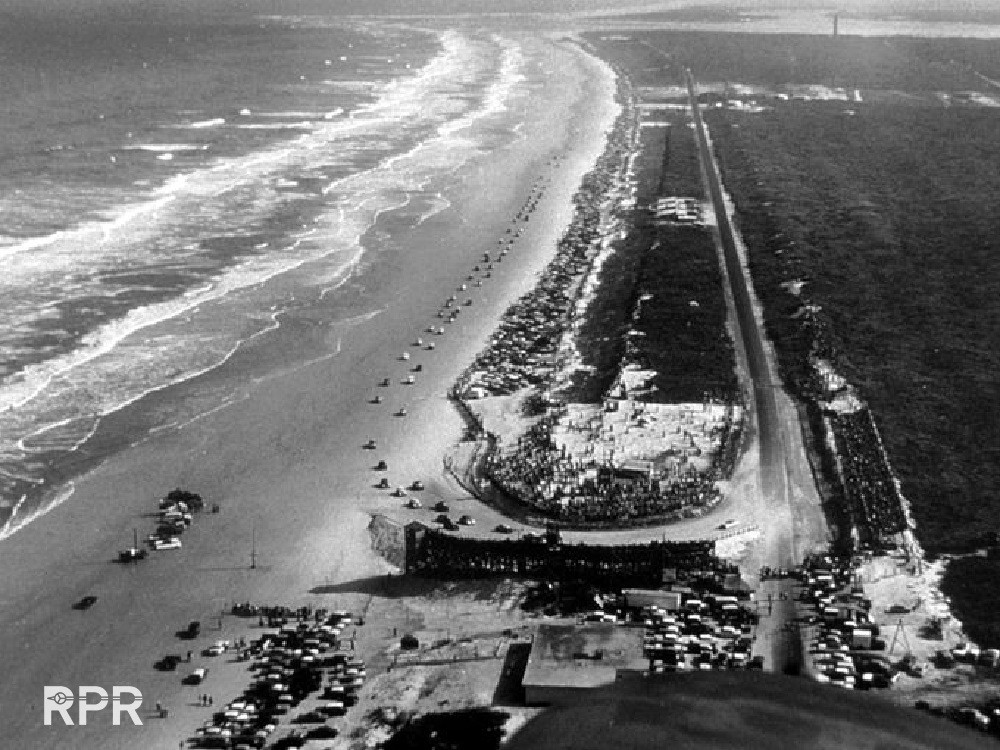
Close up of early Rolex Ref 6240 with “small” Daytona… 
The old-fashioned manually wound timepieces began their journey towards collectors heaven. They are soon considered irrefutable treasures to the collectors’ community. The Paul Newman is a prime example and by the end of the 1980s becomes one of the most interesting case studies of the vintage watch market.
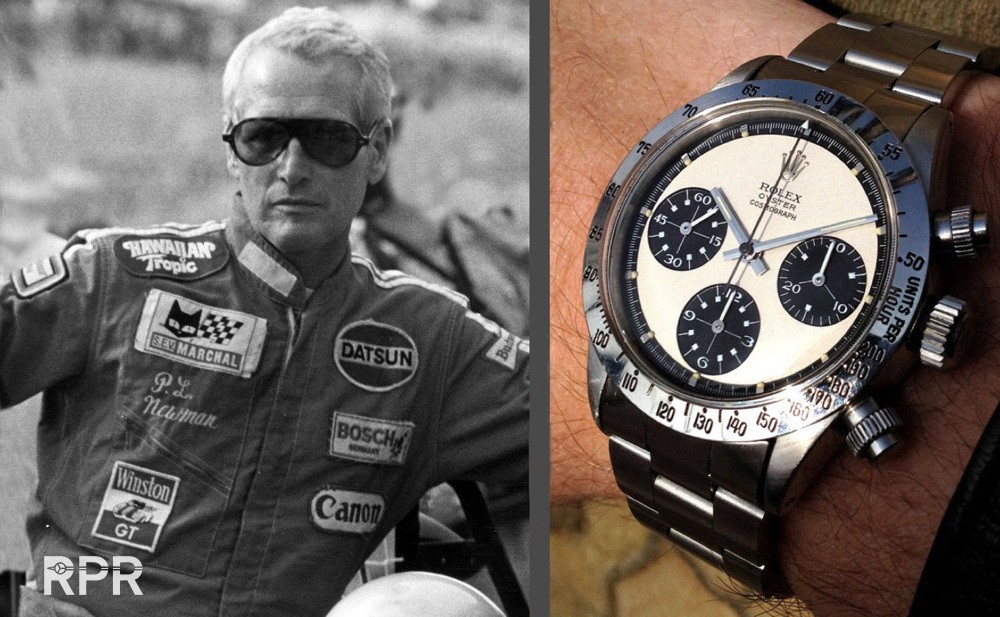
A handful of Rolex history..
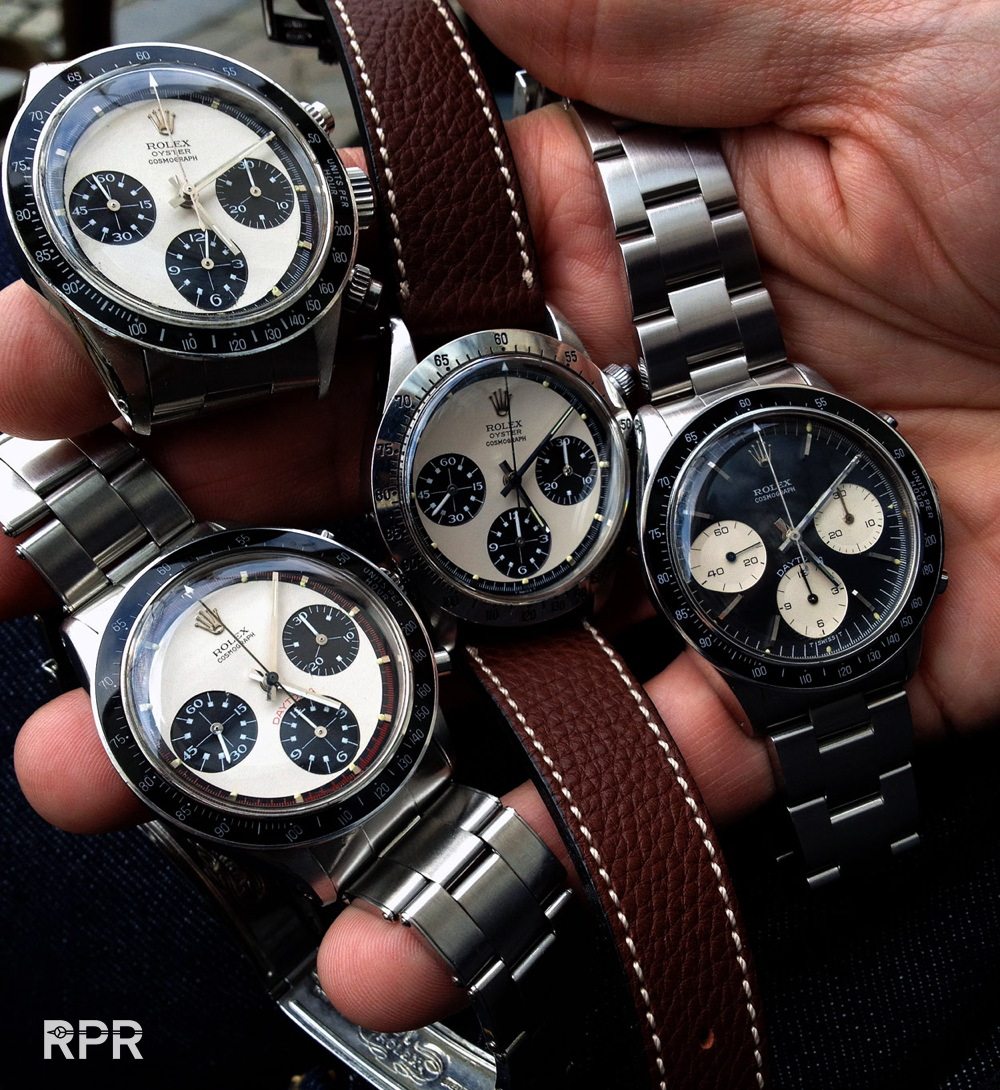
The Daytona Racing Track…
Learn everything about the “hidden secrets of the Oyster Daytona Paul Newman” in my previous article here on RPR…
Super cool Mr Paul Newman, this time with a black Ref 6263 Daytona…
Sigma Rolex Daytona Ref 6263..
Small differences that at first sight are not directly visible. The Sigma sign at 6 o’clock, the serif typography and different size of the sub-dials (Big Eye) all are very important for the collectors community of vintage Rolex…
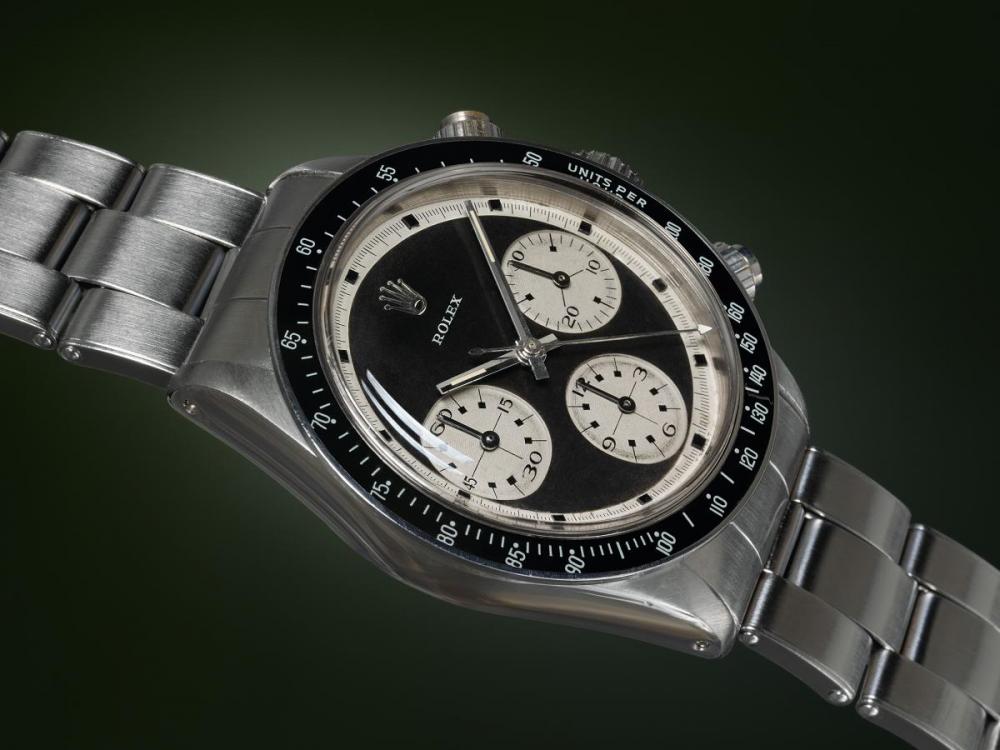
Above the Prototype Daytona Neanderthaler & below the Daytona movement from the front side, from underneath the dial…
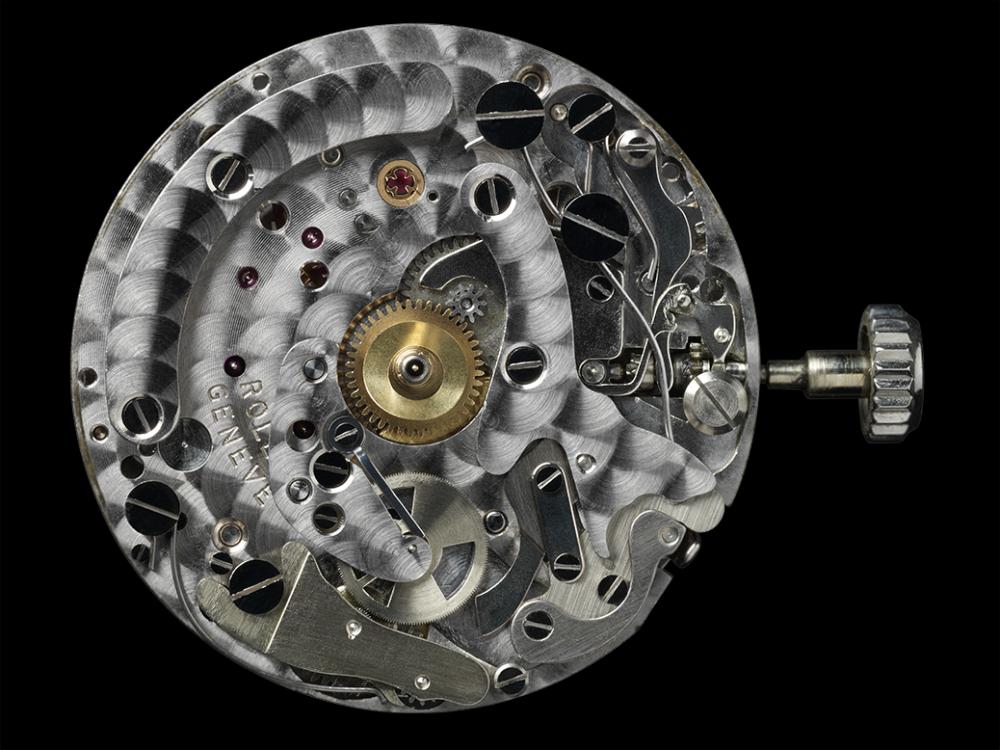
14K Rolex Daytona Ref 6263 on USA Jubilee from 1977, for sale on RPM over here…
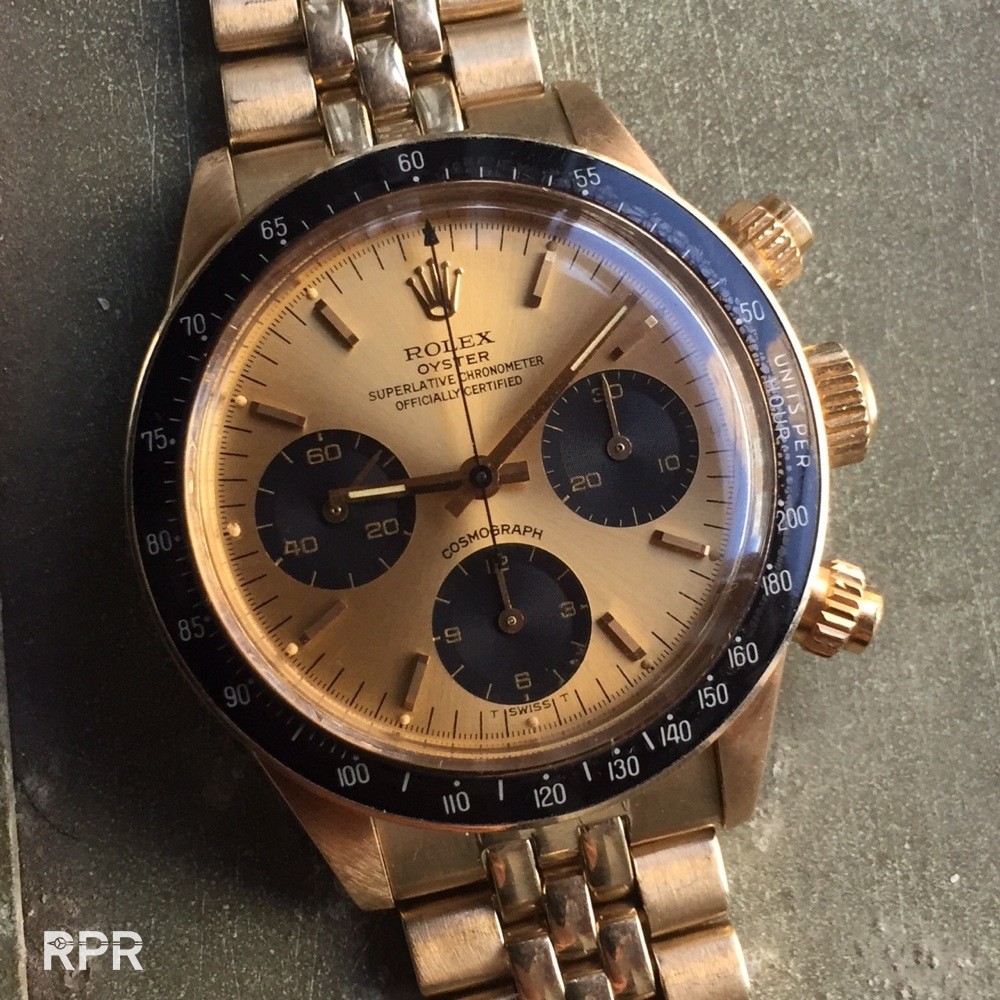

Daytona racing track…

Tropical Daytona’s. From original black the sub dials or even the whole dial changed it’s color to brown.

The sub dials turned to a very attractive light color brown..
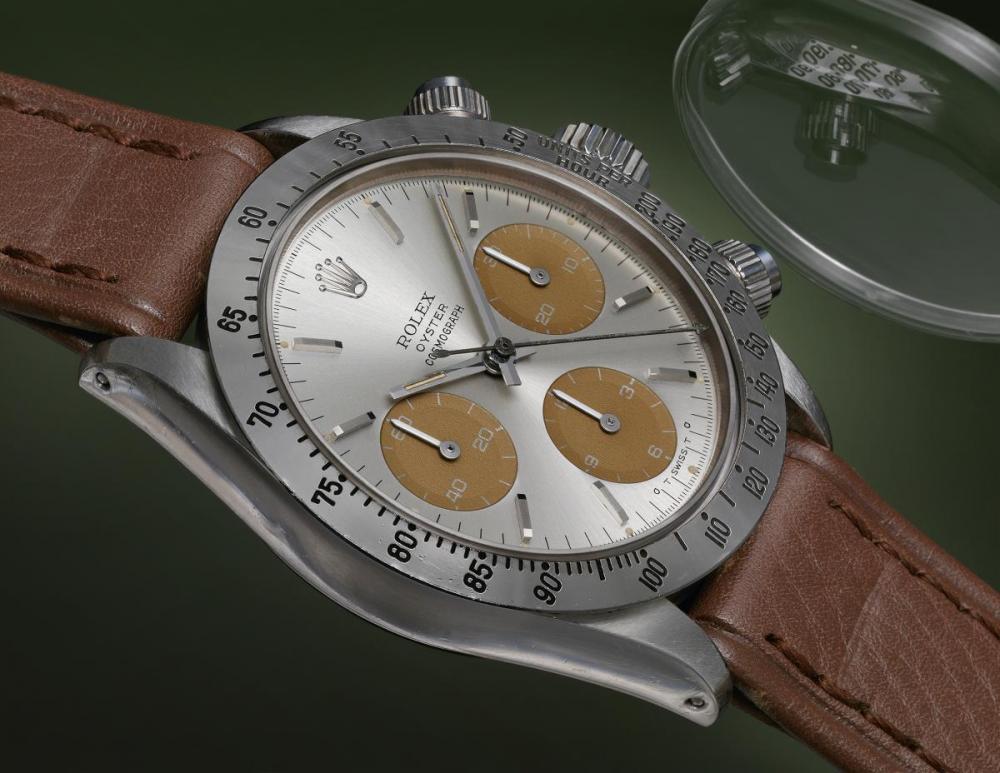
And here we see with this rare Oyster Paul Newman the outside track changed from black to dark brown..
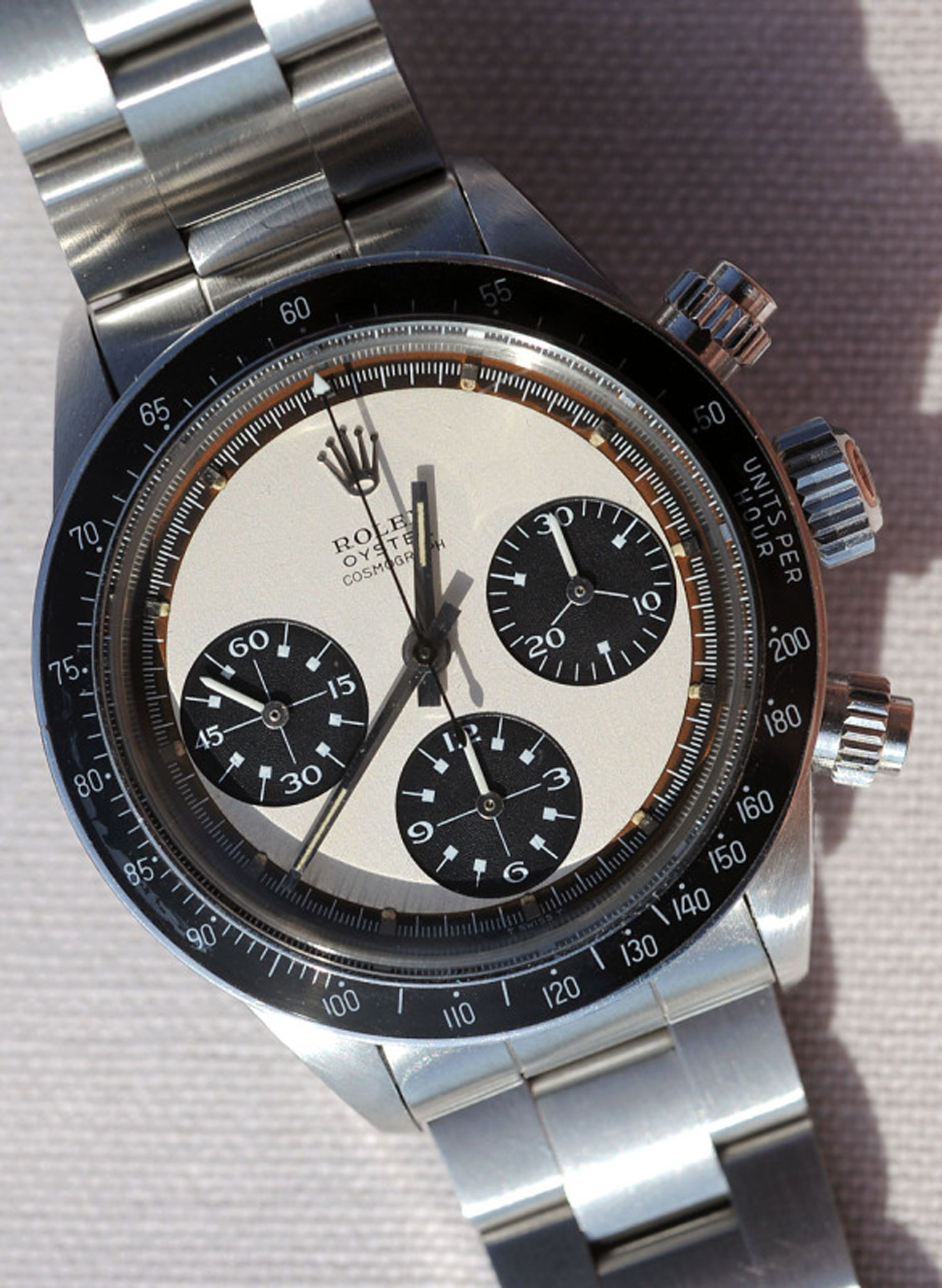
Big sub dials vs regular sub dials on the left. The bigger version is called by collectors: “Big Eye”..
18K Rolex Daytona Ref 6263 “Big Eyes Sigma” with French hallmarks, for sale on RPM over here..
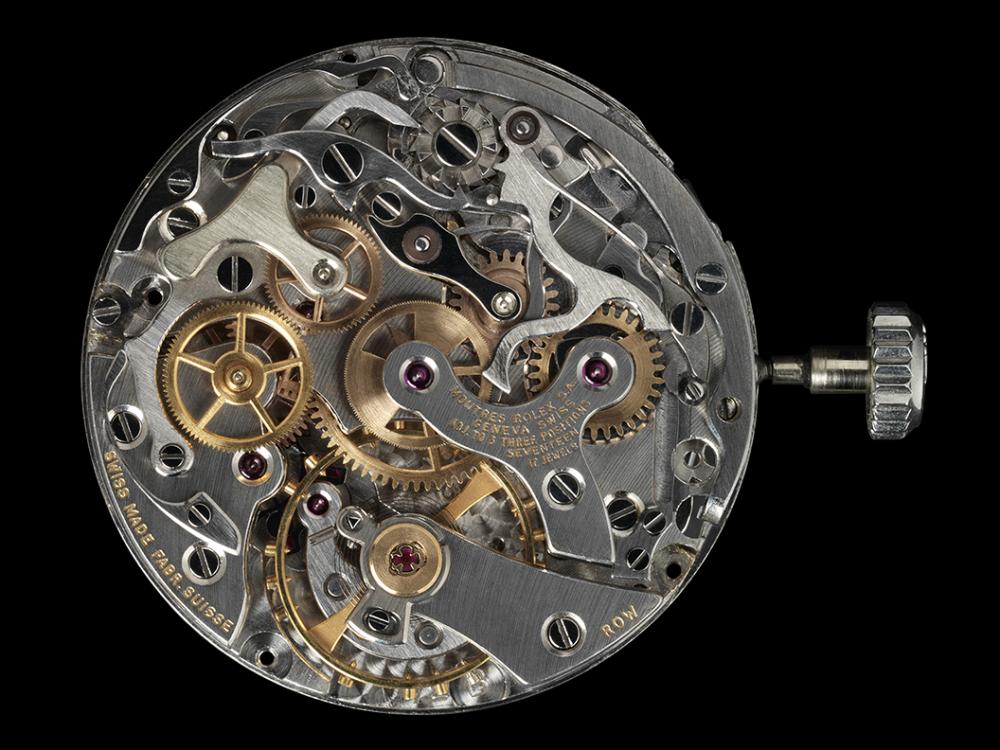
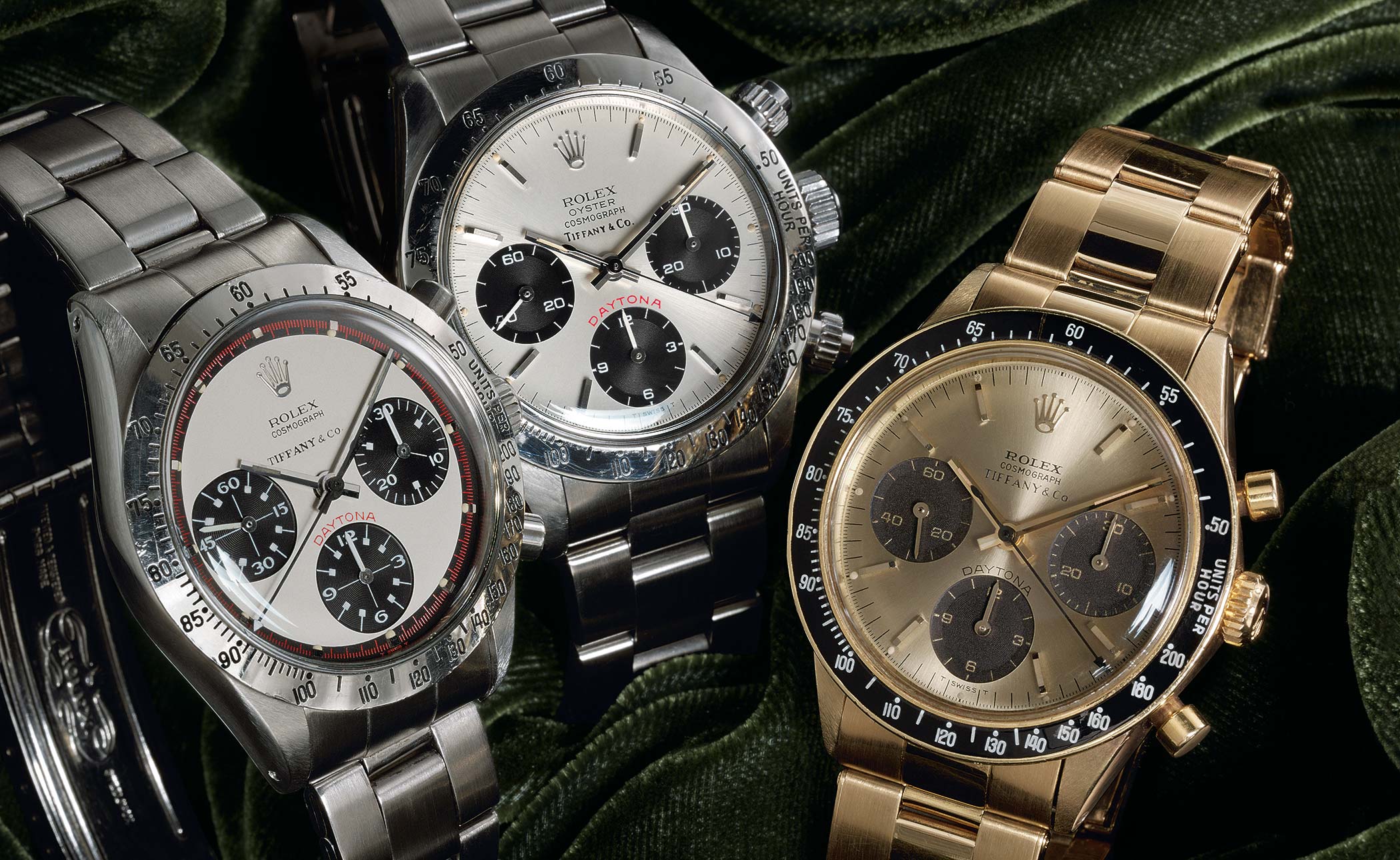
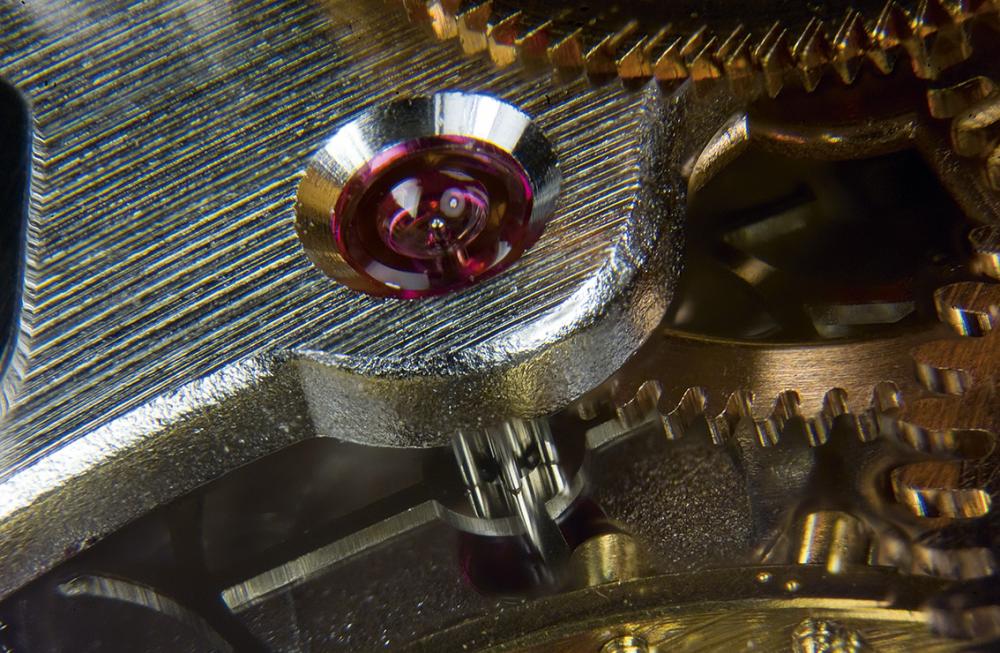
The Paul Newman dial or Exotic dial was introduced by Rolex to push the slow sales of their Daytona end 60-ies. You immediately notice that the PN dial is lighter by color, more white then the silver big red ones.

Up close of a perfect Ref 6265 Oyster Paul Newman…
Full Set Rolex Daytona Ref 6263 bought in Germany in 1986 paying like € 1000,= for it 😉
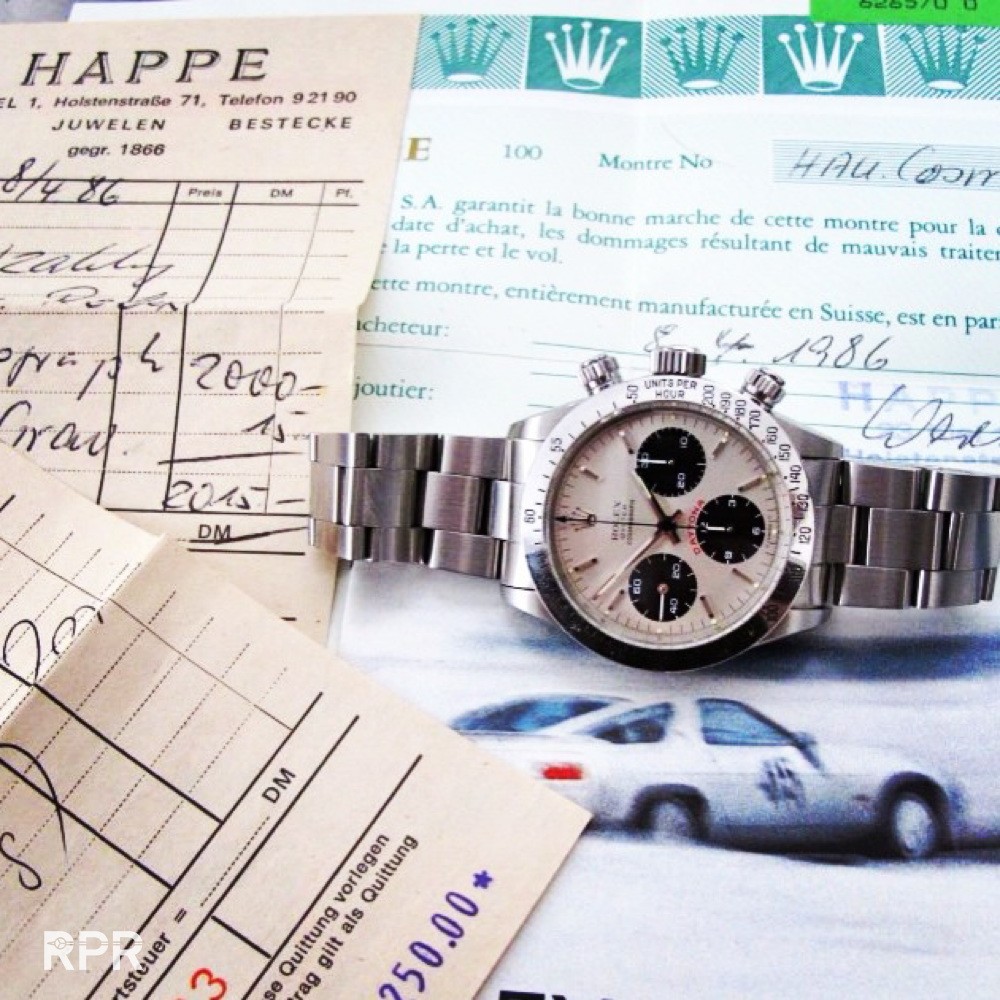
Late Rolex Daytona Ref 6263 Big Red…
Among the various versions of the Paul Newman Daytona, the model sporting a black background and screw-down pushers called RCO or Oyster Down or in italian Oyster Sotto, becomes the most prestigious and sought-after by collectors all over the world. A rough estimate indicates that a little more than a dozen appeared on the market, including both public and private sales, and they all became crowning jewels of the most important international Daytona collections.
Technically manufactured in a similar way to the latest versions of push-down buttons Daytonas, however the difference lies in the presence of the “Oyster” designation, typical of its reference 6263. On normal dials, “Oyster” is located always between “Rolex” and “Cosmograph”. This holds true also for the white Paul Newman dial. However, on this model the dial reads “Rolex Cosmograph Oyster” instead of the normal “Rolex Oyster Cosmograph”.
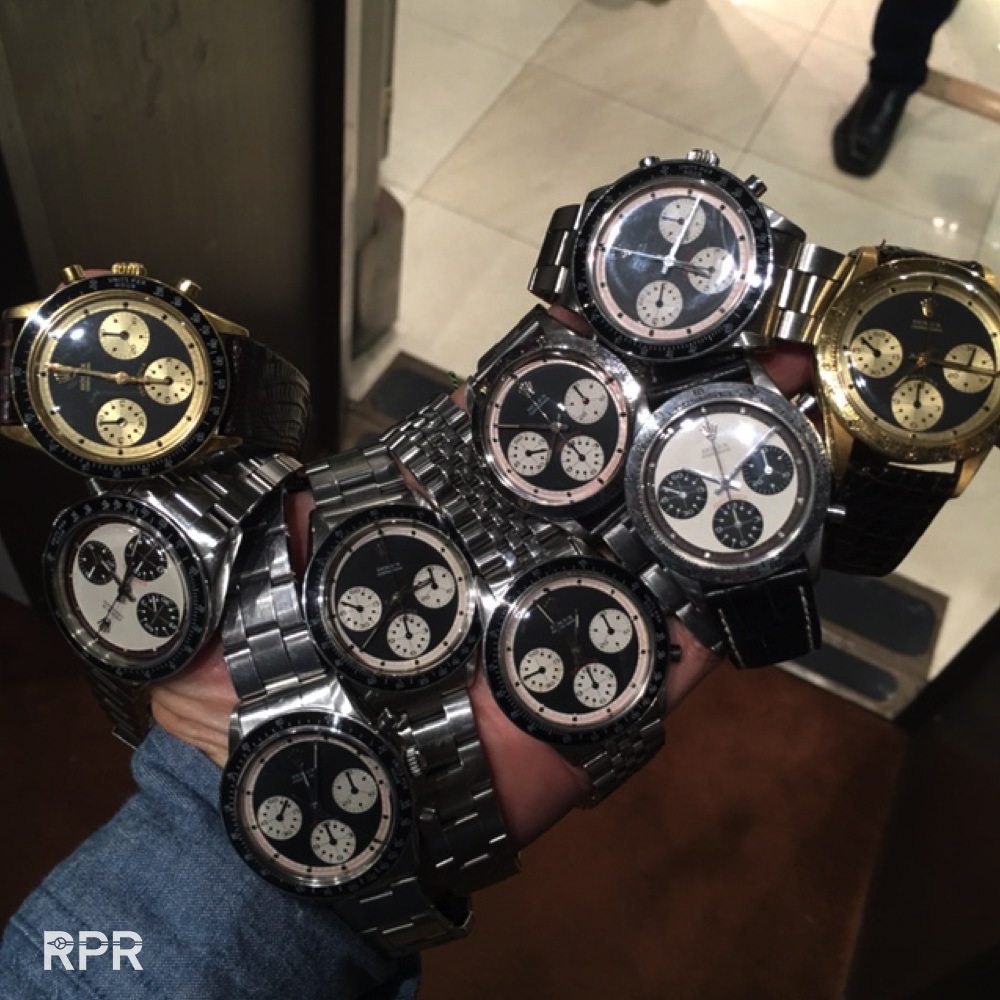
Another noteworthy feature is the different font used for the Rolex designation on this dial. Compared to all other Paul Newman dials, except for a few rare dials made for ref. 6262 and 6264, the R is bigger and the serifs more accentuated. Beyond its graphical appeal, this feature enhances the value and desirability of the present timepiece.
Consequently, this watch reflect characteristics typical of the first series production. For example, the main case body and bezel are derived from previous models, the case back is internally stamped 6239, the caliber is 727, and the screw-down pushers are millerighe.

A rare white RCO is for sale on RPM, follow the link to our trusted RPM market place..
Soon for sale during the”Start Stop Reset” auction in Geneva. Read more about it at my earlier RPReport…
Only a handful of examples are know of the gold Ref 6263 Oyster Paul Newman..
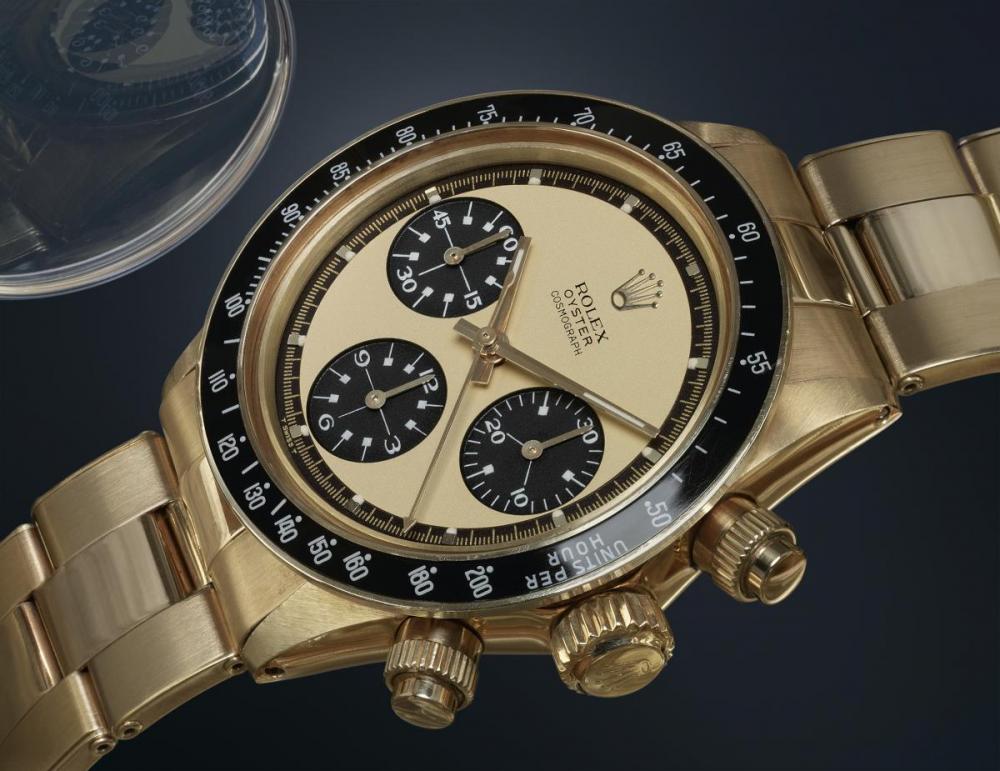
Some special deliveries of the Oyster Daytona made by Rolex, here the so far unique Pan Am. Read all about it at my RPReport..
And some mythical UAE & Oman – Qaboos deliveries specially made by Rolex. Read all about it at my earlier RPReport…
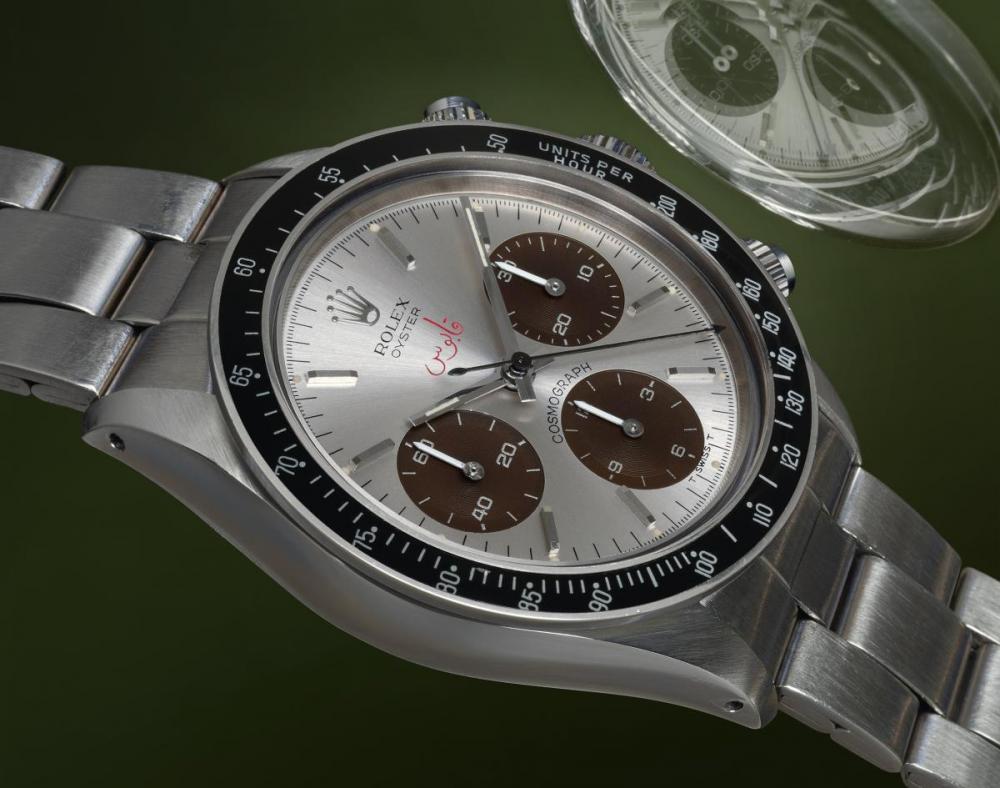
Next to each other, the special UAE on the left vs the regular Big Red Panda on the right…
Bling Daytona’s, the rare ref 6270.. 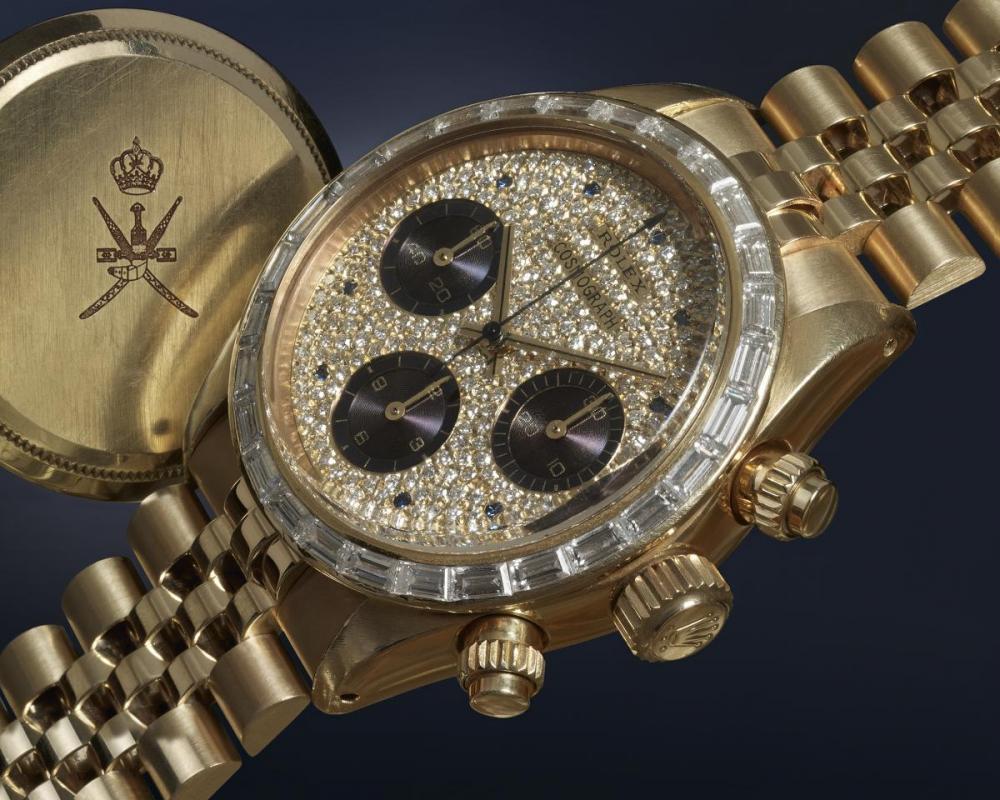
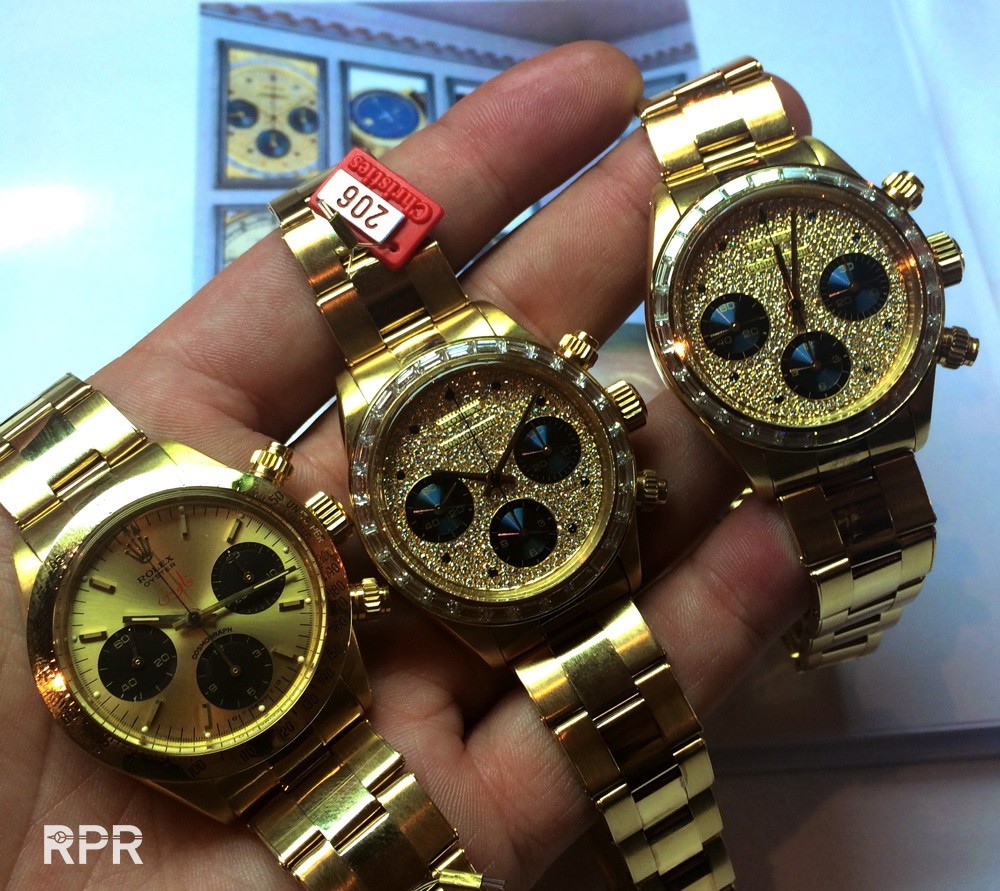
Handwinding Daytona movement…
Some more “Oyster Daytona” details from Stefano Mazzariol’s App called “I-Daytona” which you can order over here…
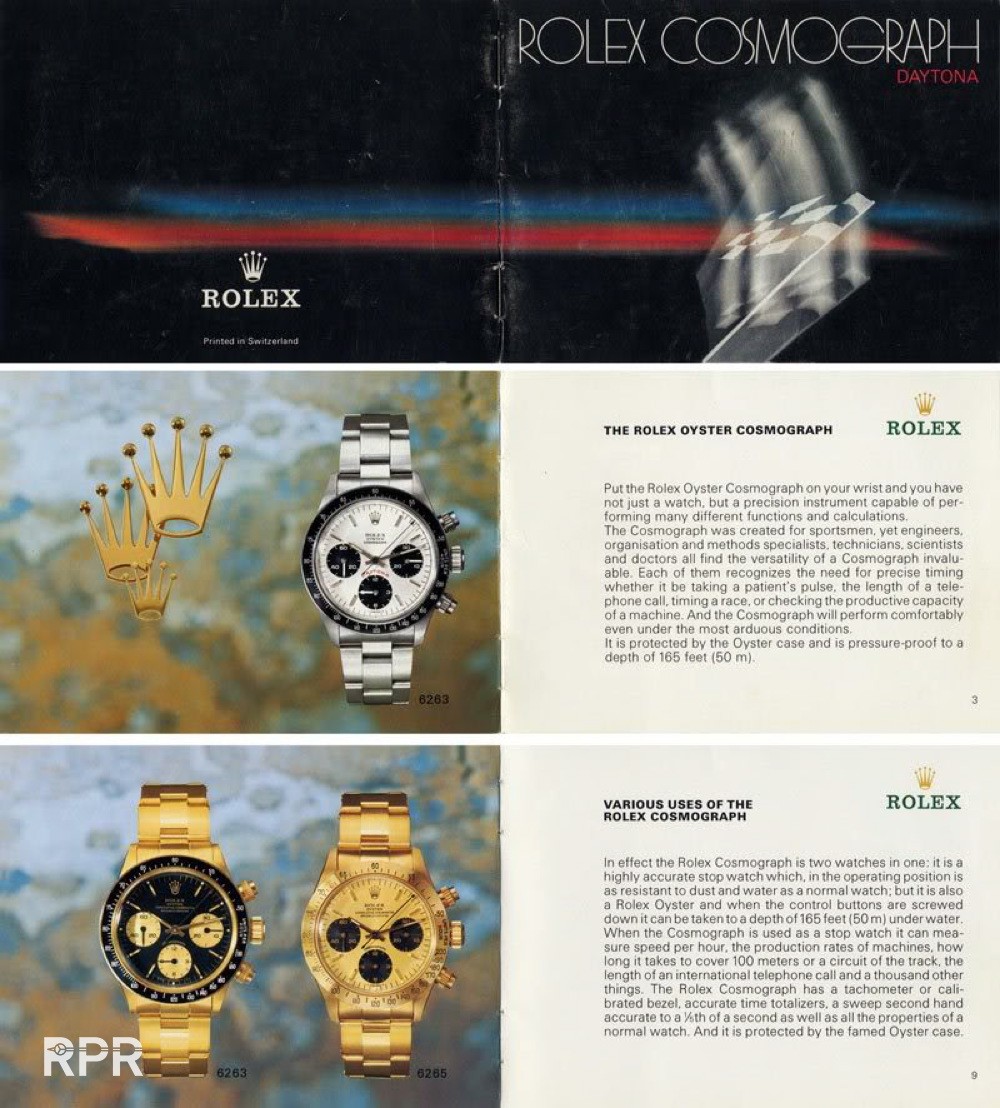
The difference between the pump and screw down Daytona case…
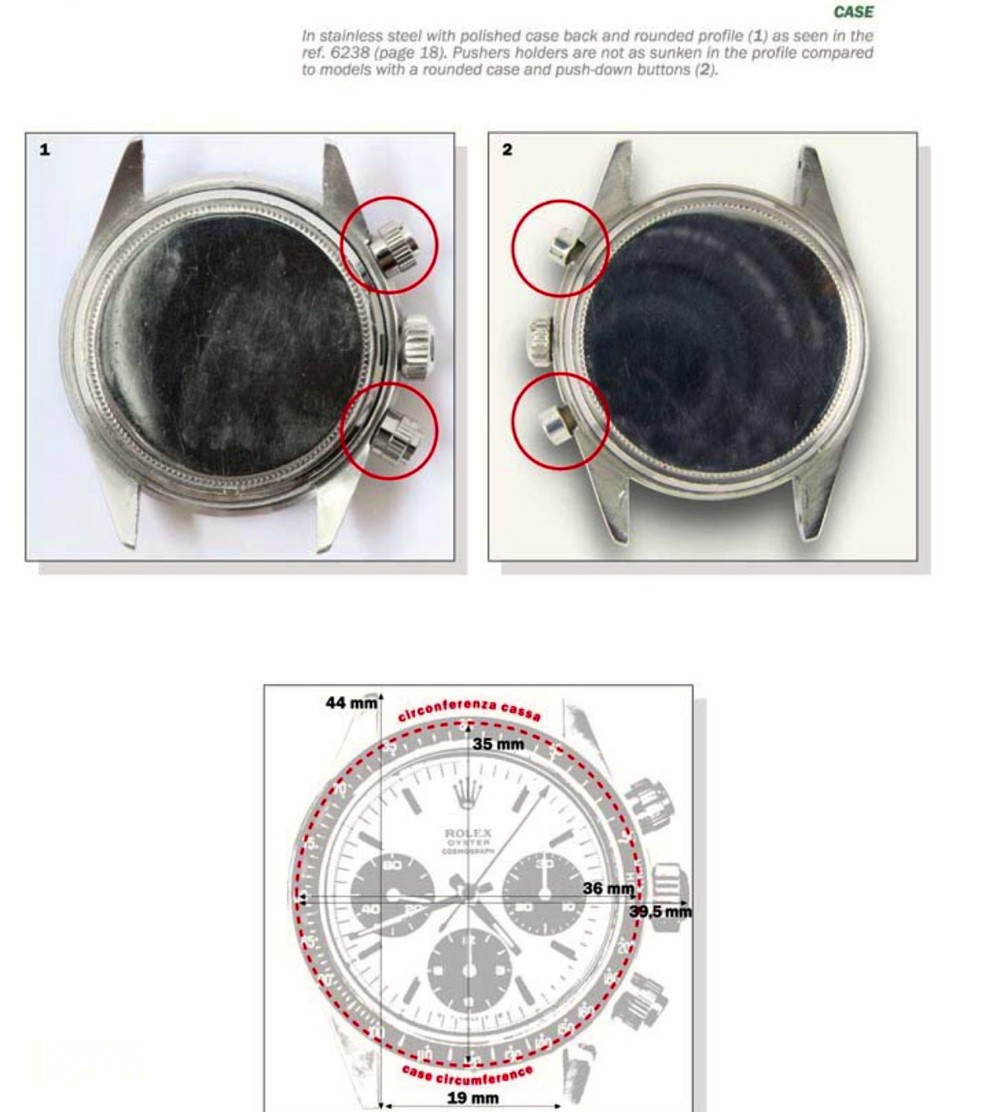
The specific Rolex typography thats been used in the Oyster Daytona..
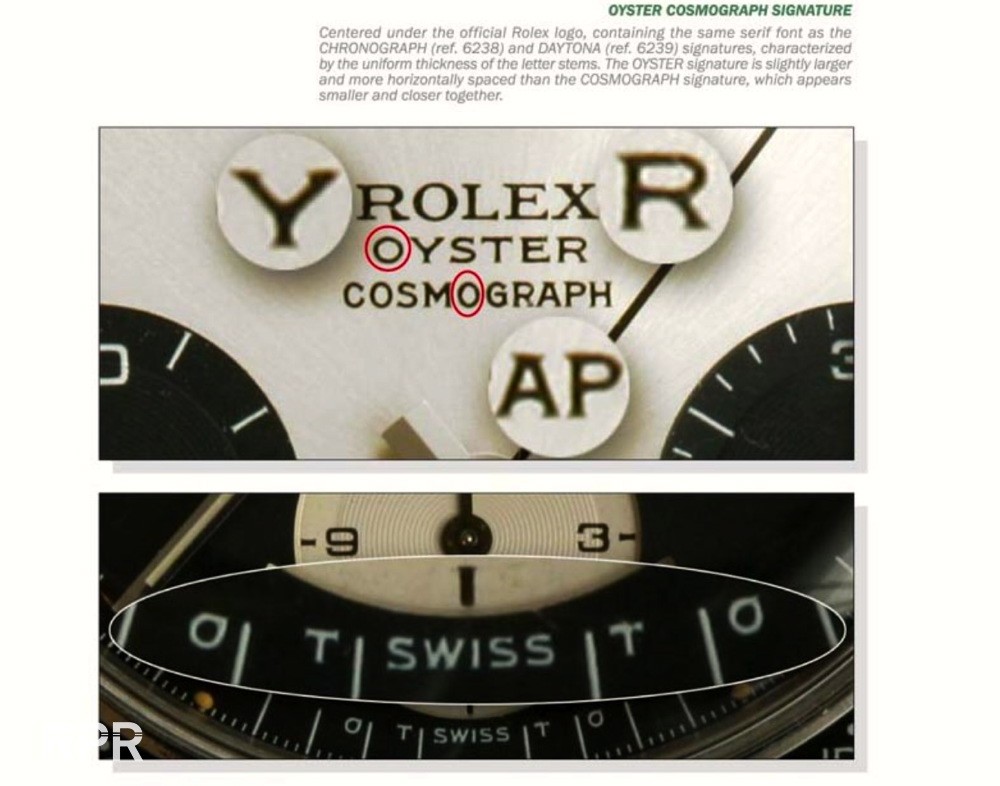
Something I get asked a lot, what is the difference in screw down pushers. Below Stefano shows you the main differences. Many Daytona have lost their original screw down pushers during a later service as Rolex wanted to update their quality of waterproofness. In the same time, for collectors, Rolex destroyed the originality, something back then nobody cared about but now is a big issue. With spare part prices of early MK1 going to 5K it matters enormously if your Daytona is having the correct pushers or not.
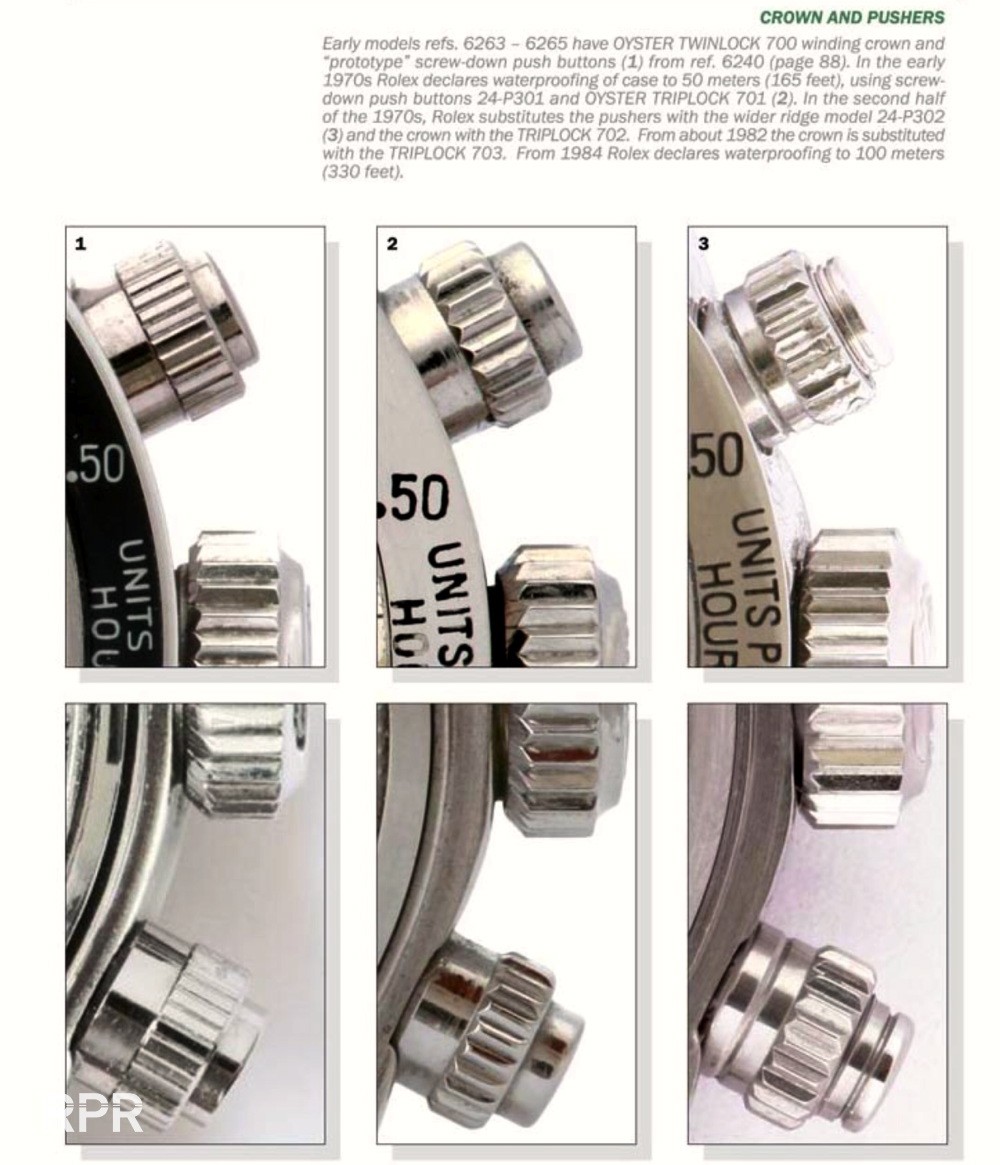
Yet another hot topic, the correct bakelite bezels. If you focus on the 2 of 200 then you notice immediately the different typography that has been used. Same as with the correct screw down pushers, having an MK1 bakelite bezel on your Ref 6240 is adding substantial value. The spare part prices for an MK1 are reaching 5K and more already!..

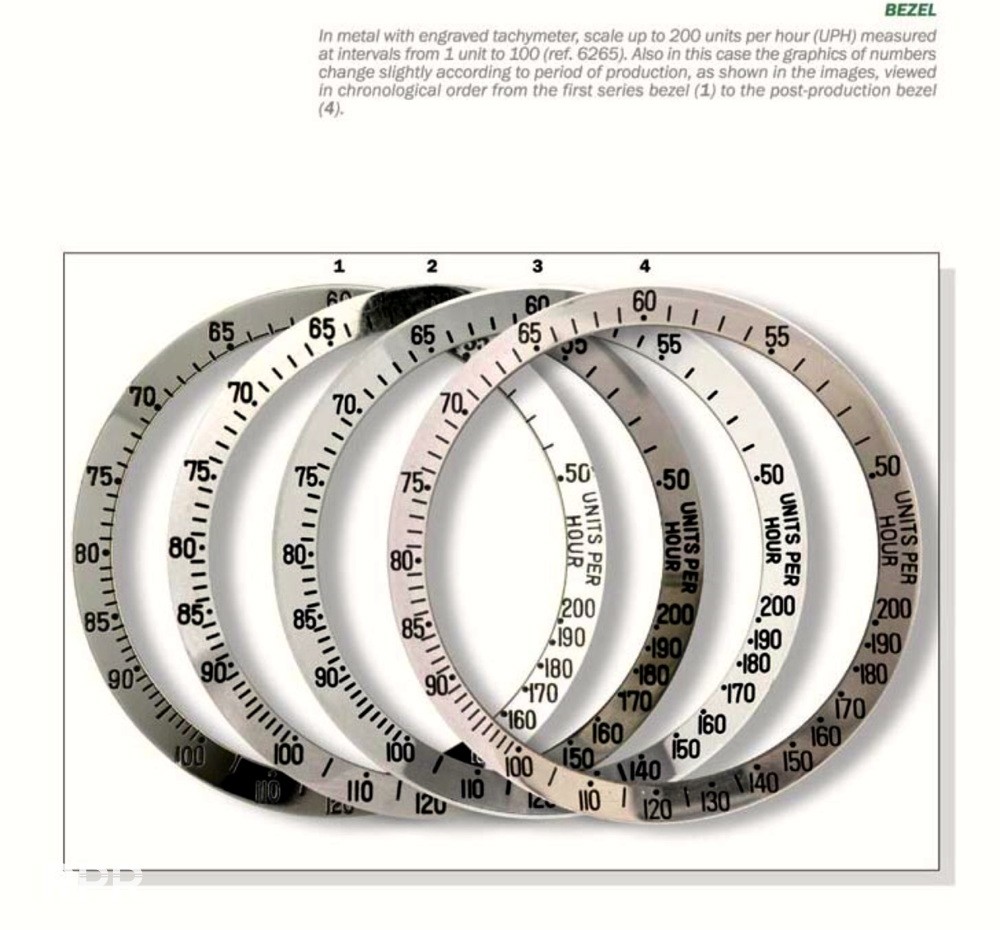
Official Rolex documentation teach us: “A stop watch, guaranteed waterproof to a depth of 165ft in it’s oyster case, when push button and winding crown are screwed down”..
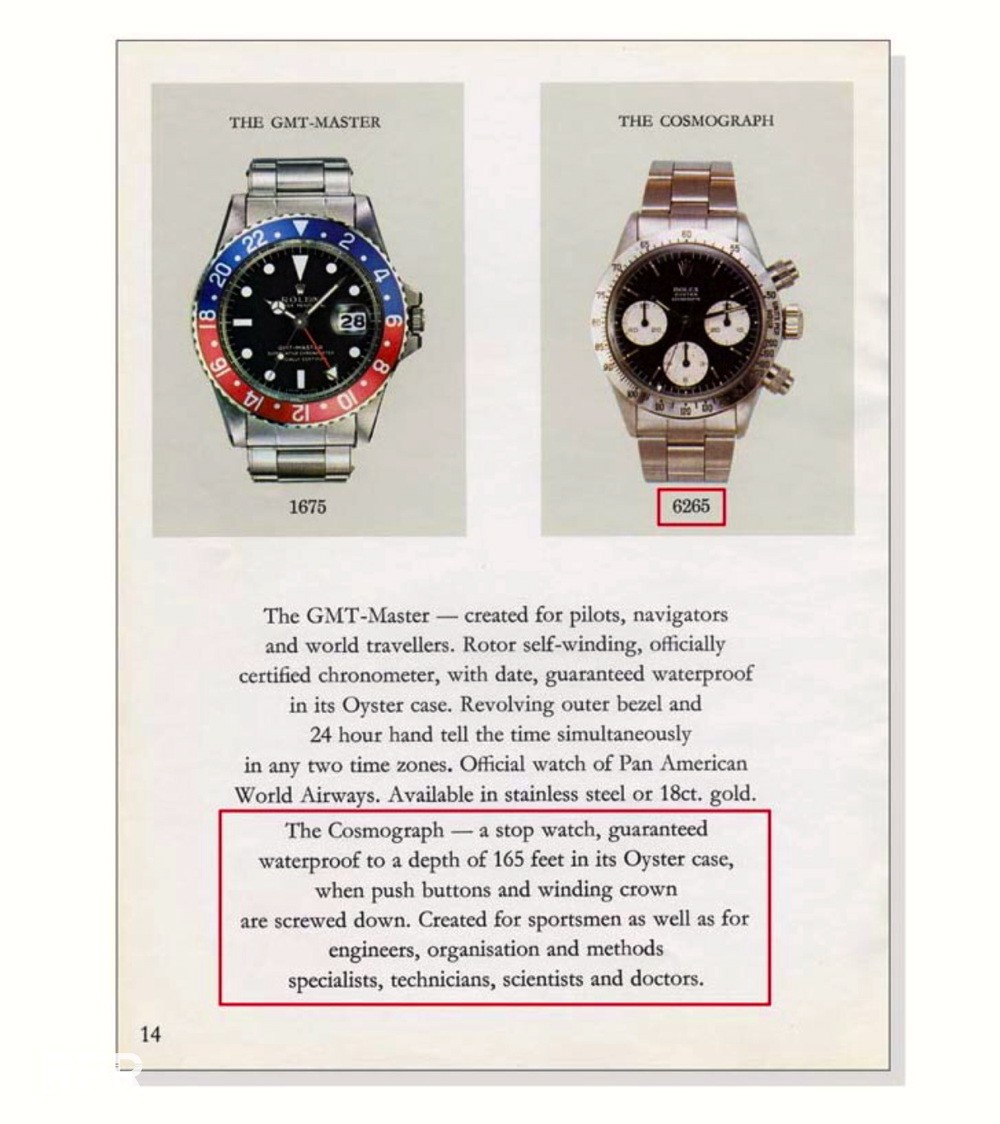

The first Oyster Daytona Ref 6240 published in Rolex catalogue…
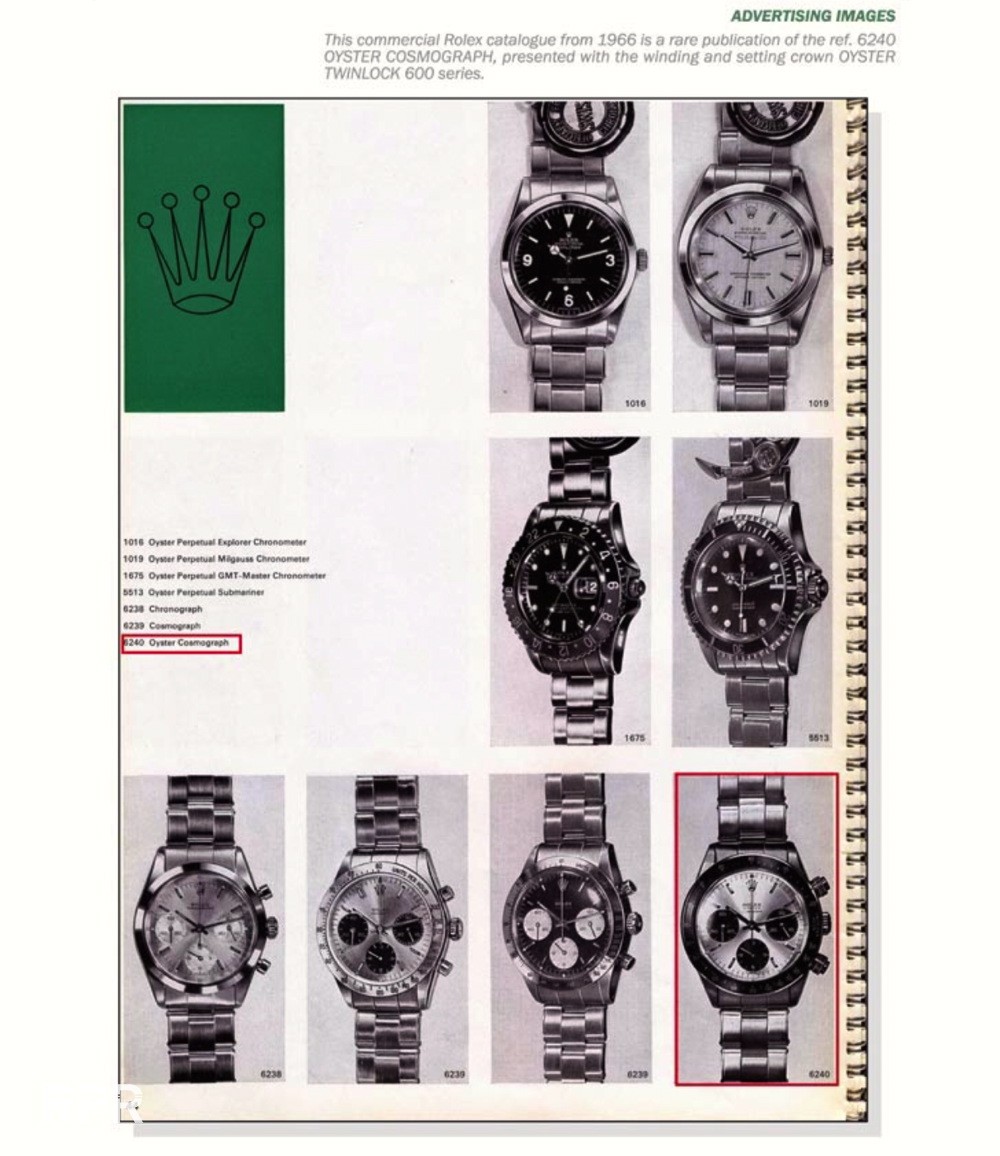
The case back Rolex inscriptions made in their first Oyster model, the Ref 6240…
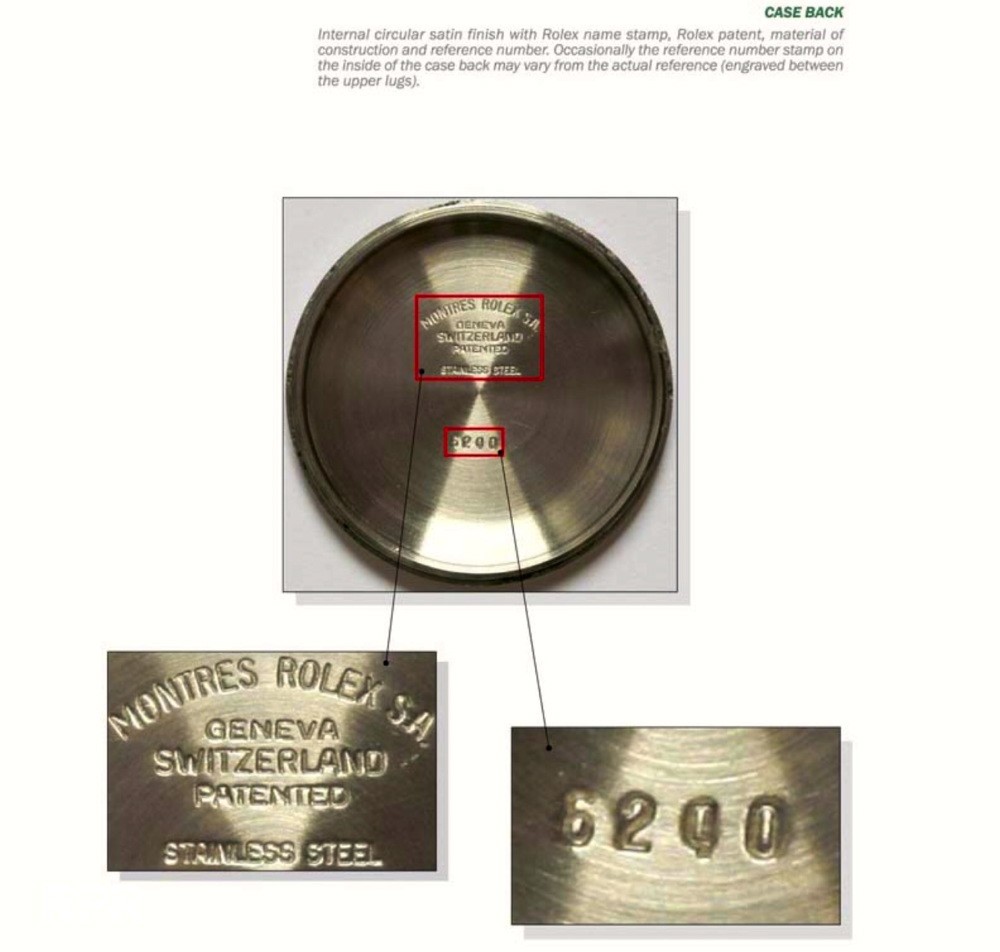
Then another question I get a lot of times, the difference between old and service Daytona dial. Or the so called “Big Red ” signing. How do you see the difference? In below picture from Stefano all is explained..
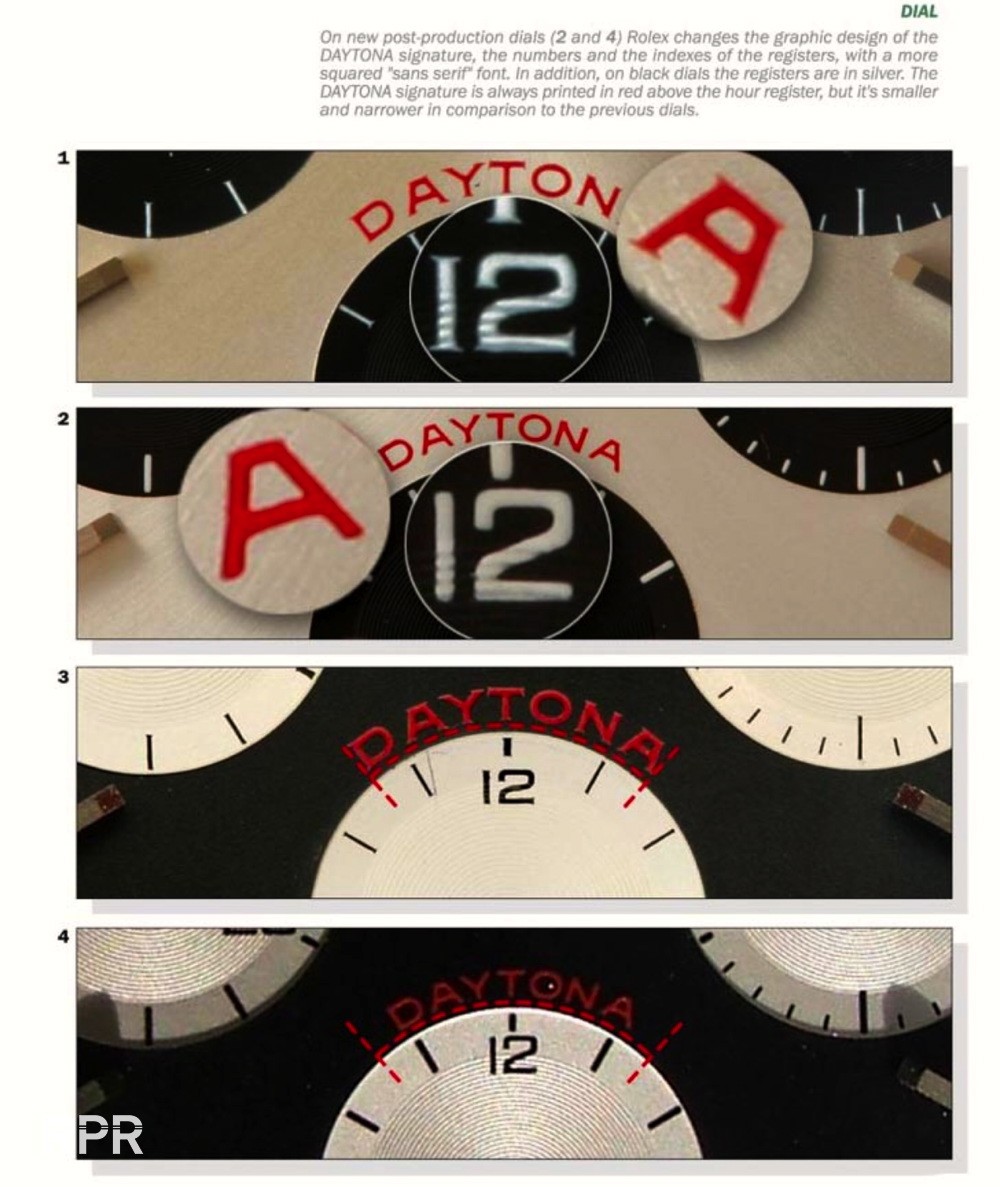
Then the difference in “floating” or non floating, which we saw with earlier examples…
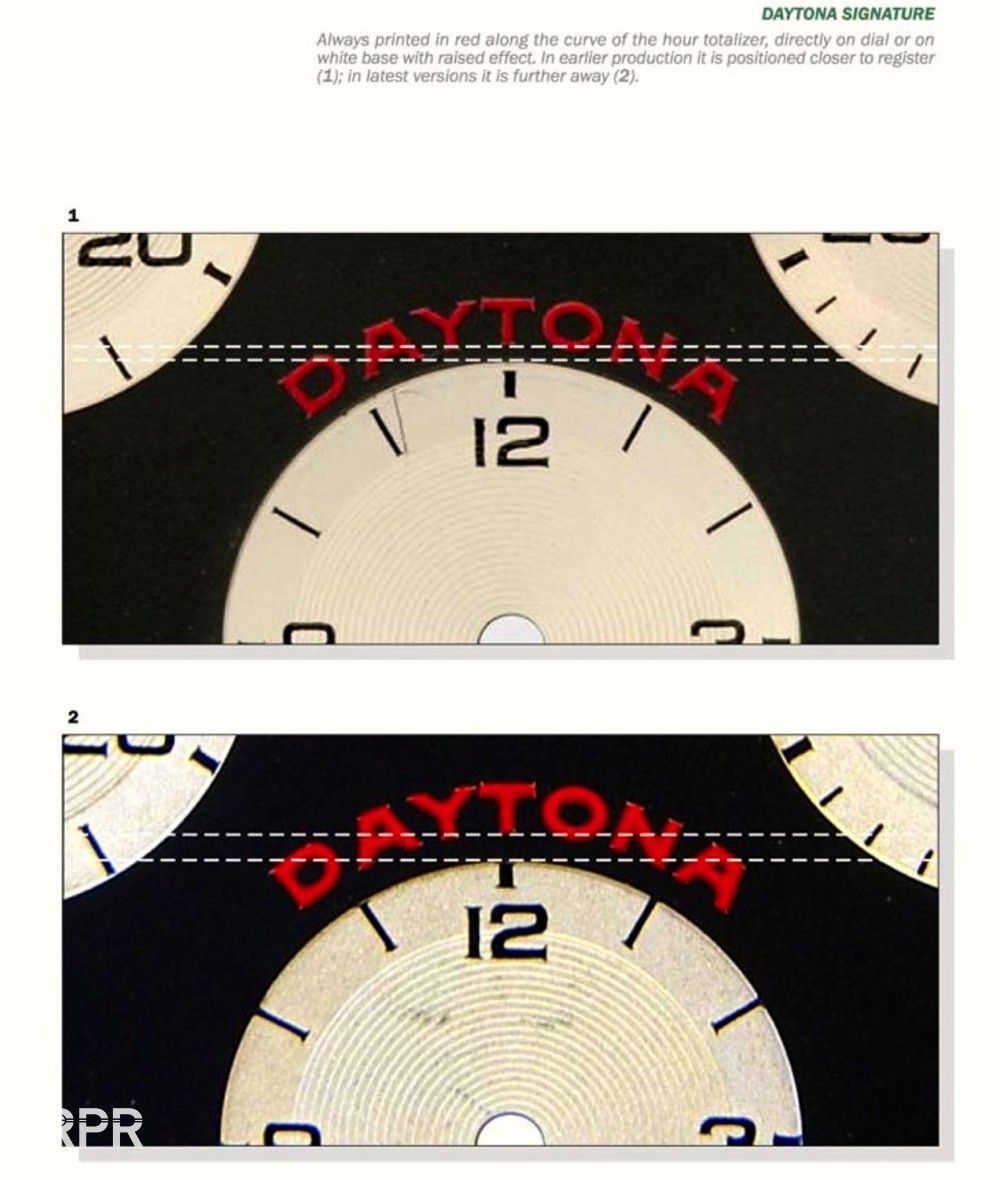
Next in evolution is the automatic Rolex caliber,
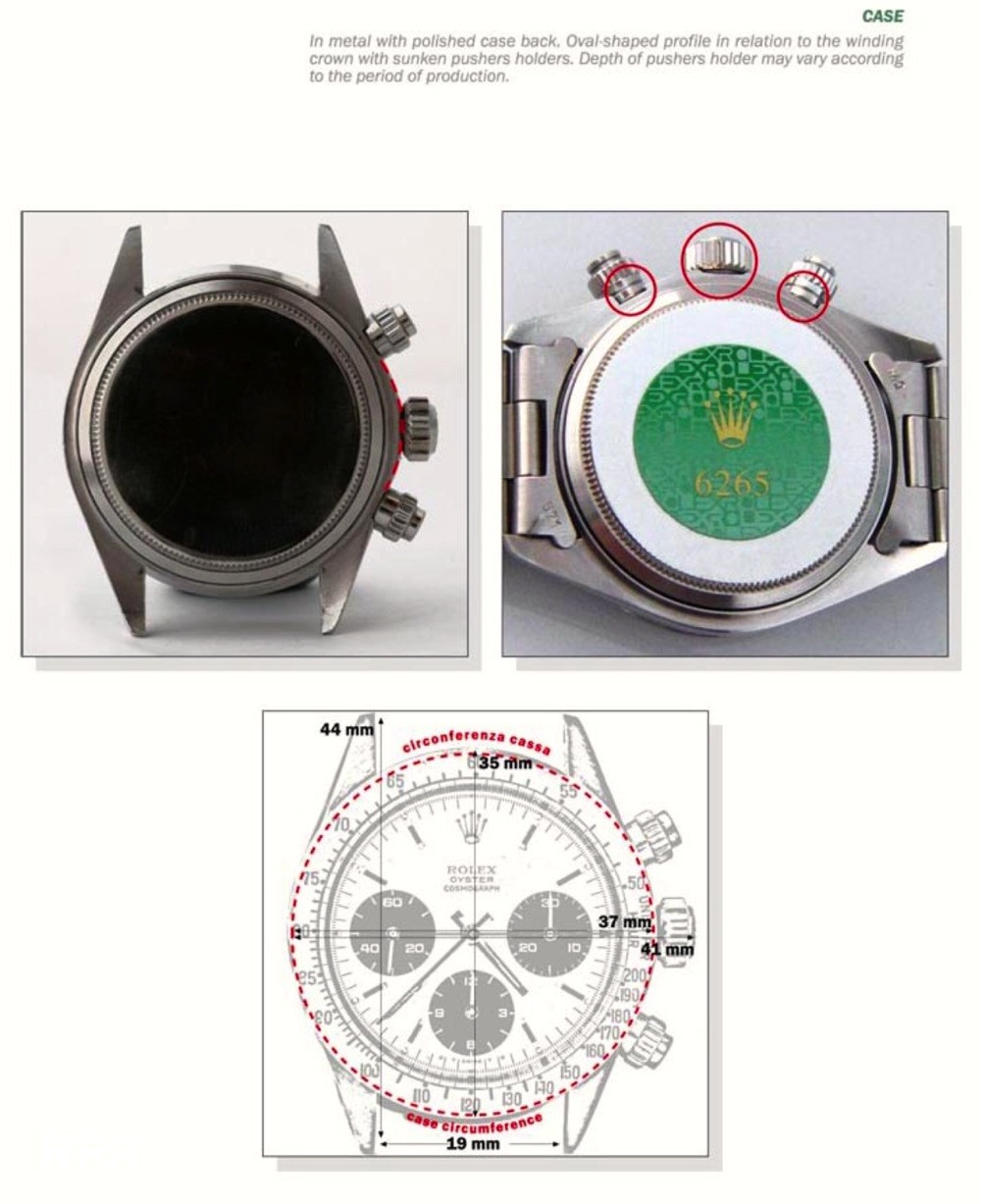
Data sheet of the new automatic Rolex movement, the caliber 4030.
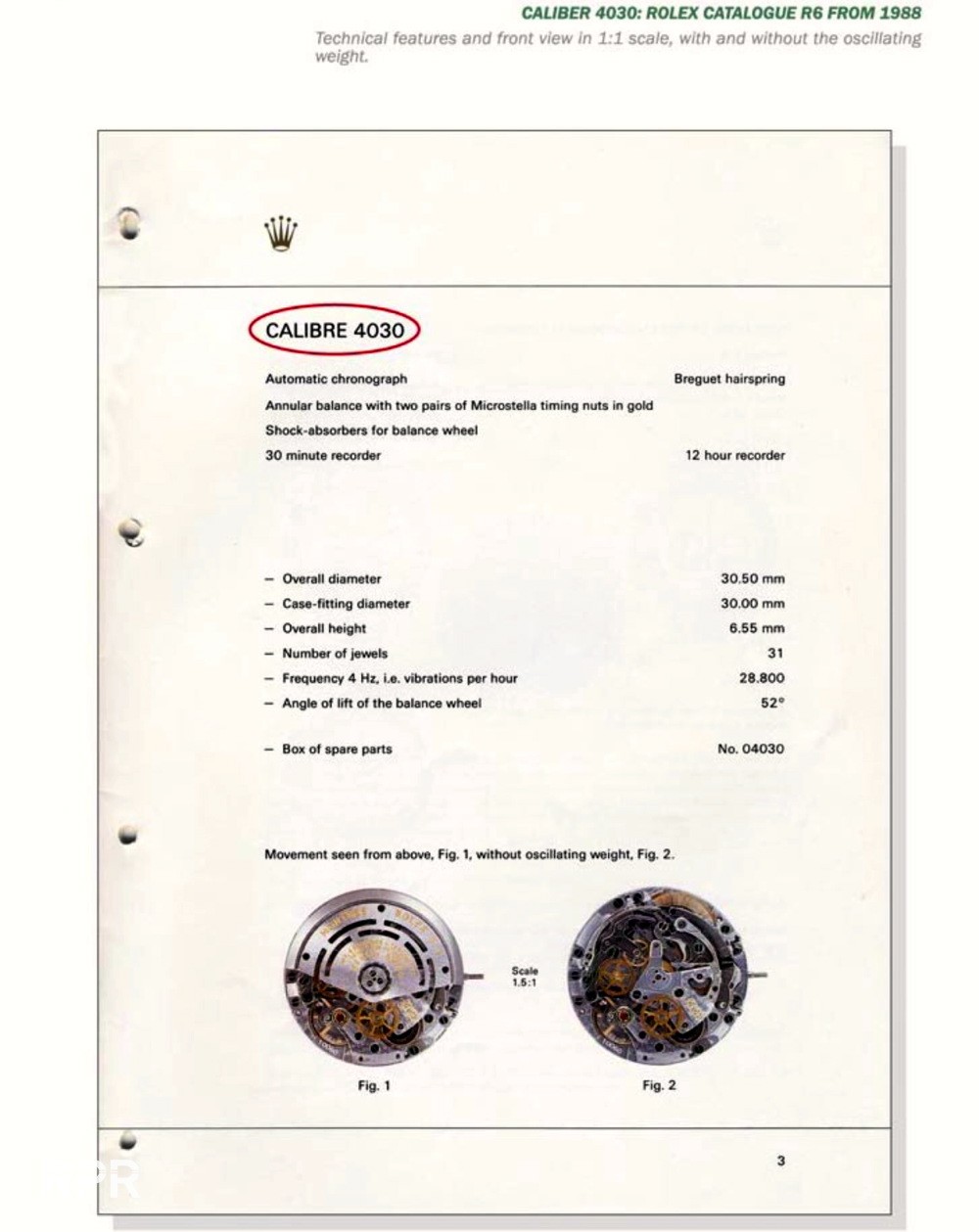
And the differences in the bezel insert…
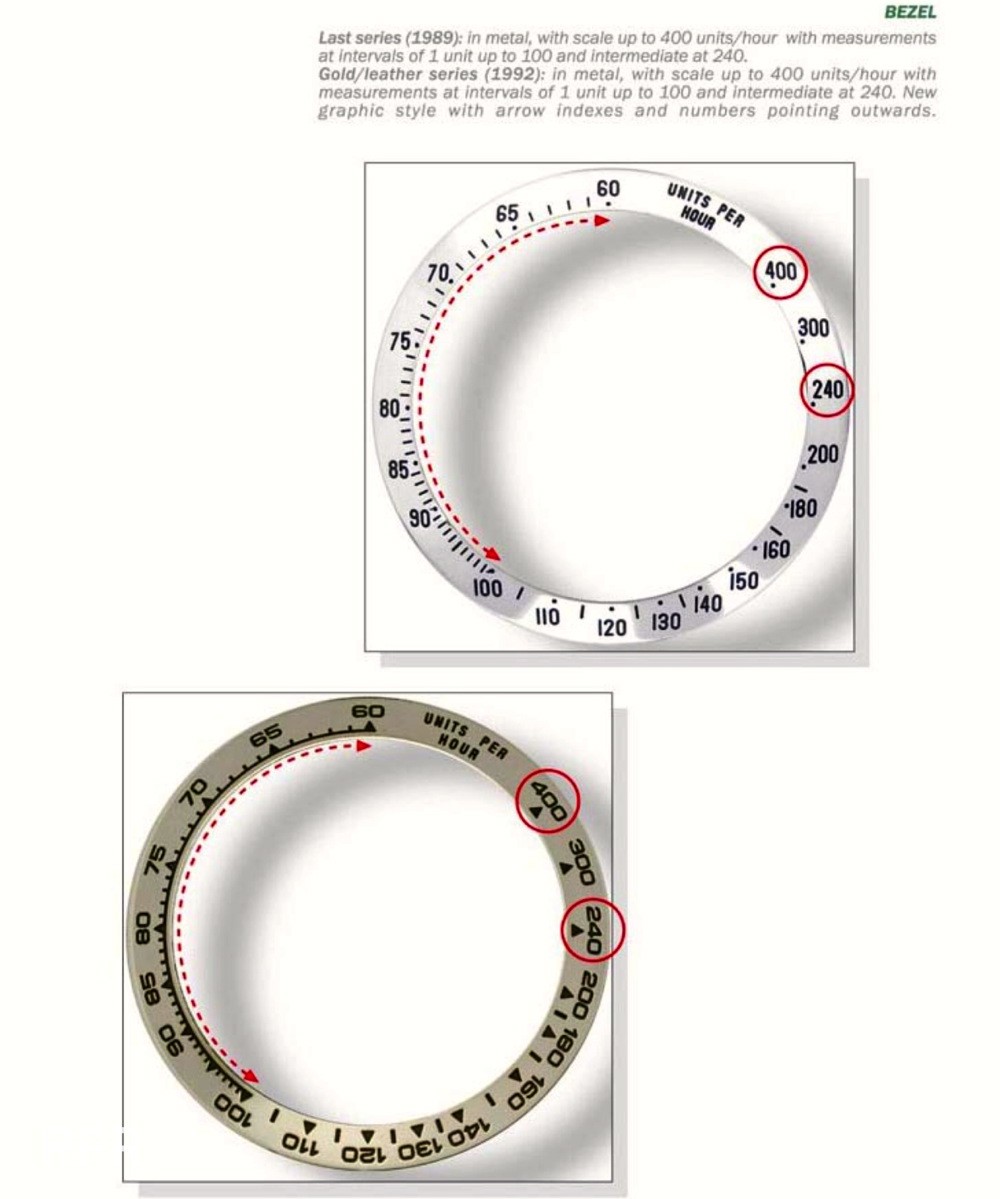
An overview of the 1965, 1978 and 1987 Oyster Case differences…
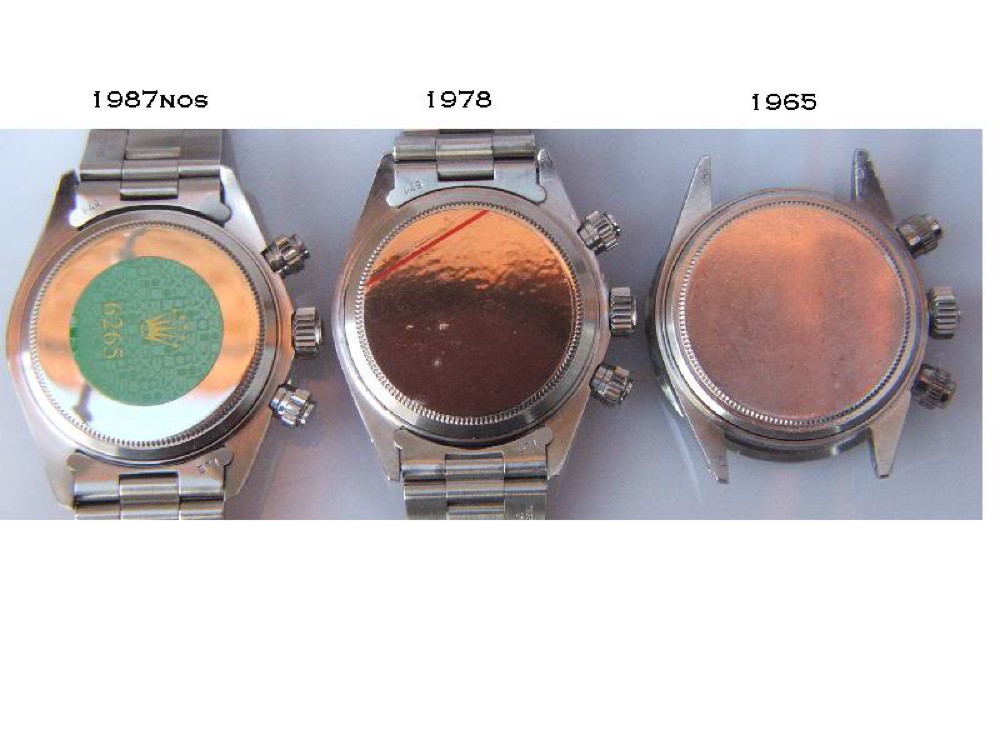
Official Rolex catalogue of their new Ref 16520, 16523, 16528 and 16518…
As with every successful Rolex model, the dial maker changed the graphic every year or so, find the differences up close of the steel 16520 below…
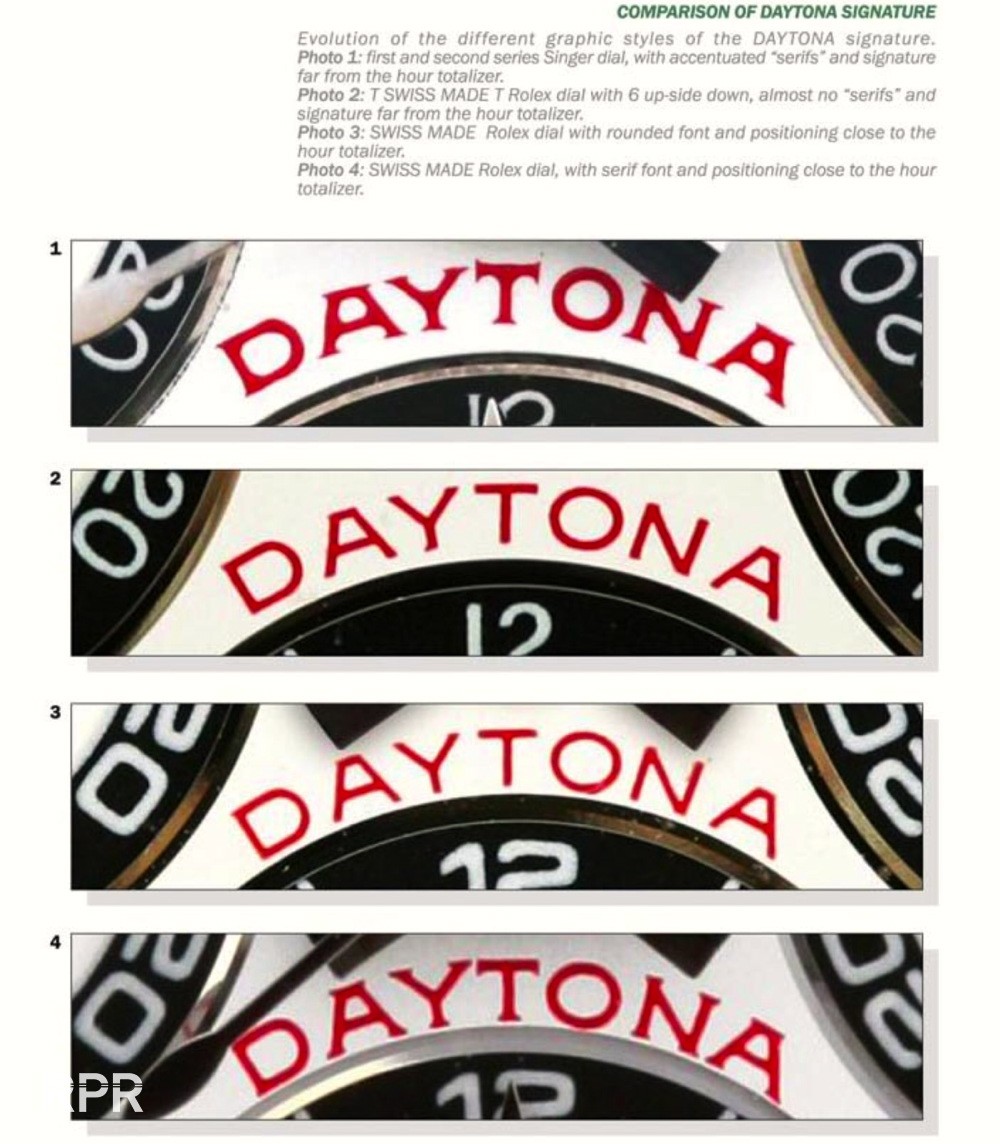
The silver & black Ref 6263 & 6265 dial…
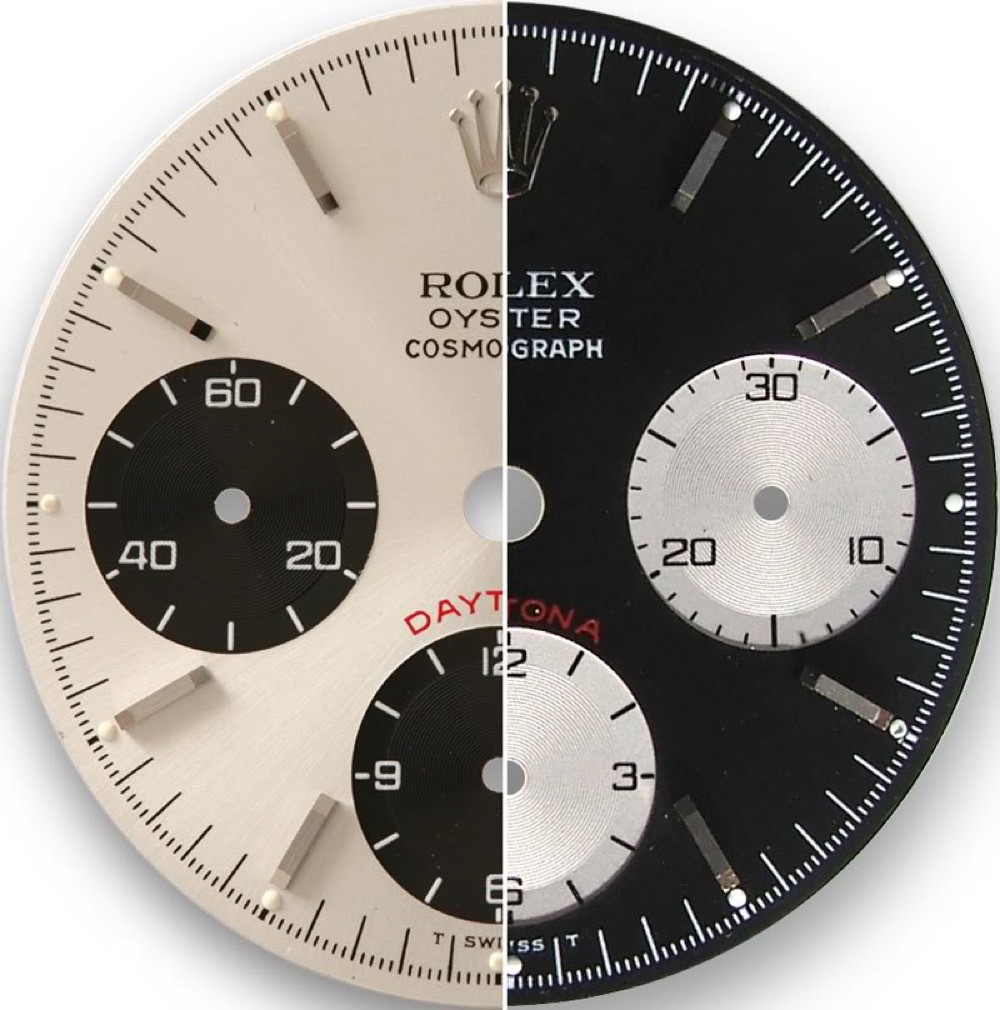
The Daytona bracelet ref 78350 with 19mm end links from 1977…
Final Rolex booklet for the Daytona Cosmograph..
Known in 2 examples is this transitional Automatic Daytona in stainless steel with old font typography and new perpetual case and movement…
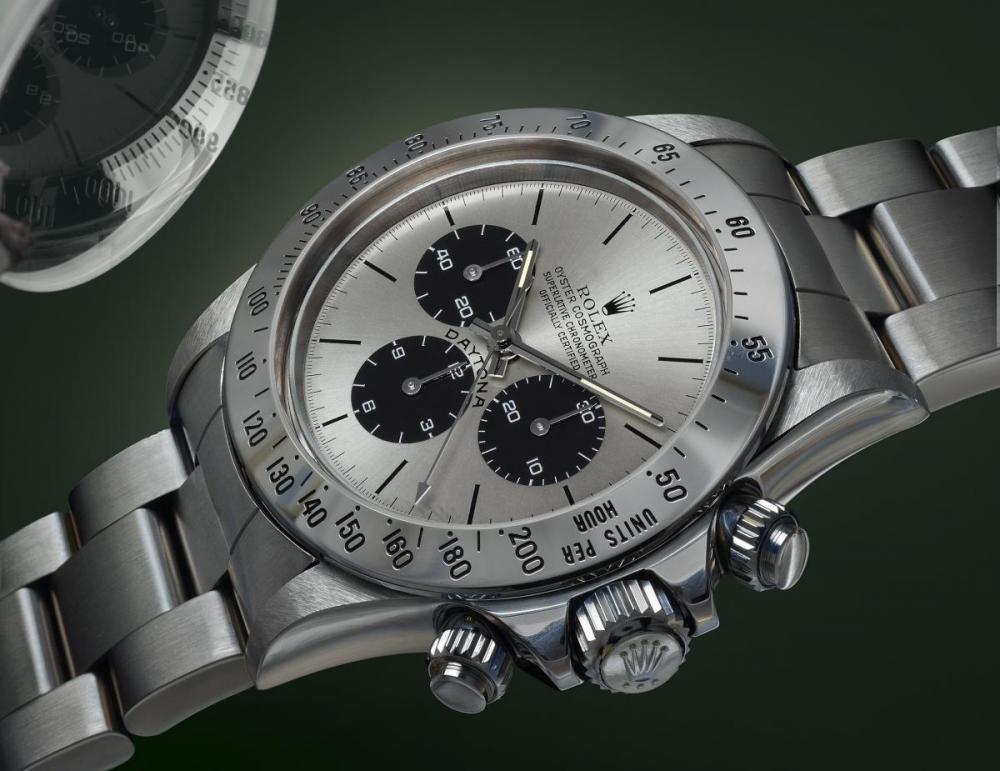
With regards to the collection history of Daytona, the moment of “breakthrough” does not arrive until 1988, with the introduction of automatic movements and a rediscovery of manual Daytonas. Due to the slow supply from Zenith, the manufacturer of the El Primero caliber, and an underestimation of market demand, retailers find themselves with lines of clients waiting for the delivery of their new watch.
The Automatics Hit the Market.
In 1988, Rolex introduced the 16520 reference at the Spring Basel Watch Fair. The most obviously ‘historical’ change is the switch from the former manual winding movement to the new automatic mechanism. And, aesthetically speaking, compared to the previous models it presented a totally new look.
- Above, gold Ying & Yang early automatic Daytona.
The watch case of the ‘new’ self winding timepiece is always crafted in three separate parts, whilst the bezel carries the engraved 1.000 base tachymeter scale – the first series featured the 200 graduated scale, whilst the second one a 400 graduated scale. The water resistance of both the Triplock winding crown and pushers is ensured by means of a screw down system. The dial is available in two versions: a white field with white subsidiary registers framed by black chapter rings, and in black with black subsidiary registers featuring white outer tracks. The stick hour indexes and the hands are skeleton-made and luminescent – originally tritium-filled and subsequently replaced by SuperLuminova.
It immediately became a highly sought after icon with Rolex enthusiasts. In fact it was the hardest chronograph to get on the market, and retailers had year-long waiting lists. The production of this model officially ended in 2000.
- Early porcelain Steel Daytona that has been made in small quantity and due to high costs and difficulties of producing.

Throughout its many developing stages the Cosmograph Daytona has always preserved its inner essence. It is no coincidence that this timepiece still today represents millions of peoples ‘dream chronograph’, the trophy greatly sought after over all five continents. Its success is without doubt far from being doomed. The Daytona is like having a piece of history sitting on your wrist; being instantly recognised it simply ‘stands out’ and is able to convey the typical Rolex style. In conclusion, this is the essence of its success.
- A floating Daytona Ref 16520
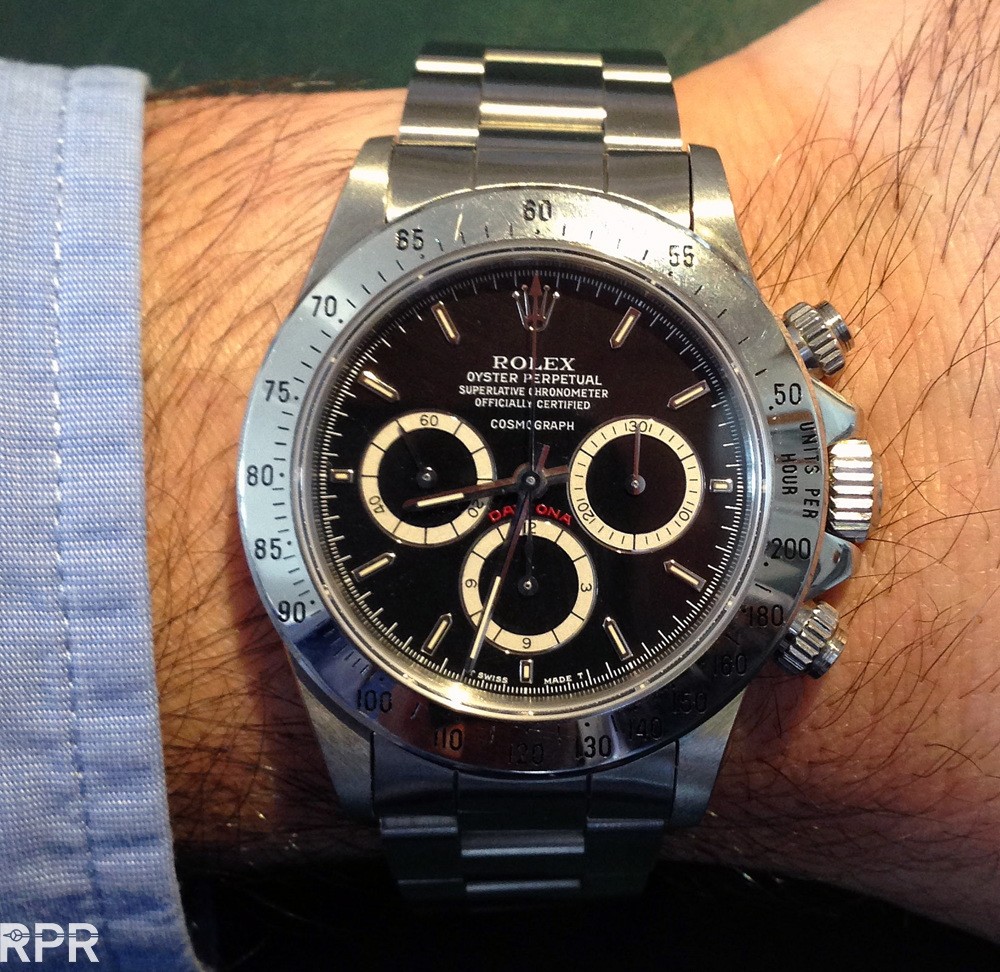

The most important innovation of the present 116520 reference lays in its inner heart: the new calibre 4130. The first chronograph mechanism entirely designed, developed and manufactured by Rolex. Other updates concern some imperceptible aesthetics changes such as the positioning of the pushers, the higher alignment of the subsidiary registers, the shape and length of the lugs, the size of the hour indexes and the introduction of the inner flange along the dial perimeter.
- The updated Rolex Ref 116520, now with silver colored sub dials.
The Evolution of the Rolex Daytona Bezel, from ceramic to steel and first one was bakelite…
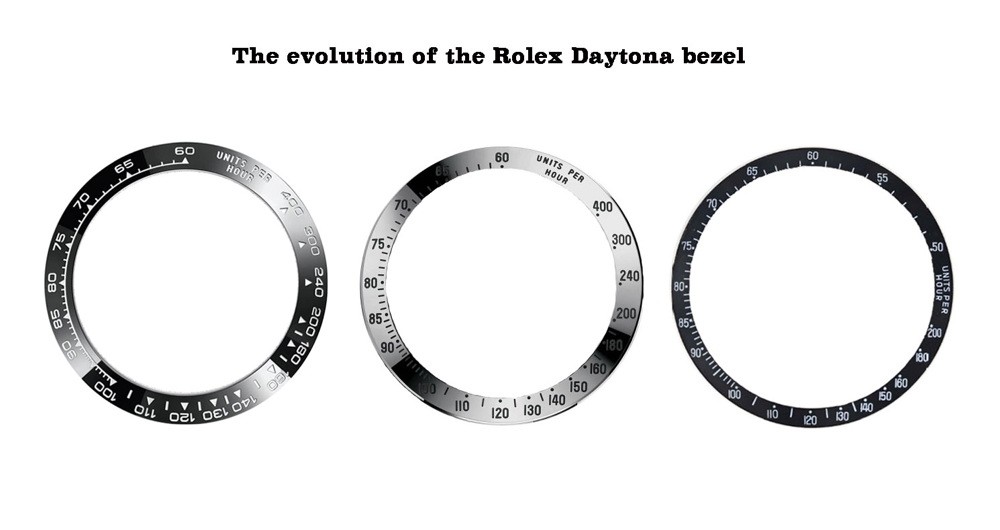
In detail, the new Ref 1165oo LN, again with black colored sub dials. A hint to it’s iconic Rolex heritage!
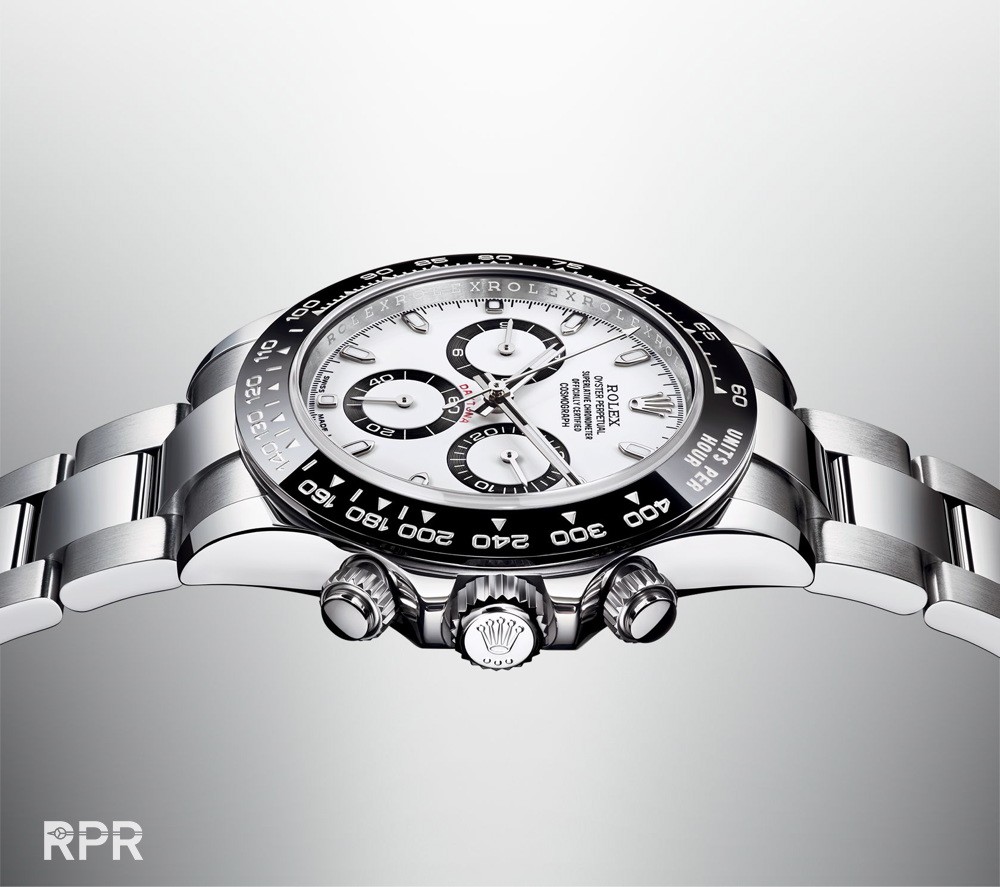
Rolex introduced during the 2016 BaselWorld show their new steel Oyster Rolex Daytona Cosmograph, read about it on RPR..
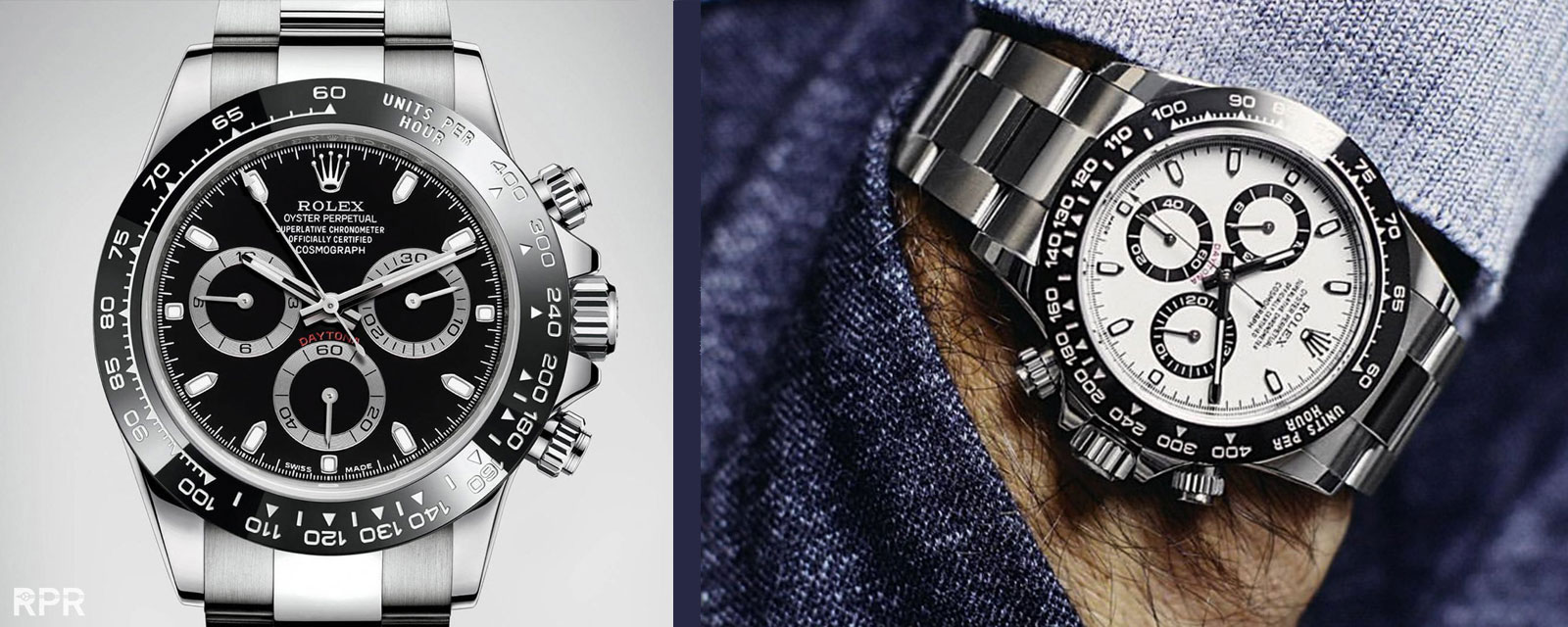
The new 2016 white gold Rolex Daytona with blue dial…
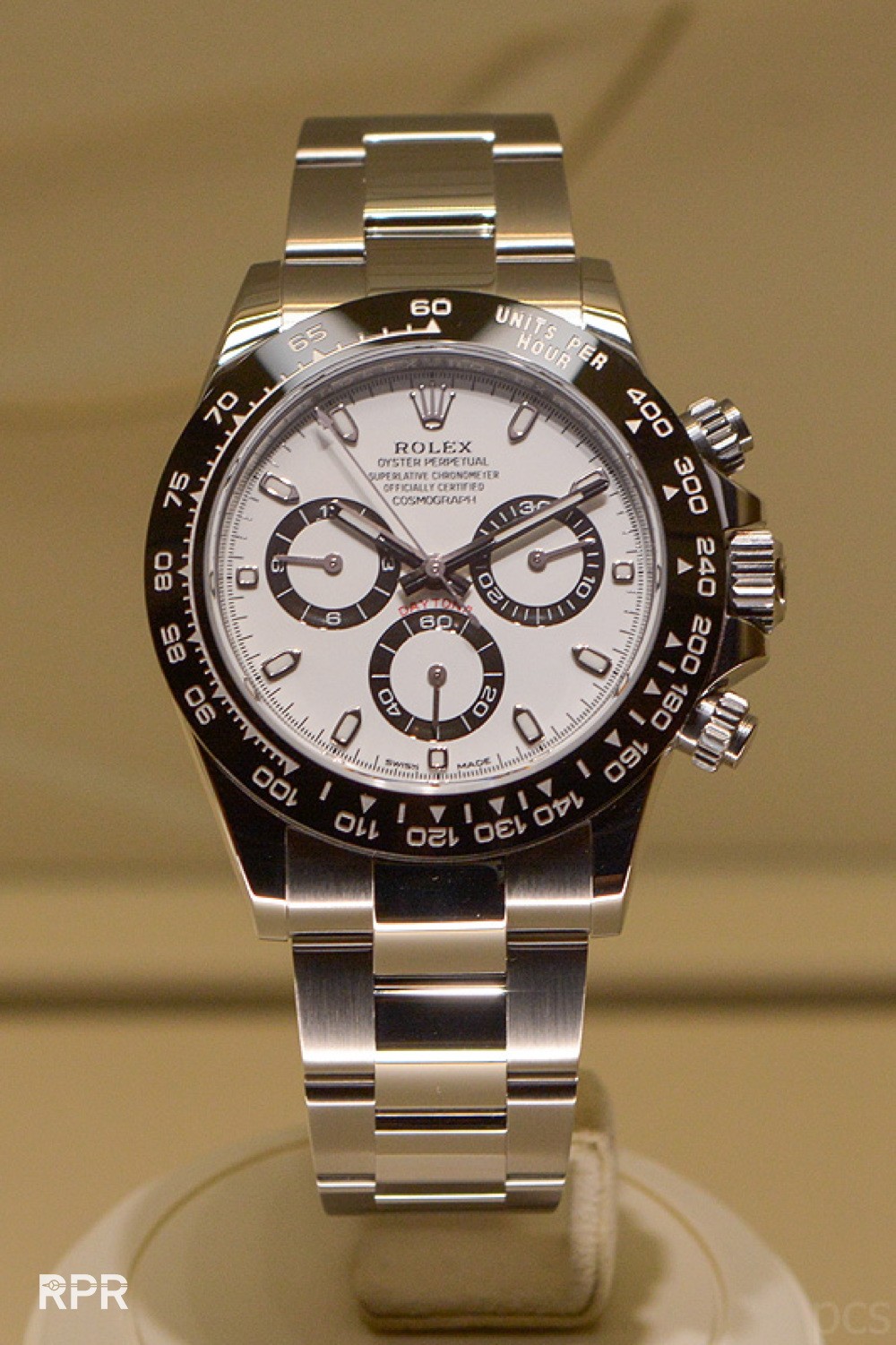
The new 2016 Rolex Daytona in all gold with green dial…
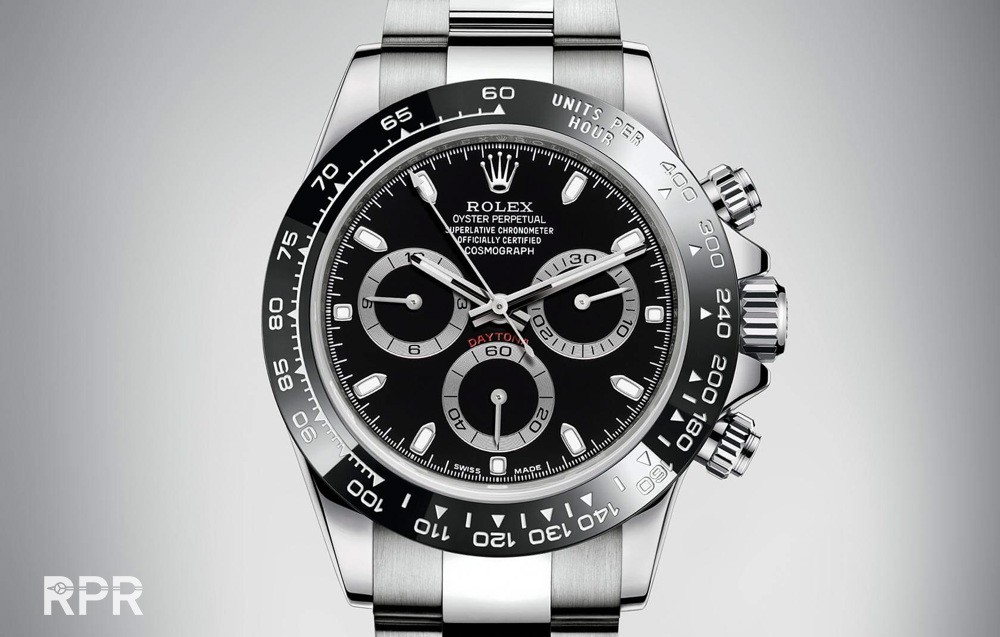
Let me end with the evolution of the Oyster Rolex Daytona from ref 6263, 16520 to Ref 116520 to the latest Ref 1165oo LN..
If you have any question or you perhaps own a early Rolex Daytona and you want to know more about your watch, contact me by using the CONTACT Button. I do hope you have enjoyed this RPReport!
Cheers,
Philipp
Photo credits: Pucci Papaleo & Stefano Mazzariol
If you want to learn more about the iconic Rolex Oyster Paul Newman, read also my article about the “Ghost PN”…
Many vintage Rolex watches have become legendary and next to James Bond Submariner it is certainly the Paul Newman version on a Rolex Daytona that has become hugely populair nowadays. Over the years lots of controversie has been around the Paul Newman dials. Even lawsuits from popular guys like musician John Mayer trying to sue a watch dealer and vise versa over counterfeit dials made international news. After the scam the Rolex market became much more educated and all little important details have been shared between collectors online so everybody finally knows that a ‘non step’ Paul Newman dial is fake. Originally the official dial maker Singer made a the minute track on the outside of the dial that was lower then the mid part, called a step. Many of these so called ‘Texas’ dials or later called ‘Mayer’ dials where sold and still once a while I receive an email if I can verify if such a dial is original or not. Nowadays Oyster Paul Newmans are hugely sought after and a must have in any great watch collection. The timeless cool look is just incredible and has been an example for many other watch brands.
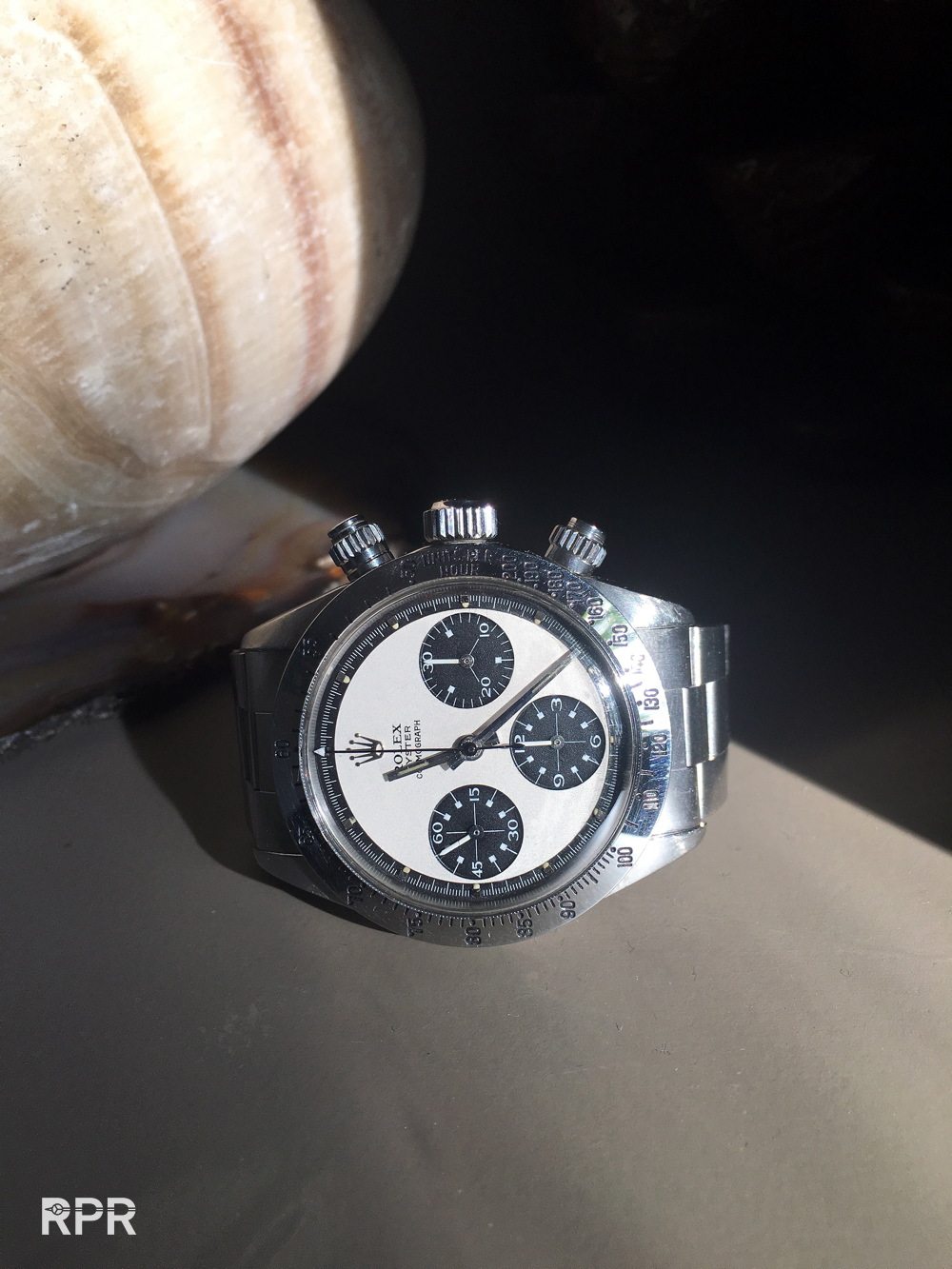
After this introduction I like to come to the subject I want to discuss today, the so called “Ghost” Oyster Paul Newman. I’ve already written an article about the phenomenon called “hidden daytona”. Go check it out on RPR. The Oyster Paul Newman dial versions are nowadays described in 3 different versions, the MK1, 1.5 and MK2. The difference between them is the old Rolex logo versus newer type and serif and non serif writing of the word Oyster and Cosmograph. At MK1.5 we see the non serif writing changed in a newer style Rolex writing with serifs but still with non serif old mk1 Oyster & Perpetual writing and finally the last version and imho the best looking one is the MK2 with serif Rolex, Oyster and Cosmograph writing, all in harmony…
With the last version, the MK1.5 & the MK2, we often see that when you inspect the dial up close and I mean really up close you see some odd details. In 2014 Christie’s offered a so far unknown Rolex Oyster Paul Newman with black base dial, red daytona and red minute track. Why was it unknown, because it didn’t had the writing as RCO ( Rolex Cosmograph Oyster ) but as ROC ( Rolex Oyster Cosmograph). This was something very unusual as so far a black 3 color Oyster dial which had ROC writing was a fake, a Mayer dial or so called Texas dial because the watch dealer who ‘made’ these, came from Texas. But this one was different, all the Rolex graphics where spot on as you can see below….
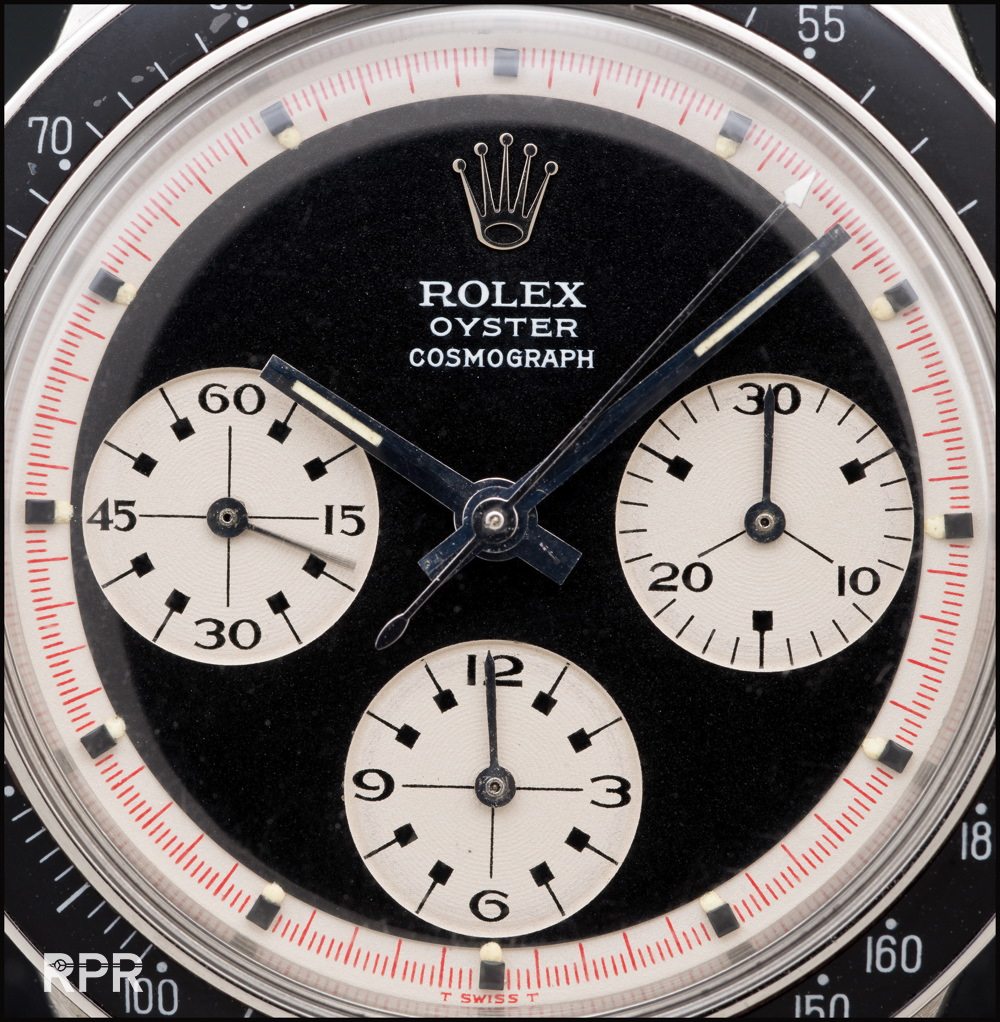
The 2.6 million serial number ref 6263 with ROC writing which got offered at Christies and finally sold for $ 480K….
And after seeing the following picture we come to the point what I wanted to show you guys. On the black dial is clearly visible the “stain” around the ROC writing. Some call it “halo”making it look like a “ghost” writing and it has been discussed and questioned in depth. Read it on all VRF…..
I myself found it at the beginning before I handled it in my own hands also very questionable because besides that stain, the dial looks to be relumed, the markers are not perfectly positioned and the all over patina was not matching. I wrote back then:
“To me, seeing from the pictures the all over patina is not matching, the Rolex print is too bright compared to the rest, besides that, it doesn’t help there’s a stain exactly where the print is, which is a bit later by graphics and the surface is not so porous as we used to see. Summarized, that’s a lot of uncertainty to say the least. A devils advocate would logically say that the surface is not so porous anymore because it has been ‘threatened’ on top and lost it’s grenee effect and got professionally reprinted. You say it’s a old 6262 dial where Singer or Rolex had removed all logo and then reprinted it like it is now. I say that’s not logic as the rest of the dial is not sharp anymore, so rest us to believe it was a used dial that was mounted in a pump daytona, sold as a 6262, got back to Rolex, they removed the print, reprinted it as a Oyster ( why not RCO as some 20+ others that are around so far), then re-cased it and put it in a Oyster case and gave it back to..? Hmm that’s why I wrote ‘scary’ as the logo is spot on so far as I can judge from the pictures but the whole ‘action’ doesn’t logically make sense, that’s all i’m saying “
When you focus on the ROC logo you see it’s almost 3 dimensional, fat printed laying on top of the dial and after seeing it in geneva at the preview of Christie’s I was also convinced this dial is original Rolex / Singer…
Although I had already written my article about the “hidden Daytona” we see with some MK2 Oyster Paul Newmans which you can reread over here my focus back then was much more on the fact that the “Daytona” writing was removed from an already existing 6262/6264 transitional non oyster Paul Newman then on the fact what happened at the top, with the ROC print.
You see in above pictures that the “daytona” writing was removed. At below you clearly see the A at the end on the dial.
This examples, a MK2 with 2.92 million serial is also having the erased daytona writing around the 6 o’clock sub dial.
Normally you don’t see the halo or stain with this ghost Oyster Newman, specially not on the white surface. Instead you see an all creamy dial with fat lume, fat writings and perfect tone when you look at it up close…
Now last week I got yet another Oyster Paul Newman from first owner. This time I had to travel to Austria to pick it up. The owner got it from the Rolex store in his town in 1974 and had it serviced twice (watchmaker marking show in the case back that this was done in Geneva in 1980 and 1982) when he had a spring replaced and top pusher. Never ever the dial changed nor did anybody else then Rolex had it in the service. The watch was still original as sold and i’m very happy with it…
After I came home I double check the quality of the dial up close so I removed the crystal and the bezel….
But then while moving it around under the spot I was examining it, I saw the ghost very clearly, see yourself. Around the top part of the ROC writing you crealy see the same “stain” or “halo” we saw on the black one from Christie’s….
And also the lower part you see clearly the old “daytona” writing which was removed by Singer…
The old, left over Rolex Ref 6262 / 6264 Paul Newman dials where reused for the more populair Oyster screw down Paul Newmans in the last version, MK2 from a round 2.92 million batch and 3.048 batch, actually the last Oyster Paul Newman batch.
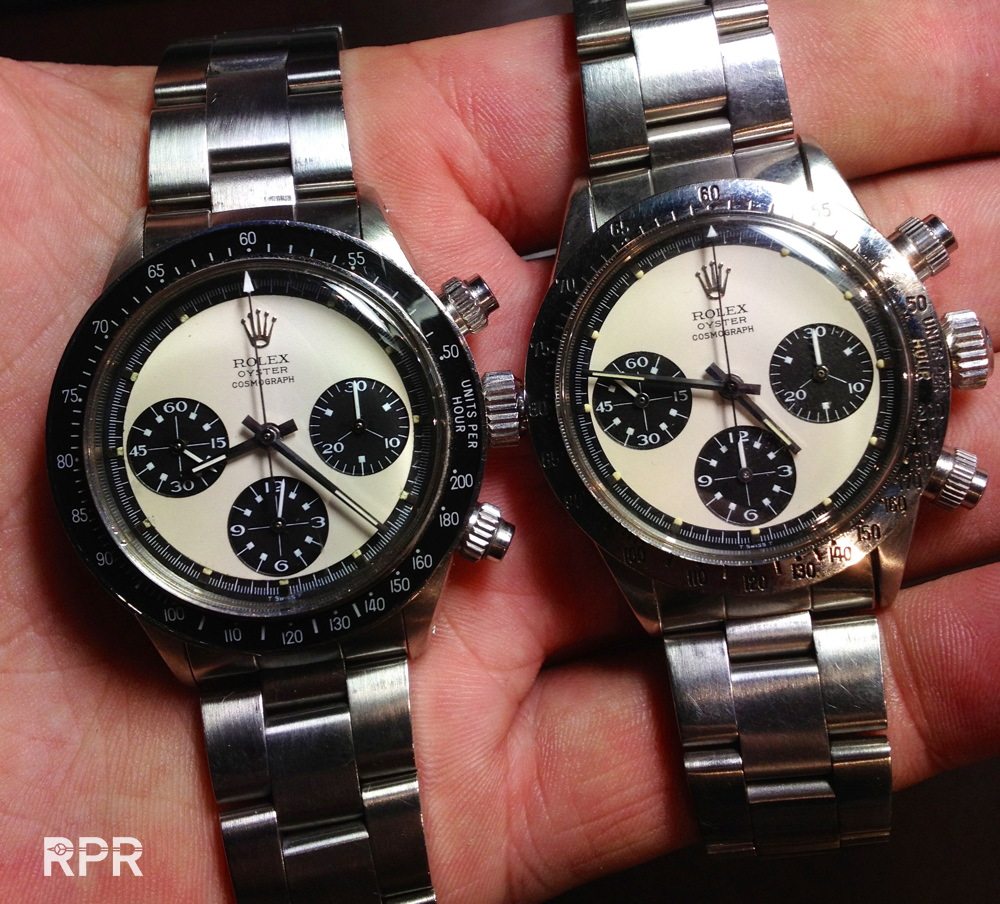
Beginning of the 70-ies rolex was having huge difficulties selling their Daytona’s. Besides that clients thought it was a bit to big, at their main market the U.S. the watch was related top the racetrack Daytona. The oil crisis in early 70-ies made Rolex wanna change the name Daytona from their dials. For Rolex and it’s dial maker Singer it would had been much easier to leave the red Daytona print on the dial. Last but not the least question is why did Rolex / Singer removed the total Rolex Cosmograph text you see below and not just added Oyster under the Rolex Cosmograph 6262/6264 dial?…
Because the typographies where using the ‘old style’ Rolex writing and had to change to the new style. For any designer this is VERY important that every graphic detail is modern and up to date, different then on previous examples and nowadays also so important for us collectors.
Now when we dive even a little deeper in the Rolex graphic we see above that the MK1.5 and MK2 are NOT using the same Rolex print. It looks kind of the same but actually it’s different when you compare it up close. I enlarge it for easy viewing…..
When you zoom in above and focus on the ” E ” of Rolex you see it’s totally different. On the final MK2 version the middle bar of the “E” is way longer then on the MK1.5….
From above line up first you immediately see that the MK1 print is clearly difference then the rest. Between the old thin Rolex print and the newer thick Rolex print is a huge difference. Next question after the fact that the MK2 are “HALO”is if the MK1.5 is also having this effect? With other words, did Singer take of the total print of an earlier donor Paul Newman dial to reprint a Oyster style MK1.5 logo on it?? Find below an picture I received of a french collector showing you that a MK1.5 is indeed also having a “HALO”….
Now to make it even more complicated, the MK1 with its old style Rolex logo and matching Cosmograph is NOT having any “Halo” or “Ghost” effect as you can see below from this example of italian collector Militos. The MK1 is the only Oyster Paul Newman that’s having a logo cliche print that never changed. Singer designed it and used it in the batch of Oyster PN with serial 2.085.xxx.
So to come to a final conclusion, only the Oyster Paul Newman MK1 dials are not having a erased Rolex logo. Find below a close up of a MK1 dial that is in a reference 6263 case that was sold by the Jeweler Ricciardi.

Rest me to say that there are no 100% rules in any theory as you see below. Singer added the “Oyster” print on the both RCO dials just under the “old” Rolex Cosmograph text. Nowadays we know these RCO’s are rare, much more rare then a white Oyster Paul Newman so these where an exception, maybe just made to test and see and then decided by Rolex not to continue with it because the word Daytona was still on the dial…
Both MK1 versions and both come from original owners, on top the black one and below the brown tropical one that sold for over 2 million recently at Phillips. My personal view on these RCO’s is that one needs to be 100% certain that a dial did not have the word “oyster” added afterwards to make me pay a huge premium. 
There are also RCO’s with newer Serif Rolex font, known as Mk2, here an exceptional examples of a great privat collector…
Known as non Oyster Paul Newman is this rare regular RCO Daytona. Befor you ask yourself what is so important about below Daytona, normally all regular Oyster dials have the printing Rolex Oyster Cosmograph, ROC and not RCO as seen below.
To end for today, here’s a perfect trio, the elegant, the exotic and the rough. For a true gentleman actually all he needs vintage Rolex wise ;)… Thanks for tuning in and I do hope you have enjoyed my report. If you have similar Daytona or you want to ask me a question, no problem use the “CONTACT” button on top of the page and send me an email. I’ll get back to you as soon as possible.
Back to my new MK2 Oyster Paul Newman with 3.048.xxx serial alias “The Ghost” Oyster Paul Newman Daytona.
Cheers,
Philipp

